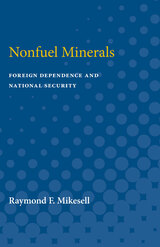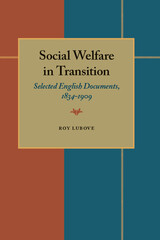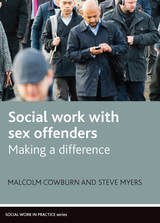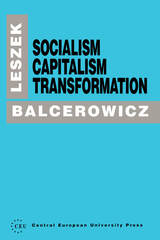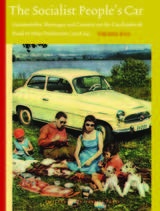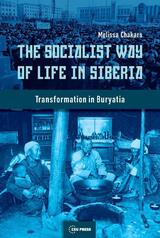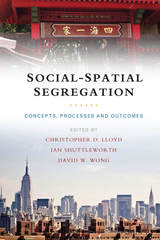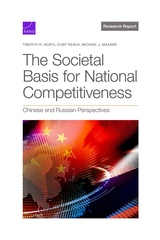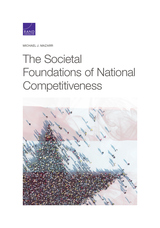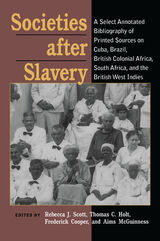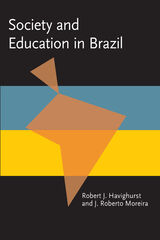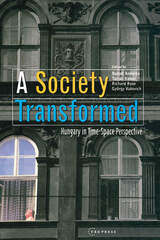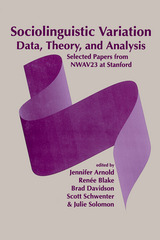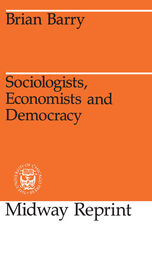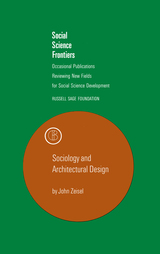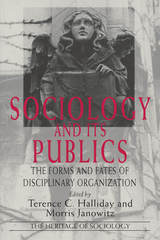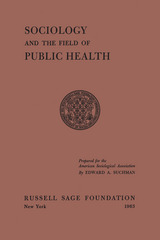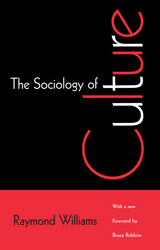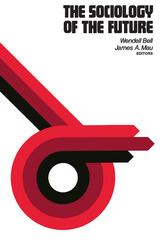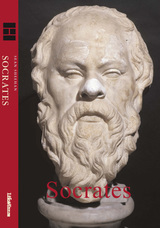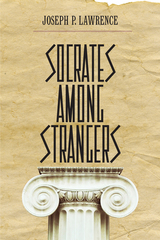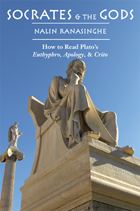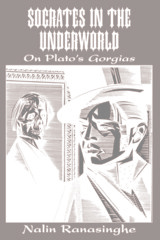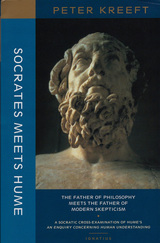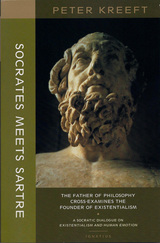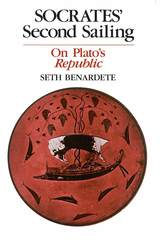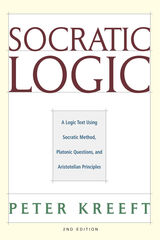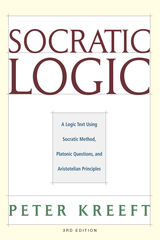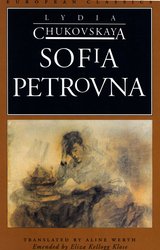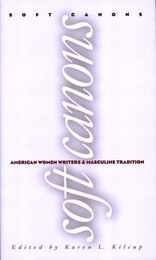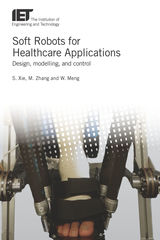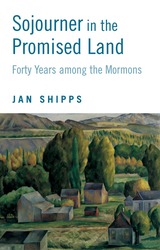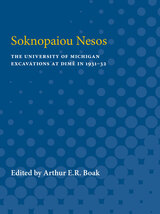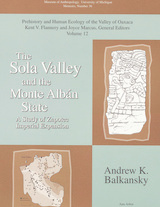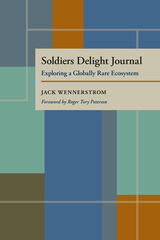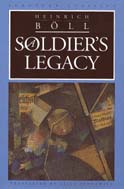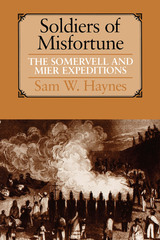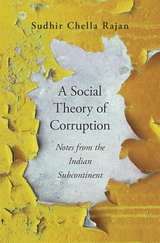 A Social Theory of Corruption: Notes from the Indian Subcontinent
Sudhir Chella Rajan
Harvard University Press, 2020 A social theory of grand corruption from antiquity to the twenty-first century.
In contemporary policy discourse, the notion of corruption is highly constricted, understood just as the pursuit of private gain while fulfilling a public duty. Its paradigmatic manifestations are bribery and extortion, placing the onus on individuals, typically bureaucrats. Sudhir Chella Rajan argues that this understanding ignores the true depths of corruption, which is properly seen as a foundation of social structures. Not just bribes but also caste, gender relations, and the reproduction of class are forms of corruption.
Using South Asia as a case study, Rajan argues that syndromes of corruption can be identified by paying attention to social orders and the elites they support. From the breakup of the Harappan civilization in the second millennium BCE to the anticolonial movement in the late nineteenth and early twentieth centuries, elites and their descendants made off with substantial material and symbolic gains for hundreds of years before their schemes unraveled.
Rajan makes clear that this grander form of corruption is not limited to India or the annals of global history. Societal corruption is endemic, as tax cheats and complicit bankers squirrel away public money in offshore accounts, corporate titans buy political influence, and the rich ensure that their children live lavishly no matter how little they contribute. These elites use their privileged access to power to fix the rules of the game—legal structures and social norms—benefiting themselves, even while most ordinary people remain faithful to the rubrics of everyday life.
 The Social Theory of Practices: Tradition, Tacit Knowledge, and Presuppositions
Stephen Turner
University of Chicago Press, 1994 The concept of "practices"—whether of representation, of political or scientific traditions, or of organizational culture—is central to social theory. In this book, Stephen Turner presents the first analysis and critique of the idea of practice as it has developed in the various theoretical traditions of the social sciences and the humanities.
Understood broadly as a tacit understanding "shared" by a group, the concept of a practice has a fatal difficulty, Turner argues: there is no plausible mechanism by which a "practice" is transmitted or reproduced. The historical uses of the concept, from Durkheim to Kripke's version of Wittgenstein, provide examples of the contortions that thinkers have been forced into by this problem, and show the ultimate implausibility of the idea.
Turner's conclusion sketches a picture of what happens when we do without the notion of a shared practice, and how this bears on social theory and philosophy. It explains why social theory cannot get beyond the stage of constructing fuzzy analogies, and why the standard constructions of the contemporary philosophical problem of relativism depend upon this defective notion. This first book-length critique of practice theory is sure to stir discussion and controversy in a wide range of fields, from philosophy and science studies to sociology, anthropology, literary studies, and political and legal theory.
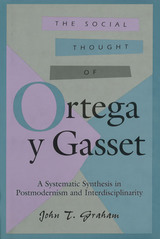 The Social Thought of Ortega y Gasset: A Systematic Synthesis in Postmodernism and Interdisciplinarity
John T. Graham
University of Missouri Press, 2001
The Social Thought of Ortega y Gasset is the third and final volume of John T. Graham's massive investigation of the thought of Ortega, the renowned twentieth-century Spanish essayist and philosopher. This volume concludes the synthetic trilogy on Ortega's thought as a whole, after previous studies of his philosophy of life and his theory of history.
As the last thing on which he labored, Ortega's social theory completed what he called a "system of life" in three dimensions—a unity in the plurality of philosophy, history, and sociology as three fundamental disciplines that enter into and overlap each other and other humanities. In this volume, Graham investigates Ortega's social thought as expressed in his central work, Man and People, and in several pragmatic fields (politics, culture, education, and religion), interpreting it all in terms of comprehensive categories of postmodernism and interdisciplinarity. While others have studied Ortega's social thought and recently his postmodernity, no one has done so in the context of his thought as a whole or by such a variety of methods.
The "unity in plurality" of Ortega's system is evident in the broad and varied structure of his sociology, which he intended to serve for postmodern times. His own postmodernism was rooted in Nietzsche but also in the pragmatism—from James, Peirce, and Dewey—that informs all parts of this trilogy.
Ortega was the first educator with an interdisciplinary theory and practice—another aspect of the "unity in plurality" of his system. He found inspiration in both ancient and modern precedents for what he saw as a postmodern method of investigating themes and problems that are common to all the human sciences. Innovations at his Institute of Humanities were early postmodern precedents for a new interdisciplinary social method for use by specialists in a variety of fields. All of those interested in Ortega can utilize such methods to elucidate his thought as a whole as well as to pursue their own collaborative work.
Home Complete Catalog Order Information Search
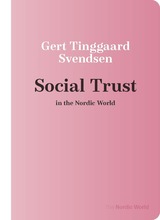 Social Trust in the Nordic World
Gert Tinggaard Svendsen and Christian Bjørnskov
University of Wisconsin Press, 2023 Study after study has shown that Scandinavia is the most trusting region in the world. Danes in particular trust other people and organizations—including strangers, businesses, governments, law enforcement, and media—more than the citizens of any other country. And countries with deep pools of social trust are populated by individuals who cooperate with each other in ways that allow public and private institutions to function more efficiently and cheaply.
Is the Nordic countries’ high level of social trust just as important for creating prosperity and happiness within a population as other, more tangible economic factors? If so, where does this stock of social trust in Scandinavia come from? Does it help to explain the development of the universal welfare states and their surprisingly high business competitiveness? Can other nations learn from the region and apply that knowledge to settings where social trust levels are low or in danger of being eroded?
Social trust has proven economic value, and Gert Tinggaard Svendsen warns that its benefits should never be taken for granted. Trust can dissolve and vanish quickly, and once gone, it is very difficult to rebuild. Governments and corporations are gradually increasing their control over people’s public and private lives, with predictably worrying results. When people feel taken advantage of or lied to, public confidence evaporates. Since strong social cohesion drives long-term prosperity, Nordic exceptionalism on maintaining and restoring trust offers valuable lessons.
The Social Turn in Second Language Acquisition
David Block
Georgetown University Press, 2003 David Block asks the question "What is second language acquisition (SLA)?" by offering an extended critique of one of the main theoretical approaches to second language acquisition: the "Input-Interaction-Output" model. He argues that a more interdisciplinary and socially informed approach to SLA research is in order, and he draws on recent work in sociolinguistics as well as SLA research influenced by sociolinguistic and sociohistorical approaches to language and language learning. In so doing, he demonstrates that there is a need to broaden the horizons of second language acquisition. Finally, he offers some important thoughts on the future direction of SLA research, and includes an extensive bibliography.
The Social Use of Media: Cultural and Social Scientific Perspectives on Audience Research
Edited by Helena Bilandzic, Geoffroy Patriarche, and Paul J. Traudt
Intellect Books, 2012 This collection of essays provides an overview of research on the social uses of media. Drawing on long traditions in both cultural studies and the social sciences, it brings together competing research approaches usually discussed separately. The topics include up-to-date research on activity and interactivity, media use as a social and cultural practice, and participation in a cultural, political, and technological sense. This volume incorporates current audience and reception studies and makes a significant contribution to the development of interdisciplinary approaches to audience and user studies.
 Social Values and Poetic Acts: The Historical Judgment of Literary Work
Jerome J. McGann
Harvard University Press, 1988 What is the function of literature? Initially framed as a problem toward the end of the eighteenth century, this question has been posed with ever greater insistence throughout the nineteenth and twentieth centuries. During this period, the natural sciences and the human sciences have both staked claims to intellectual and moral authority, while literature—and poetry in particular—has experienced a serious crisis of legitimation. That embarrassment became acute in the 1970s and 1980s when Western literature, moving along various postmodern avenues, seemed to have turned against itself.
In Social Values and Poetic Acts, Jerome J. McGann addresses this predicament. He argues that during the past two centuries literature has turned to certain distinctively modern social practices, that it has undergone what Matthew Arnold termed a “crisis of life.” McGann’s thesis, a radical Left translation of Arnold, gathers the whole of the Western canon into an “antithetical discourse.” He calls for a comprehensive program of rehabilitation of literature, involving a radical reinterpretation of the literary history of the nineteenth and twentieth centuries. He also exhorts the scholarly and writing communities to rededicate themselves to an engaged and contestatory writing, interpretation, and teaching. In the course of the argument, he appropriates postmodernism and deconstruction into socially conscious forms of cultural work.
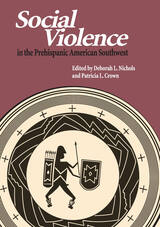 Social Violence in the Prehispanic American Southwest
Edited by Deborah L. Nichols and Patricia L. Crown
University of Arizona Press, 2008 Spontaneous acts of violence born of human emotions like anger or greed are probably universal, but social violence—violence resulting from social relationships within and between groups of people—is a much more complex issue with implications beyond archaeology. Recent research has generated multiple interpretations about the forms, intensity, and underlying causes of social violence in the ancient Southwest. Deborah L. Nichols and Patricia L. Crown have gathered nine contributions from a variety of disciplines to examine social violence in the prehispanic American Southwest. Not only offering specific case studies but also delving into theoretical aspects, this volume looks at archaeological interpretations, multidisciplinary approaches, and the implications of archaeological research for Native peoples and how they are impacted by what archaeologists say about their past. Specific chapters address the impacts of raiding and warfare, the possible origins of ritual violence, the evidence for social violence manifested in human skeletal remains, the implications of witchcraft persecution, and an examination of the reasons behind apparent anthropophagy. There is little question that social violence occurred in the American Southwest. These contributions support the need for further discussion and investigation into its causes and the broader implications for archaeology and anthropology.
CONTENTS
1. Introduction
Patricia Crown and Deborah Nichols
2. Dismembering the Trope: Imagining Cannibalism in the Ancient Pueblo World
Randall H. McGuire and Ruth Van Dyke
3. An Outbreak of Violence and Raiding in the Central Mesa Verde Region in the 12th Century AD
Brian R. Billman
4. Chaco Horrificus?
Wendy Bustard
5. Inscribed in the Body, Written in Bones: The Consequences of Social Violence at La Plata
Debra L. Martin, Nancy Akins, Bradley Crenshaw, and Pamela K. Stone
6. Veneration or Violence: A Study of Variations in Patterns of Human Bone Modification at La Quemada
Ventura R. Pérez, Ben A. Nelson, and Debra L. Martin
7. Witches, Practice, and the Context of Pueblo Cannibalism
William H. Walker
8. Explanation vs. Sensation: The Discourse of Cannibalism at Awat’ovi
Peter Whiteley
9. Devouring Ourselves
George J. Armelagos
References Cited
About the Contributors
Index
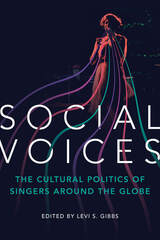 Social Voices: The Cultural Politics of Singers around the Globe
Edited by Levi S. Gibbs
University of Illinois Press, 2023 Singers generating cultural identity from K-Pop to Beverly Sills Around the world and across time, singers and their songs stand at the crossroads of differing politics and perspectives. Levi S. Gibbs edits a collection built around the idea of listening as a political act that produces meaning. Contributors explore a wide range of issues by examining artists like Romani icon Esma Redžepova, Indian legend Lata Mangeshkar, and pop superstar Teresa Teng. Topics include gendered performances and the negotiation of race and class identities; the class-related contradictions exposed by the divide between highbrow and pop culture; links between narratives of overcoming struggle and the distinction between privileged and marginalized identities; singers’ ability to adapt to shifting notions of history, borders, gender, and memory in order to connect with listeners; how the meanings we read into a singer’s life and art build on one another; and technology’s ability to challenge our ideas about what constitutes music. Cutting-edge and original, Social Voices reveals how singers and their songs equip us to process social change and divergent opinions. Contributors: Christina D. Abreu, Michael K. Bourdaghs, Kwame Dawes, Nancy Guy, Ruth Hellier, John Lie, Treva B. Lindsey, Eric Lott, Katherine Meizel, Carol A. Muller, Natalie Sarrazin, Anthony Seeger, Carol Silverman, Andrew Simon, Jeff Todd Titon, and Elijah Wald
Social Welfare in Transition: Selected English Documents, 1834-1909
Roy Lubove
University of Pittsburgh Press, 1966 Roy Lubove provides an analysis of three landmark documents in British social history: Edwin C. Chadwick's 1842 report he Sanitary Condition of the Labouring Population of England; the 1834 Report of the Royal Poor Law Commission; and the majority and minority Reports of the Royal Poor Law Commission of 1909. Chadwick's work was instrumental to developing modern public health and sanitary controls. The 1834 report shaped attitudes toward poverty and poor law institutions for nearly a century. The 1909 reports suggested major revisions to the 1834 document, particularly in transferring responsibility to local government, away from private institutions. Taken together, the three documents illustrate changing perceptions of poverty, the organization of welfare institutions, and the role of the state.
Social Work Research: Methods for the Helping Professions
Edited by Norman A. Polansky
University of Chicago Press, 1975 Shortly after its publication in 1960, the original edition of Social Work Research became widely recognized as the standard compendium on method and methodology in social work research. For this new edition, the selections have been completely revised, new essays have been added, and new developments in the field since the first edition have been thoroughly documented.
Social Work with Sex Offenders: Making a Difference
Steve Myers and Malcolm Cowburn
Bristol University Press, 2016 Providing a valuable explanation of current theory and evidence as well as an emphasis on social work rather than psychological treatment, this book offers a practical and positive approach to working with people who have committed sexual offenses. Chapters address a variety of critical issues, from the emotional impacts of facing the sex offender and the importance of values and ethics in practice to public and academic understandings of sex offenders and sex crimes and key points in contemporary practice, including assessment, intervention, and worker support. Written in an accessible style and featuring exercises integrated throughout the book, Social Work with Sex Offenders will help students, practitioners, policy makers, and academics in and beyond the discipline of social work to reflect on theory, best practices, and the development of emotional resilience.
 The Social World of Batavia: Europeans and Eurasians in Colonial Indonesia
Jean Gelman Taylor
University of Wisconsin Press, 2009 In the seventeenth century, the Dutch established a trading base at the Indonesian site of Jacarta. What began as a minor colonial outpost under the name Batavia would become, over the next three centuries, the flourishing economic and political nucleus of the Dutch Asian Empire. In this pioneering study, Jean Gelman Taylor offers a comprehensive analysis of Batavia’s extraordinary social world—its marriage patterns, religious and social organizations, economic interests, and sexual roles. With an emphasis on the urban ruling elite, she argues that Europeans and Asians alike were profoundly altered by their merging, resulting in a distinctive hybrid, Indo-Dutch culture.
Original in its focus on gender and use of varied sources—travelers’ accounts, newspapers, legal codes, genealogical data, photograph albums, paintings, and ceramics—The Social World of Batavia, first published in 1983, forged new paths in the study of colonial society. In this second edition, Gelman offers a new preface as well as an additional chapter tracing the development of these themes by a new generation of scholars.
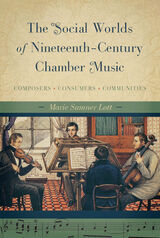 The Social Worlds of Nineteenth-Century Chamber Music: Composers, Consumers, Communities
Marie Sumner Lott
University of Illinois Press, 2018 Music played an important role in the social life of nineteenth-century Europe, and music in the home provided a convenient way to entertain and communicate among friends and colleagues. String chamber music, in particular, fostered social interactions that helped build communities within communities. Marie Sumner Lott examines the music available to musical consumers in the nineteenth century, and what that music tells us about their tastes, priorities, and activities. Her social history of chamber music performance places the works of canonic composers such as Schubert, Brahms, and Dvoøák in relation to lesser-known but influential peers. The book explores the dynamic relationships among the active agents involved in the creation of Romantic music and shows how each influenced the others' choices in a rich, collaborative environment. In addition to documenting the ways companies acquired and marketed sheet music, Sumner Lott reveals how the publication and performance of chamber music differed from that of ephemeral piano and song genres or more monumental orchestral and operatic works. Several distinct niche markets existed within the audience for chamber music, and composers created new musical works for their use and enjoyment. Insightful and groundbreaking, The Social Worlds of Nineteenth-Century Chamber Music revises prevailing views of middle-class influence on nineteenth-century musical style and presents new methods for interpreting the meanings of musical works for musicians both past and present.
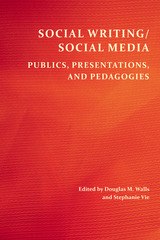 Social Writing/Social Media: Publics, Presentations, and Pedagogies
Douglas M. Walls
University Press of Colorado, 2018 Social media have been (for quite some time now) part of the fabric of our lives. But as with many new technologies, it often takes a while for us to be able to step back, assess the tool's impact, and consider what's next. This collection offers one of the first sets of scholarly work in our field that responds to social media's influence on both popular and extra-curricular writing as well as on scholarly communication. Too frequently, social media is dismissed as non-academic, unworthy of sustained attention by researchers. The authors featured here present compelling reasons why this oft-neglected form of writing deserves—and demands—continued academic response. Social Writing/Social Media: Publics, Presentations, and Pedagogies makes this contribution by examining the impact of social media on three writing-related themes: publics and audiences, presentation of self and groups, and pedagogy at various levels of higher education. The contributors to this collection urge readers to pay attention to an undertheorized aspect of writing online—the acts of composing that occur specifically in social-media spaces. Organized in three sections—social media and public audiences; social media and presentation; and social media and pedagogy—it builds on previous explorations of the role of multimodality in composition studies by extending ongoing conversations that have asked readers to expand notions of literacy in the twenty-first century. By addressing the wide range of composing activities that take place in social media and the rich variety of genres, audiences, stylistic choices, and pedagogical possibilities, this collection offers an important contribution to our understanding of pedagogy and practice in social media spaces.
 Social-Emotional Learning in English Language Teaching
Luis Javier Pentón Herrera and Janine J. Darragh
University of Michigan Press, 2024 In an era where the world feels increasingly interconnected yet divided, Social-Emotional Learning in English Language Teaching unveils the profound impact of incorporating social-emotional learning (SEL) into language education. With compelling narratives and relatable examples, the authors showcase how emotional intelligence, empathy, and well-being are not just buzzwords, but essential elements for thriving in today’s global community. Through the lens of language education, they introduce the concept of affective communicative competence and advocate for a practice of responsible well-being that aims to support the holistic well-being of educators and learners. Blending meticulously researched theory with practical applications, the book is structured to facilitate both comprehension and application through practical SEL activities or reflective questions. As a critical resource for educators, researchers, and policymakers aiming to enrich the language-learning landscape, Social-Emotional Learning in English Language Teaching equips practitioners with the tools to foster environments where social-emotional and linguistic growth can flourish in tandem.
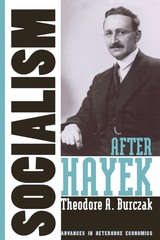 Socialism after Hayek
Theodore A. Burczak
University of Michigan Press, 2009 Socialism after Hayek recasts and reinvigorates the socialist quest for class justice by rendering it compatible with Hayek's social and economic theories. Theodore A. Burczak puts forth a conception of socialism from a postmodern perspective, drawing from the apparently opposing ideas of Marx and Hayek (the latter of whom achieved worldwide recognition in the twentieth century as a champion of the free market and fierce opponent of government interference in markets). Burczak sketches an institutional structure that would promote a democratic socialist notion of distributive justice and his own interpretation of Marx's notion of freely associated labor, while avoiding Hayek's criticisms of centrally planned socialism.
Burczak's version of market socialism is one in which privately owned firms are run democratically by workers, governments engage in ongoing redistribution of wealth to support human development, and markets are otherwise unregulated. Burczak poses this model of "free market socialism" against other models of socialism, especially those developed by John Roemer, Michael Albert, and Robin Hahnel.
Socialism: An Analysis of its Past and Future
Erzsébet Szalai
Central European University Press, 2005 In this short, but rich piece of work, Erzsébet Szalai offers a neo-socialist alternative to socialism (i.e. communist ruled state-socialism) and neo-capitalism. Drawing upon the fertile tradition of left-wing Hungarian Social Sciences, she offers her own theory of transitional society, suggesting that socialism was not an independent formation, but instead a society in transition. She relocates soviet-type societies on the semi-periphery of the capitalist world system. In addition she offers a critique of capitalism that pivots on the two connected issues of over production and ecological crisis. She makes the distinction between an anti-globalism critique and a globalization critique, locating herself in the latter. This work offers readers the opportunity to engage in a critique of capitalism that is organized along a new understanding of socialism itself.
 Socialism and Modernity
Peter Beilharz
University of Minnesota Press, 2009 This first collection of Peter Beilharz's highly influential thought traces the themes and problems, manifestations, and trajectories of socialism and modernity as they connect and shift over a twenty-year period. Woven throughout Beilharz's analysis is the urgent question of modern utopia: how do we imagine freedom and equality in modernity? The essays in this volume explore the relationship between socialism and modernity across the United States, Europe, and Australia from the mid-1980s to the turn of the twenty-first century, a time that witnessed the global triumph of capitalism and the dramatic turn away from Marxism and socialism to modernity as the dominant perspective. According to Beilharz, we have seen the expansion of a kind of Weberian Marxism, with the concept of revolution giving way to the idea of pluralized forms of power and the idea of rupture giving way to the postmodern sense of difference. These changes come together with the discourse of modernism, both aesthetic and technological. Socialism and modernity, Beilharz argues, are fundamentally interrelated. In correcting the conflation of Marxism, Bolshevism, and socialism that occludes contemporary political thinking, he reopens a space for discussion of what socialist politics might look like now-in the postcommunist-postcolonial-postmodern moment.
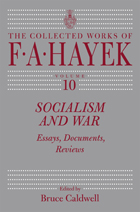 Socialism and War: Essays, Documents, Reviews
F. A. Hayek
University of Chicago Press, 1997 Throughout the twentieth century socialism and war were intimately connected. The unprecedented upheavals wrought by the two world wars and the Great Depression provided both opportunity and impetus for a variety of socialist experiments. This volume in The Collected Works of F. A. Hayek documents the evolution of Hayek's thought on socialism and war during the dark decades of the 1930s and 1940s.
Opening with Hayek's arguments against market socialism, the volume continues with his writings on the economics of war, many in response to the proposals made in John Maynard Keynes's famous pamphlet, How to Pay for the War. The last section presents articles that anticipated The Road to Serfdom, Hayek's classic meditation on the dangers of collectivism. An appendix contains a number of topical book reviews written by Hayek during this crucial period, and a masterful introduction by the volume editor, Bruce Caldwell, sets Hayek's work in context.
Socialism and War will interest not just fans of The Road to Serfdom, but anyone concerned with the ongoing debates over the propriety of government intervention in the economy.
"When he wrote The Road to Serfdom, [Hayek's] was a voice in the wilderness. Now the fight [has] been taken up by people all over the world, by institutions and movements, and the ideas that seemed so strange to many in 1944 can be found from scholarly journals to television programs."—Thomas Sowell, Forbes
"Intellectually [Hayek] towers like a giant oak in a forest of saplings."—Chicago Tribune
"Each new addition to The Collected Works of F. A. Hayek, the University of Chicago's painstaking series of reissues and collections, is a gem."—Liberty on Volume IX of The Collected Works of F. A. Hayek
 Socialism, Capitalism and Alternatives: Area Studies and Global Theories
Edited by Peter J. S. Duncan and Elisabeth Schimpfössl
University College London, 2019 In 1989, the Berlin Wall came down. Two years later, the Soviet Union disintegrated. The collapse of Communism in Eastern Europe and the Soviet Union discredited the idea of socialism for generations to come. It was seen as representing the final and irreversible victory of capitalism. This triumphant dominance was barely challenged until the 2008 financial crisis threw the Western world into a state of turmoil.
Through analysis of post-Socialist Russia and Central and Eastern Europe, as well as of the United Kingdom, China, and the United States, Socialism, Capitalism and Alternatives confronts the difficulty we face in articulating alternatives to capitalism, socialism, and threatening populist regimes. Beginning with accounts of the impact of capitalism on countries left behind by the planned economies, the book moves on to consider how China has become a beacon of dynamic economic growth, aggressively expanding its global influence. The final section of the book poses alternatives to the ideological dominance of neoliberalism in the West.
Socialism, Capitalism, Transformation
Leszek Balcerowicz
Central European University Press, 1995 This volume gathers together essays on the theme of economic transition in Central and Eastern Europe, written by the former Polish Minister of Finance. In it, the author summarizes the research on institutions, institutional change and human behaviour that he has undertaken since the late 1970s. He addresses such issues as the socialist market economy, reformability of the Soviet-type economic system, democratization and market-orientated reform in Central and Eastern Europe, and the Polish model of economic reform.
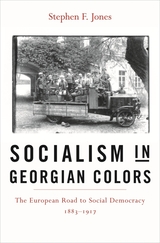 Socialism in Georgian Colors: The European Road to Social Democracy, 1883–1917
Stephen F. Jones
Harvard University Press, 2005 Georgian social democracy was the most successful social democratic movement in the Russian Empire. Despite its small size, it produced many of the leading revolutionary figures of 1917, including Irakli Tsereteli, Karlo Chkheidze, Noe Zhordania, and Joseph Stalin. In the first of two volumes, Stephen Jones writes the first history in English of this undeservedly neglected national movement, which represented one of the earliest examples of European social democracy at the turn of the twentieth century.
Georgian social democracy was part of the Russian social democracy from which Bolshevism and Menshevism emerged. But innovative theoretical programs and tactics led Georgian social democracy down an independent path. The powerful Georgian organization united all native classes behind it, and it set a remarkable precedent for many of the anti-colonial nationalist movements of the twentieth century. At the same time, Georgian social democracy was committed to a "European" path, a "third way" that attempted to combine grassroots democracy, private manufacturing, and private land ownership with socialist ideology.
One of the few Western historians fluent in Georgian, Jones fills major gaps in the history of revolutionary and national movements of the Russian Empire.
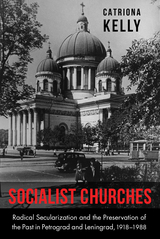 Socialist Churches: Radical Secularization and the Preservation of the Past in Petrograd and Leningrad, 1918–1988
Catriona Kelly
Northern Illinois University Press, 2016 In Russia, legislation on the separation of church and state in early 1918 marginalized religious faith and raised pressing questions about what was to be done with church buildings. While associated with suspect beliefs, they were also regarded as structures with potential practical uses, and some were considered works of art. This engaging study draws on religious anthropology, sociology, cultural studies, and history to explore the fate of these “socialist churches,” showing how attitudes and practices related to them were shaped both by laws on the preservation of monuments and anti-religious measures. Advocates of preservation, while sincere in their desire to save the buildings, were indifferent, if not hostile, to their religious purpose. Believers, on the other hand, regarded preservation laws as irritants, except when they provided leverage for use of the buildings by church communities. The situation was eased by the growing rapprochement of the Orthodox Church and Soviet state organizations after 1943, but not fully resolved until the Soviet Union fell apart.
Based on abundant archival documentation, Catriona Kelly’s powerful narrative portrays the human tragedies and compromises, but also the remarkable achievements, of those who fought to preserve these important buildings over the course of seven decades of state atheism. Socialist Churches will appeal to specialists, students, and general readers interested in church history, the history of architecture, and Russian art, history, and cultural studies.
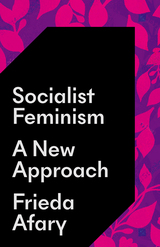 Socialist Feminism: A New Approach
Frieda Afary
Pluto Press, 2022 What is socialist feminism and why is it needed to fight the global rise of authoritarianism and fascism? Frieda Afary brings the insights gained through her study of feminist philosophy, her international activism, and her work in community education as a public librarian in Los Angeles, offering a bold new vision of an alternative to capitalism, racism, sexism, heterosexism, and alienation. Socialist Feminism: A New Approach reclaims theories of women’s oppression through a return to humanism, enriched by social reproduction theories, Black feminist intersectionality, abolitionism, queer theories, Marxist-Humanism, and the author’s own experiences as an Iranian American feminist, scholar, and activist. She looks at global developments in gender relations since the 1980s, the impact of the Covid-19 pandemic, the distinct features of twenty-first-century authoritarianism, and current struggles against it, drawing out lessons for revolutionary theorizing, organizing, and international solidarity including the #MeToo and Black Lives Matter movements. This book also contains a study guide that transforms it into a useful pedagogical tool for teachers and activists.
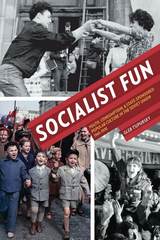 Socialist Fun: Youth, Consumption, and State-Sponsored Popular Culture in the Soviet Union, 1945–1970
Gleb Tsipursky
University of Pittsburgh Press, 2015 Most narratives depict Soviet Cold War cultural activities and youth groups as drab and dreary, militant and politicized. In this study Gleb Tsipursky challenges these stereotypes in a revealing portrayal of Soviet youth and state-sponsored popular culture.
The primary local venues for Soviet culture were the tens of thousands of klubs where young people found entertainment, leisure, social life, and romance. Here sports, dance, film, theater, music, lectures, and political meetings became vehicles to disseminate a socialist version of modernity. The Soviet way of life was dutifully presented and perceived as the most progressive and advanced, in an attempt to stave off Western influences. In effect, socialist fun became very serious business. As Tsipursky shows, however, Western culture did infiltrate these activities, particularly at local levels, where participants and organizers deceptively cloaked their offerings to appeal to their own audiences. Thus, Soviet modernity evolved as a complex and multivalent ideological device.
Tsipursky provides a fresh and original examination of the Kremlin’s paramount effort to shape young lives, consumption, popular culture, and to build an emotional community—all against the backdrop of Cold War struggles to win hearts and minds both at home and abroad.
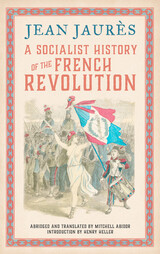 A Socialist History of the French Revolution
Jean Jaurés
Pluto Press, 2021 One of the most influential accounts of the French Revolution ever published, now available for the first time in paperback.
Jean Jaurès was the celebrated French Socialist Party leader, assassinated in 1914 for trying to use diplomacy and industrial action to prevent the outbreak of war. Published just a few years before his death, his magisterial A Socialist History of the French Revolution has endured for over a century.
Written in the midst of his activities as leader of the Socialist Party and editor of its newspaper, L'Humanite, Jaurès intended the book to serve as both a guide and an inspiration to political activity; even now it can serve to do just that.
Jaurès's verve, originality, and willingness to criticize all players in this epic drama make this a truly moving addition to the shelf of great books on the French Revolution. Mitchell Abidor's abridged translation of Jaurès's original six volumes makes this exceptional work truly accessible to an Anglophone audience.
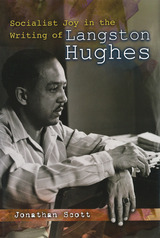 Socialist Joy in the Writing of Langston Hughes
Jonathan Scott
University of Missouri Press, 2007 One of the foremost African American writers of his generation, Langston Hughes waged a tireless campaign against racial oppression that defied the anticommunist currents of cold war America. Socialist Joy in the Writing of Langston Hughes examines his writing during this period to show that his approach to the main philosophical currents of the era was original, dynamic, and systematic in ways that most scholars have yet to appreciate.
Jonathan Scott has written the first book-length study to analyze the extraordinary range of Hughes’s creative output, showing that his unassailable reputation as one of America’s finest “folk poets” barely scratches the surface of his oeuvre. Scott offers a robust account of the relations between Hughes and political activism to show that Hughes’s direct involvement with the U.S. socialist movement of the 1920s and 1930s was largely responsible for the variety of his writing. Scott also contends that the goal of overthrowing white oppression produced a “socialist joy” that would express itself repeatedly in Hughes’s work during the anticommunist crusades of the 1950s and 1960s.
In his provocative study, Scott explores four areas of Hughes’s intellectual work: his relationship with Afro-Caribbean arts, Soviet Russia, and the Harlem Renaissance; his postwar newspaper writing for the African American press; his extensive cultural work as an anthologist; and his writings for young people. Through these analyses, Scott proposes the concept of “red, white, and black” as an alternative paradigm for appreciating Hughes in particular and the American scene in general.
Scott views Hughes not simply as a great author but as an American working-class intellectual trickster whose eccentric projects require a redefinition of the very concept of authorship. By focusing on Hughes’s intellectual method, Scott also contests the notion of reducing all African Americans to one undifferentiated social status beneath that of any class within the white oppressing group—a hallmark of racial oppression that has diminished, in the U.S. academy, Hughes’s international status.
As Scott persuasively argues, it is only through an understanding of Hughes’s literary method that we can undertake a thorough account of his prolific production during the cold war era. His book situates Hughes’s life and work in their proper contexts, both reconfirming Hughes’s reputation as an intellectual of the American Left and establishing his long-denied place in American studies as the most well-rounded writer of his time.
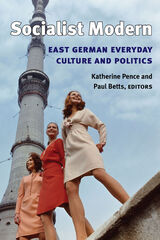 Socialist Modern: East German Everyday Culture and Politics
Katherine Pence & Paul Betts, editors
University of Michigan Press, 2008 The reunification of Germany in 1989 may have put an end to the experiment in East German communism, but its historical assessment is far from over. Where most of the literature over the past two decades has been driven by the desire to uncover the relationship between power and resistance, complicity and consent, more recent scholarship tends to concentrate on the everyday history of East German citizens. This volume builds on the latest literature by exploring the development and experience of life in East Germany, with a particular view toward addressing the question: What did modernity mean for the East German state and society? As such, the collection moves beyond the conceptual divide between state-level politics and everyday life to sharply focus on the specific contours of the GDR's unique experiment in Cold War socialism. What unites all the essays is the question of how the very tensions around "socialist modernity" shaped the views, memories, and actions of East Germans over four decades. "An impressive volume drawing together rich, diverse essays by some of the most interesting, well-known, and experienced scholars on the GDR in the field, on both sides of the Atlantic."
---Dr. Jan Palmowski, Senior Lecturer in European Studies at King's College London, and Review Editor for German History "Delving into many sides of the GDR modern, Pence and Betts present both new empirical evidence and offer insightful theoretical perspectives. The idea of the 'Socialist Modern' provides an excellent conceptual framework; the focus on culture fills a hole in the literature, the introduction is theoretically sophisticated and well-grounded in the historiography, and the span and heterogeneity of the articles are impressive."
---Donna Harsch, Associate Professor of History, Carnegie Mellon University Katherine Pence is Assistant Professor of History, Baruch College, City University of New York. Paul Betts is Reader in Modern German History, University of Sussex, Brighton, England. Contributors
Daphne Berdahl
Paul Betts
Alon Confino
Greg Eghigian
Dagmar Herzog
Young-Sun Hong
Thomas Lindenberger
Alf Lüdtke
Ina Merkel
Katherine Pence
Judd Stitziel
Dorothee Wierling
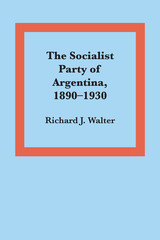 The Socialist Party of Argentina, 1890–1930
By Richard J. Walter
University of Texas Press, 1977 In the early part of the twentieth century, Argentina's Socialist Party became the largest and most effective socialist organization in Latin America. Richard J. Walter's interpretive study begins with the party's origins in the 1890s, traces its development through 1912, and then offers a comprehensive analysis of its activities and programs during the almost two decades of civilian, democratic government that ended with the military coup of 1930. His aim has been to provide a detailed case study of a Latin American political party within a specific historical context. The work gives particular attention to the nature of party leadership, internal party organization, attempts to win the support of the Argentine working class, party activities in national elections and the National Congress, and internal disputes and divisions. In discussing these topics, Walter draws heavily on government documents, including national and municipal censuses, ministerial reports, and the Argentine Congressional Record. He also makes extensive use of national and party newspapers and journals, political memoirs, and collections of essays by party leaders. Walter concludes that the party enjoyed relative electoral and legislative success because of efficient organization, capable leadership, and specific, well-reasoned programs. On the other hand, it failed to create a firm working-class base or to extend its influence much beyond Buenos Aires, mainly because of its inability to relate adequately to the needs of the proletariat and to the growth of nationalist sentiment. The analysis of these successes and failures also provides an important background for understanding the rise to power of Juan Perón and Peronism.
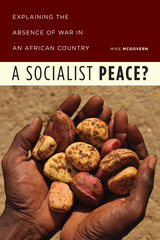 A Socialist Peace?: Explaining the Absence of War in an African Country
Mike McGovern
University of Chicago Press, 2017 For the last twenty years, the West African nation of Guinea has exhibited all of the conditions that have led to civil wars in other countries, and Guineans themselves regularly talk about the inevitability of war. Yet the country has narrowly avoided conflict again and again. In A Socialist Peace?, Mike McGovern asks how this is possible, how a nation could beat the odds and evade civil war.
Guinea is rich in resources, but its people are some of the poorest in the world. Its political situation is polarized by fiercely competitive ethnic groups. Weapons flow freely through its lands and across its borders. And, finally, it is still recovering from the oppressive regime of Sékou Touré. McGovern argues that while Touré’s reign was hardly peaceful, it was successful—often through highly coercive and violent measures—at establishing a set of durable national dispositions, which have kept the nation at peace. Exploring the ambivalences of contemporary Guineans toward the afterlife of Touré’s reign as well as their abiding sense of socialist solidarity, McGovern sketches the paradoxes that undergird political stability.
The Socialist People's Car: Automobiles, Shortages and Consent in the Czechoslovak Road to Mass Production
Valentina Fava
Amsterdam University Press, 2013 From 1918 to 1968, Czechoslovak auto manufacturing was marked by the growing influence of the American model of mass production and by the Sovietization of Czechoslovak society and industry. In this book, Valentina Fava examines how the stratification of foreign technical and organizational knowledge shaped Czechoslovak car production practices, contributing to the formation of a specific technical and organizational culture. This book studies and raises questions typical of company cases in business history and relative to Škoda corporate structure, performance, production processes, and product quality.
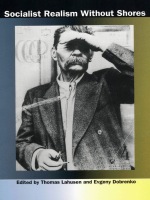 Socialist Realism without Shores
Thomas Lahusen and Evgeny Dobrenko, eds.
Duke University Press, 1997 Socialist Realism without Shores offers an international perspective on the aesthetics of socialist realism—an aesthetic that, contrary to expectations, survived the death of its originators and the demise of its original domain. This expanded edition of a special issue of the South Atlantic Quarterly brings together scholars from various parts of the globe to discuss socialist realism as it appears across genres in art, architecture, film, and literature and across geographic divides—from the "center," Russia, to various points at the "periphery"—China, Germany, France, Poland, remote republics of the former USSR, and the United States. The contributors here argue that socialist realism has never been a monolithic art form. Essays demonstrate, among other things, that its literature could accommodate psychoanalytic criticism; that its art and architecture could affect the aesthetic dictates of Moscow that made "Soviet" art paradoxically heterogeneous; and that its aesthetics could accommodate both high art and crafted kitsch. Socialist Realism without Shores also addresses the critical discourse provoked by socialist realism—Stalinist aesthetics, "anthropological" readings; ideology critique and censorship; and the sublimely ironic approaches adapted from sots art, the Soviet version of postmodernism. Contributors. Antoine Baudin, Svetlana Boym, Greg Castillo, Katerina Clark, Evgeny Dobrenko, Boris Groys, Hans Günther, Julia Hell, Leonid Heller, Mikhail Iampolski, Thomas Lahusen, Régine Robin, Yuri Slezkine, Lily Wiatrowski Phillips, Xudong Zhang, Sergei Zimovets
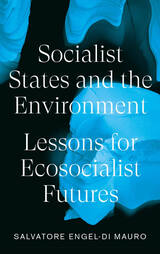 Socialist States and the Environment: Lessons for Eco-Socialist Futures
Salvatore Engel-Di Mauro
Pluto Press, 2021 More than thirty years after the collapse of the USSR, the critique of state socialism is still used to deny alternatives to capitalism, irrespective of global capitalist ecological and social devastation. There is seemingly nothing worthwhile salvaging from decades of state socialist experiences.
As the climate crisis deepens, Engel-Di Mauro argues that we need to re-evaluate the environmental practices and policies of state socialism, especially as they had more environmentally beneficial than destructive effects. Rather than dismissing state socialism’s heritage out of hand, we should reclaim it for contemporary eco-socialist ends.
By means of a comparative and multiple-scaled approach, Engel-Di Mauro points to highly diverse and environmentally constructive state socialist experiences. Taking the reader from the USSR to China and Cuba, this is a fiery and contentious look at what worked, what didn’t, and how we can move towards an eco-socialist future.
 Socialist States and the Environment: Lessons for Eco-Socialist Futures
Salvatore Engel-Di Mauro
Pluto Press, 2021 More than thirty years after the collapse of the USSR, the critique of state socialism is still used to deny alternatives to capitalism, irrespective of global capitalist ecological and social devastation. There is seemingly nothing worthwhile salvaging from decades of state socialist experiences.
As the climate crisis deepens, Engel-Di Mauro argues that we need to re-evaluate the environmental practices and policies of state socialism, especially as they had more environmentally beneficial than destructive effects. Rather than dismissing state socialism’s heritage out of hand, we should reclaim it for contemporary eco-socialist ends.
By means of a comparative and multiple-scaled approach, Engel-Di Mauro points to highly diverse and environmentally constructive state socialist experiences. Taking the reader from the USSR to China and Cuba, this is a fiery and contentious look at what worked, what didn’t, and how we can move towards an eco-socialist future.
 Socialist Subjectivities: Queering East Germany under Honecker
Scott Harrison, Jeff Hayton, and Katharine White, Editors
University of Michigan Press, 2025 Socialist Subjectivities works within the logics of queer time to reanimate East German subjectivities in the 1970s and 1980s beyond the narrative of the German Democratic Republic’s long march towards demise. While East Germany certainly ended in dissolution, not all East Germans experienced late socialism in a singular manner. Rather, even after a generation of building socialism, East Germans under Honecker continued to pursue a range of socialist presents and a multiplicity of socialist futures up to and beyond 1989. This edited volume utilizes queer temporalities to interrogate how individuals lived non-normative possibilities in a highly normative world.
Whether one was an apparatchik, artist, or alcoholic, the everyday interactions, experiences, and rituals of late socialism proved crucial to establishing the conditions around which subjecthood was constructed. Despite stereotypes of apathy and inertia, East Germans lent a considerable dynamism to their society, and by generating a cacophony of opinions and a heterogeneity of ideas, they constantly transformed state socialism. By foregrounding socialist subjects and the iterative nature of socialism during these decades, this volume paints a richer portrait of East Germany—one that illuminates how East Germans imagined their futures in a society whose collapse they could not foresee.
 A Socialist Utopia in the New South: The Ruskin Colonies in Tennessee and Georgia, 1894-1901
W. Fitzhugh Brundage
University of Illinois Press, 1996 "A definitive account of the Ruskin colonies and of their place in the larger social radical strivings of the late nineteenth and early twentieth centuries. . . . Well written and solidly researched, it gives us an understanding of an important quest for heaven on earth." -- Edward K. Spann, author of Brotherly Tomorrows: Movements for a Cooperative Society in America,1820-1920
This first book-length study of the Ruskin colonies shows how several hundred utopian socialists gathered as a cooperative community in Tennessee and Georgia in the late nineteenth century. The communitarians' noble but fatally flawed act of social endeavor revealed the courage and desperation they felt as they searched for alternatives to the chaotic and competitive individualism of the age of robber barons and for a viable model for a just and humane society at a time of profound uncertainty about public life in the United States.
The Socialist Way of Life in Siberia: Transformation in Buryatia
Melissa Chakars
Central European University Press, 2014 The Buryats are a Mongolian population in Siberian Russia, the largest indigenous minority. The Socialist Way of Life in Siberia presents the dramatic transformation in their everyday lives during the late twentieth century. The book challenges the common notion that the process of modernization during the later Soviet period created a Buryat national assertiveness rather than assimilation or support for the state.
 Socializing Medicine: Health Humanities and East Asian Media
Edited by Pao-chen Tang, Yuqian Yan, and Ling Zhang
Hong Kong University Press, 2025 An analysis of the use of mass media as a tool to control healthcare.
Socializing Medicine explores the intersections of medicine, health, and East Asian media. Interweaving archival research, audiovisual analyses, and theoretical insights from the emerging field of Health Humanities, the contributors reveal the multifaceted ways in which mass media—including photography, film, television, and live streaming—has been deployed as a tool for controlling medicine and health, privileging those with power and authority since the early twentieth century. Adopting anti-colonial and anti-capitalist perspectives, the contributors in this volume challenge the dominant mediations of health against the backdrop of imperialism, Cold War geopolitical tensions, and neoliberal capitalism. Collectively, they advocate for alternative understandings of medical culture through media productions that envision accessible and equitable healthcare practices.
 Socializing Security: Progressive-Era Economists and the Origins of American Social Policy
David A. Moss
Harvard University Press, 1996 Socializing Security examines the early movement for worker-security legislation in the United States. It focuses on a group of academic economists who became leading proponents of social insurance and protective labor legislation during the first decades of the twentieth century. These economists—including John R. Commons and Richard T. Ely—founded the American Association for Labor Legislation (AALL). As intellectuals and political activists, they theorized about the social efficiency of security legislation, proposed policies, and drafted model bills. They campaigned vigorously for industrial safety laws, workers’ compensation, unemployment insurance, and compulsory health insurance.
The AALL reformers were successful in some of their legislative campaigns, but failed in two of their most important ones, those for unemployment insurance and health insurance. In examining the obstacles that the reformers faced, David Moss highlights a variety of political and institutional constraints, including the constitutional doctrine of federalism and gender-biased judicial decisions.
The goal of the AALL reformers, Moss demonstrates, was not to relieve the poor, but rather to prevent workers and their families from falling into poverty as a result of accidents or illness. In favoring security over relief, economists in the progressive era defined and confirmed what has remained, for some eighty years, one of the essential values of American social policy. In concluding, Moss suggests that new policies may now be necessary in an economy in which falling wages and fewer jobs, rather than industrial hazards, are increasingly to blame for the precarious situation of the American worker.
 Socially Engaged Creative Practice: Contemporary Case Studies
Edited by Jess Moriarty and Kate Aughterson
Intellect Books, 2024 This edited collection engages with both identity and specific time-limited notions in performance: textual, embodied, visual, and communal.
Each chapter of Socially Engaged Creative Practice focuses on an individual or group’s mode of working and methodological practice of performance across a range of modes, disciplines, and media, from community opera to online queer performance; from anti-racist classroom pedagogy to 1980s cabaret in nightclubs; from community art projects in schools to community writing projects in transport interchanges. The performers, writers, and creators represented here engage and grapple with contemporary performance as a situated practice and as a problem.
The personal perspective of each performer—as directors, librettists, producers, and writers—is explicitly located in a community, and the book offers a series of case studies detailing socially engaged work that aligns with concepts of performance and community.
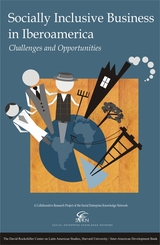 Socially Inclusive Business: Engaging the Poor through Market Initiatives in Iberoamerica
Patricia Márquez
Harvard University Press The idea that market mechanisms can mobilize social change by engaging the poor in win–win scenarios is gaining increased world attention. Companies, social sector organizations, and development agencies are all beginning to glean the potential that lies among the world’s poorest people, both as an untapped productive force and a neglected consumer market. This book aims to demonstrate how the private sector can become part of the solution of poverty.
In this study, the authors assess market initiatives in Iberoamerica by large corporations, cooperatives, small and medium enterprises, and nonprofit organizations. A task force drawing on nine teams of researchers from various business schools and universities in nine countries examined 33 experiences, seeking to uncover “what’s needed” for building new business value chains that help move people out of poverty.
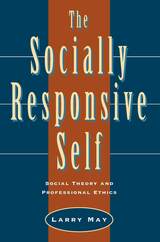 The Socially Responsive Self: Social Theory and Professional Ethics
Larry May
University of Chicago Press, 1996 Larry May argues that socially responsive individuals need not be self-sacrificing or overly conscientious. According to May, a person's integrity and moral responsibility are shaped and limited not just by conscience but also by socialization and moral support from the communities to which he or she belongs.
Applying his theory of responsibility to professional ethics, May contends that current methods of professional socialization should be changed so that professionals are not expected to ignore considerations of personal well-being, family, or community. For instance, lawyers should not place client loyalty above concerns for the common good; doctors should not place the physical well-being of patients above their mental and spiritual well-being; scientists and engineers should not feel obliged to blow the whistle on fraud and corruption unless their professional groups protect them from retaliation.
This book should prove provocative reading for philosophers, political scientists, social theorists, professionals of many stripes, and ethicists.
Social-Spatial Segregation: Concepts, Processes and Outcomes
Edited by Christopher D. Lloyd, Ian Shuttleworth, and David W. Wong
Bristol University Press, 2014 This volume brings together leading researchers from the United States, United Kingdom, and Europe to explore the processes that lead to segregation and the outcomes and implications that result. Making use of new methods and data sources that offer fresh perspectives on segregation in different contexts, the book considers how the spatial patterning of segregation might be best understood and measured.
The Societal Foundations of National Competitiveness
Michael J. Mazarr
RAND Corporation, 2022 Nations rise and fall, succeed or fail in rivalries, and enjoy stability or descend into chaos because of a complex web of factors. One critical component is a nation’s essential social characteristics. This report examines the characteristics of highly competitive societies, explores the relationship of a nation’s social condition to its global standing, and then applies these lessons to the United States today.
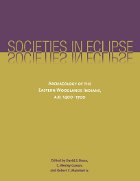 Societies in Eclipse: Archaeology of the Eastern Woodlands Indians, A.D. 1400-1700
Edited by David S. Brose, C. Wesley Cowan, and Robert C. Mainfort
University of Alabama Press, 2001 Combines recent research with insights from anthropology, historiography, and oral tradition to examine the cultural landscape preceding and immediately following the arrival of Europeans
After establishing the distribution of prehistoric and historic populations from the northeastern Appalachian forests to the southern trans-Mississippian prairies, the contributors consider the archaeological and cultural record of several specific groups, including Mohawk and Onondaga, Monacan, Coosa, and Calusa. For each, they present new evidence of cultural changes prior to European contact, including populations movements triggered by the Little Ice Age (AD 1550–1770), shifting exchange and warfare networks, geological restriction of effective maize subsistence, and use of empty hunting territories as buffers between politically unstable neighbors. The contributors also trace European influences, including the devastation caused by European-introduced epidemics and the paths of European trade goods that transformed existing Native American-exchange networks.
While the profound effects of European explorers, missionaries, and traders on Eastern Woodlands tribes cannot be denied, the archaeological evidence suggests that several indigenous societies were already in the process of redefinition prior to European contact. The essays gathered here show that, whether formed in response to natural or human forces, cultural change may be traced through archaeological artifacts, which play a critical role in answering current questions regarding cultural persistence.
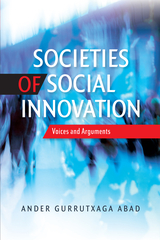 Societies of Social Innovation: Voices and Arguments
Ander Gurrutxaga Abad
Sussex Academic Press, 2022 The object of this study is to clarify the meanings and uses of social innovation in contemporary societies. The author makes use of the forms of analysis provided by theories of social change and the multi-disciplinary, long-term approach that is associated with 'Big History', with its focus on evidence and insights from different scientific and historical disciplines, together with empirical resources that are employed in advanced countries and societies in the construction of innovative environments. For contemporary societies, social innovation is a concept that is present in a wide variety of experiences and in multiple situations. Historically, it has been seen as related to a capacity for social experimentation, collective learning, the creation of knowledge and the ability to transfer it. Today, it is associated with a range of experiences, dimensions and fields within the language of management and economics, and in the social and productive uses of technology. Civic organisations of different kinds, public institutions and social movements are all aware of its importance, and repeatedly assert its significance. They associate it with risk, with uncertainty and with a role as an instrument for the reinvention of the ethics of capitalism. It is through this humanistic process that social innovation creates contexts and conditions that can improve the future of society in general.
Society and Civilization in Greece and Rome
Victor Ehrenberg
Harvard University Press This book, written for the scholar and layman alike, focuses on many aspects of the complex relation between society and civilization in Greece and Republican Rome. Victor Ehrenberg brings to life the ancient social scene and demonstrates how a way of life affected literature and thought as well as art, and was in its turn affected by various cultural developments. Conferring a new and revealing significance on familiar figures, settings, and events, he provides a full picture of the essential trends in Greek and Roman civilization, amplified by numerous illustrations.
 Society and Economy: Framework and Principles
Mark Granovetter
Harvard University Press, 2017 Society and Economy—a work of exceptional ambition by the founder of modern economic sociology—is the first full account of Mark Granovetter’s ideas about the diverse ways in which society and economy are intertwined.
The economy is not a sphere separate from other human activities, Granovetter writes. It is deeply embedded in social relations and subject to the same emotions, ideas, and constraints as religion, science, politics, or law. While some actions can be understood in traditional economic terms as people working rationally toward well-defined ends, much human behavior is harder to fit into that simple framework. Actors sometimes follow social norms with a passionate faith in their appropriateness, and at other times they conform without conscious thought. They also trust others when there is no obvious reason to do so. The power individuals wield over one another can have a major impact on economic outcomes, even when that power arises from noneconomic sources.
Although people depend on social norms, culture, trust, and power to solve problems, the guidance these offer is often murky and complicated. Granovetter explores how problem solvers improvise to assemble pragmatic solutions from this multitude of principles. He draws throughout on arguments from psychology, social network studies, and long-term historical and political analysis and suggests ways to maneuver back and forth among these approaches. Underlying Granovetter’s arguments is an attempt to move beyond such simple dualisms as agency/structure to a more complex and subtle appreciation of the nuances and dynamics that drive social and economic life.
Society and Education in Brazil
Robert J. Havighurst
University of Pittsburgh Press, 1969 A groundbreaking English-language study of the transformation in education in mid-twentieth century Brazil, and the social and economic forces that shaped it. It also looks at how, in turn, education is shaping the rapid transformation of Brazilian society.
Society and its Outsiders in the Novels of Jakob Wassermann
Katharina Volckmer
University of London Press, 2016 Society and its Outsiders in the Novels of Jakob Wassermann takes a fresh look at Wassermann’s depiction of society and its mechanisms of exclusion, specifically those affecting the Jew, the woman, the child and the homosexual man. Wassermann’s extensive oeuvre has not, until now, been considered as an attempt to portray German society at different historical stages, from the Biedermeier to the end of the Weimar Republic. At the same time, this analysis shows how Wassermann’s interest in outsider figures is intertwined with an interest in narrative technique and discusses how his perception of the world affects his depiction of character.
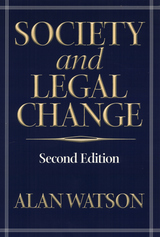 Society And Legal Change 2Nd Ed
Alan Watson, foreword by Paul Finkelman
Temple University Press, 2001 In this first U.S. edition of a classic work of comparative legal scholarship, Alan Watson argues that law fails to keep step with social change, even when that change is massive. To illustrate the ways in which law is dysfunctional, he draws on the two most innovative western systems, of Rome and England, to show that harmful rules continue for centuries. To make his case, he uses examples where, in the main, "the law benefits no recognizable group or class within the society (except possibly lawyers who benefit from confusion) and is generally inconvenient or positively harmful to society as a whole or to large or powerful groups within the society." Widely respected for his "fearless challenge of the accepted or dominant view and his own encyclopedic knowledge of Roman law" (The Encyclopedia of Historians and Historical Writing), Watson considers the development of law in global terms and across the centuries. His arguments centering on how societies borrow from other legal systems and the continuity of legal systems are particularly instructive for those interested in legal development and the development of a common law for the European Union. postamble();
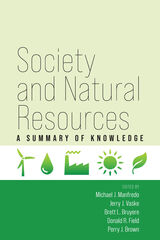 Society and Natural Resources: A Summary of Knowledge
Michael J. Manfredo
University Press of Colorado, 2023 This book is a reprint of the original edited volume first published in 2004. In thirty-one chapters, the edited volume documents the exciting period of the emerging interdisciplinary field of society and natural resource scholarship from 1986 to 2004. It was published in part to commemorate the tenth International Symposium on Society and Resources Management (ISSRM) in Keystone, Colorado. ISSRM has brought together natural resource professionals, social science researchers, non-government agencies, private sector organizations, and students on a biennial basis since 1986. The book presents the most significant contributions to the symposia hosted by Pennsylvania State University, Colorado State University, University of Wisconsin-Madison, Texas A&M University, University of Illinois at Urbana-Champaign, Oregon State University, University of Missouri at Columbia, Western Washington University, and Indiana University. The first International ISSRM was held in Belize, Australia, and Italy and started a fruitful cross-continental exchange on society and natural resources showcased in this book.
Contributors: Jim Absher, Kathleen Andereck, Jill Belsky, John Bergstrom, Carter Betz, Alan Bright, Perry J. Brown, Tommy Brown, Mark Brunson, Rabel Burdge, Fred Buttel, KristinCheek, Chia-Kuen Cheng, Tony Cheng, David Cole, H Ken Cordell, Terry Daniel, Steven Daniels, Dan Decker, Robert Ditton, John Dwyer, Alan Ewert, Don Field, Myron Floyd, R Bruce Gill, Alan Graefe, Gary Green, Doug Jackson-Smith, Rebecca Johnson, Richard Knopf, Rick Krannich, Jessica Leahy, Xinran You Lehto, John Loomas, Al Luloff, Mike Manfredo, Robert Manning, Sarah McCaffrey, Stephen McCool, Yoon-Jung Oh, Joseph O'Leary, Carol Saunders, Steve Selin, Bruce Shindler, George Stankey, Bill Stewart, Vicky Sturtevant, Jonathan Taylor, Suzanne Taylor, Tara Teel, Brijesh Thapa, Gene Theodori, Carla Koons Trentelman, Jerry Vaske, Joanne Vining, Doug Whittaker, Dan Williams
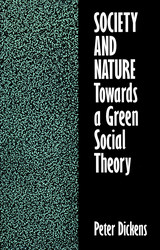 Society and Nature: Towards a Green Social Theory
Peter Dickens
Temple University Press, 1992 In this wide-ranging effort to theorize about the relationships between society and nature, Peter Dickens attempts to reconstruct social theory in a way that enables it to speak to contemporary environmental issues. After reviewing existing sociological traditions, he draws on the early work of Karl Marx to suggest that processes and relations in the workplace are the main source of people's separation from nature. In addition, people's understanding of "nature" tends to mirror their experience of the social world. Redefining the work of Anthony Giddens in an ecological direction, Dickens analyzes developments in biological thinking that seem consistent with this approach. He considers the role of culture, and he critiques the contemporary "deep green" and "deep ecology" movements.
Focusing on the alienation of human begins from the natural world and the place of nature in their "deep mental structures," the author works in part from a Marxist perspective but draws a wide variety of social psychological, and biological theories into the discussion. Society and Nature not only addresses a central debate in contemporary social science regarding this interrelationship but also responds to the intellectual challenge presented by natural scientific concepts of environmental problems that oversimplify or ignore their political or social relational dimensions.
Society as Text: Essays on Rhetoric, Reason, and Reality
Richard Harvey Brown
University of Chicago Press, 1987 Brown makes elegant use of sociological theory and of insights from language philosophy, literary criticism, and rhetoric to articulate a new theory of the human sciences, using the powerful metaphor of society as text.
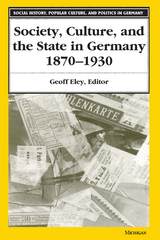 Society, Culture, and the State in Germany, 1870-1930
Geoff Eley, Editor
University of Michigan Press, 1997 Society, Culture, and the State in Germany, 1870-1930 draws together important new work on the Kaiserreich--the period between Bismarck's unification of Germany and the First World War. Work on the Kaiserreich built up impressive momentum during the 1970s and 1980s, when a series of inspiring but divisive controversies called into question the ways in which German historical development in the nineteenth and twentieth centuries was mainly understood. These discussions focused on issues of continuity between Bismarck and Hitler and the peculiar strength of authoritarianism in German political culture, raising important questions about the deep origins of Nazism and about Germany's alleged differences from the West.The collection purposefully brings certain issues and approaches into the foreground. These include the value of taking gender seriously as a priority of historical work; the emergence of social policy and welfare during the early twentieth century; religious belief and affiliation as a neglected dimension in modern German history; the tremendous importance of the First World War as a climacteric; and the exciting potentials of cultural studies and the new cultural history.A varied group, the contributors embrace different kinds of history and certainly do not subscribe to a common line. Some essays suggest alternative periodizations and focus on the early twentieth century decades rather than the integral unity of the Kaiserreich as such. Together, they take stock of the field, critically synthesizing existing knowledge and laying down agendas for the future.
A Society for International Development: Prospectus 1984
Ann Mattis, ed.
Duke University Press, 1983 A Society for International Development: Prospectus 1984 is a collection of studies that examines the current problems of world development in light of the past twenty-five years but goes beyond an examination of that experience to project practical and workable plans for the future. In this book the authors ask the question "what is development?" and they invite the people of the world to respond. Is development economic growth, or is it the creation of a new basis for preserving cultural identity? Who should determine developmental policies? On whom should we rely to see these policies through? Combining broad questions with specific case studies, the authors suggest that a new world order is both attainable and desirable.
 Society for the Prevention of Cruelty to Animals: A Humorous – Insofar as That Is Possible – Novella from the Ghetto
J. R. Pick
Karolinum Press, 2018 Compassion, levity, and laughter can be found in the darkest of places—and even in the smallest of creatures. Set in 1943 Nazi-occupied Czechoslovakia, J. R. Pick’s novella Society for the Prevention of Cruelty to Animals tells the story of Tony, a thirteen-year-old boy who is deported from Prague to the infamous Terezín ghetto for Jews—the horrific, overcrowded concentration camp where one in four prisoners died of starvation or disease, and a way station on the way to Auschwitz. But it is not the atrocities Tony experiences that make his tale remarkable. It is his ability to find comedy in the incomprehensible.
Tony suffers from tuberculosis, and, lying in his hospital bed one day, he decides to set up an animal welfare organization. Even though no animals are permitted in the camp, he is determined to find just one creature he can care for and protect—and his determination is contagious. A group of older boys, including Tony’s best friend, Ernie, aid him in his quest. Soon they’re joined by Tony’s mother—and her coterie of boyfriends. Eventually, they find Tony his pet: a mouse, which he names and carefully guards in a box hidden beneath his bed. But in the fall of 1944, the transports to Auschwitz begin.
As moving as it is irreverent, Pick’s novella draws on the two years he spent imprisoned in Terezín in his late teens. With cutting black humor, he shines a light on both the absurdities and injustices of the Nazi-run Jewish ghetto, using his literary artistry to portray in stunning shorthand an experience of the Holocaust that pure histories could never convey.
 Society in Action: The Theory of Social Becoming
Piotr Sztompka
University of Chicago Press, 1991 In Society in Action, Piotr Sztompka sets forth a highly topical contribution to central theoretical debates of contemporary sociology. Taking the idea and practice of collective mobilization as his theme, Sztompka argues that modern institutions, particularly of late, are characterized by an increasing awareness of collective empowerment. The most obvious concrete expression of this phenomenon, as Sztompka makes clear, is the rise of a diversity of active social movements such as those which dramatically transformed Europe in the 1980s, from the birth of Solidarity in 1980 to the 1989 "Autumn of Nations."
Sztompka connects the interpretations of such collective activity to a wider grasp of the nature of social action. The result is a comprehensive and original theory of social change which focuses on the self-transforming influence on society of its members' striving for freedom, autonomy, and self-fulfillment. He develops his theory by means of a general concept of "social becoming," the roots of which he traces to the early romantic and humanist work of Karl Marx and his followers and to two influential sociological schools of today, the theory of agency and historical sociology.
Sztompka situates his theory midway between the rigid determinism of social totalities and the unbridled voluntarism of free individuals. Social change, he demonstrates, can be understood neither as the outcome of individual actions taken alone nor as structurally determined actions. Instead, he confers upon social organizations and movements a "self-transcending" quality: they express human agency yet, by virtue of their active character, are quite often able to achieve unpredictable outcomes.
Throughout his analysis of social movements and revolutions in history, Sztompka emphasizes the dynamics of spontaneous social change generated from below—a theoretical testimony to the rapid and fundamental social change in Eastern Europe in recent history. Against the fashions of postmodernist malaise, boredom, and disenchantment, his theory of social becoming expresses the possibility of emancipation, of change leading to positive gains. His work registers a belief in progress, not inevitably gained, but its attainment fully dependent upon the creativity and optimism of an active citizenry.
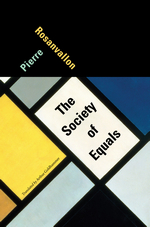 The Society of Equals
Pierre Rosanvallon
Harvard University Press, 2013 Since the 1980s, society’s wealthiest members have claimed an ever-expanding share of income and property. It has been a true counterrevolution, says Pierre Rosanvallon—the end of the age of growing equality launched by the American and French revolutions. And just as significant as the social and economic factors driving this contemporary inequality has been a loss of faith in the ideal of equality itself. An ambitious transatlantic history of the struggles that, for two centuries, put political and economic equality at their heart, The Society of Equals calls for a new philosophy of social relations to reenergize egalitarian politics.
For eighteenth-century revolutionaries, equality meant understanding human beings as fundamentally alike and then creating universal political and economic rights. Rosanvallon sees the roots of today’s crisis in the period 1830–1900, when industrialized capitalism threatened to quash these aspirations. By the early twentieth century, progressive forces had begun to rectify some imbalances of the Gilded Age, and the modern welfare state gradually emerged from Depression-era reforms. But new economic shocks in the 1970s began a slide toward inequality that has only gained momentum in the decades since.
There is no returning to the days of the redistributive welfare state, Rosanvallon says. Rather than resort to outdated notions of social solidarity, we must instead revitalize the idea of equality according to principles of singularity, reciprocity, and communality that more accurately reflect today’s realities.
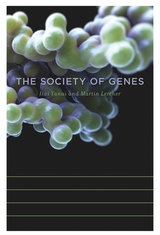 The Society of Genes
Itai Yanai and Martin Lercher
Harvard University Press, 2016 Nearly four decades ago Richard Dawkins published The Selfish Gene, famously reducing humans to “survival machines” whose sole purpose was to preserve “the selfish molecules known as genes.” How these selfish genes work together to construct the organism, however, remained a mystery. Standing atop a wealth of new research, The Society of Genes now provides a vision of how genes cooperate and compete in the struggle for life.
Pioneers in the nascent field of systems biology, Itai Yanai and Martin Lercher present a compelling new framework to understand how the human genome evolved and why understanding the interactions among our genes shifts the basic paradigm of modern biology. Contrary to what Dawkins’s popular metaphor seems to imply, the genome is not made of individual genes that focus solely on their own survival. Instead, our genomes comprise a society of genes which, like human societies, is composed of members that form alliances and rivalries.
In language accessible to lay readers, The Society of Genes uncovers genetic strategies of cooperation and competition at biological scales ranging from individual cells to entire species. It captures the way the genome works in cancer cells and Neanderthals, in sexual reproduction and the origin of life, always underscoring one critical point: that only by putting the interactions among genes at center stage can we appreciate the logic of life.
 The Society of the Selfie: Social Media and the Crisis of Liberal Democracy
Jeremiah Morelock and Felipe Ziotti Narita
University of Westminster Press, 2021 This book explores how the Internet is connected to the global crisis of liberal democracy. Today, self-promotion is at the heart of many human relationships. The selfie is not just a social media gesture people love to hate. It is also a symbol of social reality in the age of the Internet. Through social media people have new ways of rating and judging themselves and one another, via metrics such as likes, shares, followers and friends. There are new thirsts for authenticity, outlets for verbal aggression, and social problems. Social media culture and neoliberalism dovetail and amplify one another, feeding social estrangement. With neoliberalism, psychosocial wounds are agitated and authoritarianism is provoked. Yet this new sociality also inspires resistance and political mobilisation. Illustrating ideas and trends with examples from news and popular culture, the book outlines and applies theories from Debord, Foucault, Fromm, Goffman, and Giddens, among others. Topics covered include the global history of communication technologies, personal branding, echo chamber effects, alienation and fear of abnormality. Information technologies provide channels for public engagement where extreme ideas reach farther and faster than ever before, and political differences are widened and inflamed. They also provide new opportunities for protest and resistance.
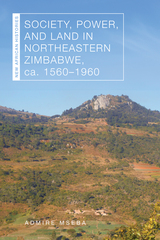 Society, Power, and Land in Northeastern Zimbabwe, ca. 1560–1960
Admire Mseba
Ohio University Press, 2024 A little over two decades ago, Zimbabwe undertook its Fast Track Land Reform Programme. Critics saw it as nothing more than an assault on human and property rights for political expedience by a ruling elite that was fast losing its power. In contrast, those sympathetic to the land reform program saw it as fundamental to the righting of colonialism’s historical wrongs. Yet, rural displacements at the hands of state actors, or of those closely connected to them, continue. As in the past, the continuing land conflicts are mostly understood as the result of the actions of an authoritarian state that exploits its control of land for the political and economic benefit of those who inhabit it. These explanations share one thing in common: each understands the country’s perpetual land questions in terms of the actions or inactions of the colonial or the postcolonial state. This book refocuses attention on how regimes of power rooted in kinship, gender, generation, and status have, individually and in combination, informed access to land in precolonial northeastern Zimbabwe. It then examines how these regimes of power interacted with colonial policies to inform the African experience in colonial Zimbabwe. Further, the book places land and the ability to ensure its fecundity at the center of the making and moderation of precolonial political power and how this power was impacted by the imposition of colonial rule. Tracing the dynamics of land and power from precolonial times, together with their entanglement with colonial policies, is important, for this relationship is almost always neglected by both scholars and policymakers drawn to the high drama of colonial and postcolonial politics of land. This oversight has real consequences on our understandings of landed inequalities and how they are addressed. When Zimbabwe’s postcolonial state focused on colonially induced racialized land inequalities, its land reform efforts left older forms of landed inequalities based on gender, generation, and ideas of belonging intact. The book, which details these inequalities, reminds Zimbabweans and others that if the quest for equity espoused in postcolonial land reforms is to be meaningful, it must be attentive to both colonially induced inequalities and those enduring disparities that predated, were deepened by, and outlived colonial rule. At the same time, Zimbabweans who now live with a postcolonial state that is increasingly centralizing power over land may well learn from past societies’ creative efforts to limit the authority of their leaders.
A Society Transformed: Hungary in Time-Space Perspective
Richard Rose
Central European University Press, 1999 In the past half-century every Central and East European society has been twice subject to transformation. Initially, Hungary was transformed by communist-style modernization, increasing industry, expanding secondary education and improving health. The second shock was the collapse of the communist regime and the introduction of democratic institutions and a market economy. How much or how little impact has institutional change had on the lives of ordinary people? Drawing on detailed surveys, highlighted in tables and figures, the authors identify long-term changes in Hungary from the late 1940s to the late 1980s and provide an in-depth analysis of the impact of the collapse of the communist system in the 1990s. They also compare long-term and shor-term change in Hungary with trends in other Central and Eastern European countries.
Sociobiology
Edward O. Wilson
Harvard University Press, 1975 THIS EDITION HAS BEEN REPLACED BY A NEWER EDITION.
 Sociobiology: The Abridged Edition
Edward O. Wilson
Harvard University Press, 1980 “An evolutionary event” wrote John Pfeiffer in the New York Times Book Review when Sociobiology was published in 1975, “announcing for all who can hear that we are on the verge of breakthroughs in the effort to understand our place in the scheme of things.” Praised by many and damned by some, Sociobiology provided the framework for a new science—the study of the biological basis for social behavior in every species, from the lowliest amoeba colony to modern human society.
In this abridged edition, Edward O. Wilson trims his monumental work to its essential argument and most compelling examples. He retains the full basic structure of the original book, while eliminating the technical discussions and data summaries. Because of the unusual amount of interest and commentary it has generated, the final chapter on human social behavior remains virtually intact. The book has been completely reset to accommodate a convenient 8 ½ × 11 format, and Sarah Landry’s superb drawings of animal societies still accompany the text. New students and general readers can discover for themselves what sociobiology is all about and why there is so much furor surrounding it.
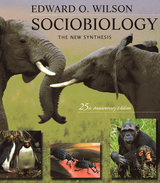 Sociobiology: The New Synthesis, Twenty-Fifth Anniversary Edition
Edward O. Wilson
Harvard University Press, 2000 When this classic work was first published in 1975, it created a new discipline and started a tumultuous round in the age-old nature versus nurture debate. Although voted by officers and fellows of the international Animal Behavior Society the most important book on animal behavior of all time, Sociobiology is probably more widely known as the object of bitter attacks by social scientists and other scholars who opposed its claim that human social behavior, indeed human nature, has a biological foundation. The controversy surrounding the publication of the book reverberates to the present day.
In the introduction to this Twenty-Fifth Anniversary Edition, Edward O. Wilson shows how research in human genetics and neuroscience has strengthened the case for a biological understanding of human nature. Human sociobiology, now often called evolutionary psychology, has in the last quarter of a century emerged as its own field of study, drawing on theory and data from both biology and the social sciences.
For its still fresh and beautifully illustrated descriptions of animal societies, and its importance as a crucial step forward in the understanding of human beings, this anniversary edition of Sociobiology: The New Synthesis will be welcomed by a new generation of students and scholars in all branches of learning.
Sociolinguistic Constructs of Ethnic Identity: The Syntactic Delineation of an American Indian English, Volume 77
Clare J. Dannenberg, ed.
Duke University Press Sociolinguistic Constructs of Ethnic Identity examines ethnic language boundaries displayed in the various uses of the verb be in a multiethnic community in Robeson County, North Carolina. Clare J. Dannenberg demonstrates that ethnic identity is a dynamic process that shifts over time and social space. Ethnic groups that have been stripped of their ancestral source language, like the Lumbee Indians, may be quite resilient and able to carve out unique language varieties in their replacement language.
 Sociolinguistic Variation and Change
Peter Trudgill
Georgetown University Press, 2002 This selection of Peter Trudgill's major works since 1988, appearing here in updated and revised form, reveals major recurring themes in his work on linguistic diversity. This book evinces his deep concern that the world's linguistic diversity is diminishing at an alarming rate. The linguistic future is likely to be very different from the past, because increased language contact among peoples will result in the creation of fewer new languages to balance the language deaths. The essays here manifest Trudgill's conviction that linguists must make every effort to study minority languages and dialects before they vanish. The book also demonstrates his sense of the obligation that linguists have to educate the public about why linguistic diversity is valuable. The book deals with a number of specific but related topics. One area is the role of English in the world, and the nature of Standard English or Englishes. Another is language as a human issue, reflecting the author's concern that the results of sociolinguistic research should be made available to assist, wherever possible, with the solution of educational and other real-world problems. A third focus is on the problematic and interconnected relationships among nation and language and dialect, but, unlike the work of most other writers in this field, this book looks closely at the linguistic characteristics of the varieties concerned. The final major emphasis is on sociohistorical linguistics: in particular, the relationship between colonial and motherland varieties of English; dialect contact and language contact; and the sociolinguistically informed dialectology of linguistic theory, linguistic description, and the applications of linguistics. The major overall unifying theme of the book is linguistic variation and, as the diachronic outcome of linguistic variation, linguistic change.
Sociolinguistic Variation: Data, Theory, and Analysis
Edited by Jennifer Arnold, Renee Blake, and Brad Davidson
CSLI, 1996 This volume collects selected papers from the twenty-third New Ways of Analyzing Variation (NWAV23) conference held at Stanford University. It is a collection of innovative papers on the newest developments in research on variation. The range of topics covered in this collection include: phonological variation, morphosyntactic variation, register and style, discourse, codeswitching, and language change. A foreword by John Rickford ties the collection together. This volume will be of interest to sociolinguists, sociologists, and any scholar interested in comparative linguistics.
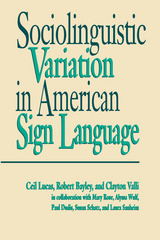 Sociolinguistic Variation in American Sign Language
Ceil Lucas
Gallaudet University Press, 2001 The culmination of a seven-year project, this volume provides a complete description of American Sign Language (ASL) variation. For four decades, linguists have studied how people from varying regions and backgrounds have different ways of saying the same thing. For example, in English some people say “test,” while others say “tes’”, dropping the final “t.” Noted scholars Ceil Lucas, Robert Bayley, and Clayton Valli led a team of exceptional researchers in applying techniques for analyzing spoken language variation to ASL. Their observations at the phonological, lexical, morphological, and syntactic levels demonstrate that ASL variation correlates with many of the same driving social factors of spoken languages, including age, socioeconomic class, gender, ethnic background, region, and sexual orientation. Internal constraints that mandate variant choices for spoken languages have been compared to ASL as well, with intriguing results. Sociolinguistic Variation in American Sign Language stands alone as the new standard for students and scholars committed to this discipline.
 Sociolingüística y pragmática del español
Carmen Silva-Corvalán
Georgetown University Press, 2001 This book provides a clear and comprehensive overview of sociolinguistics and the pragmatics of oral communication in Spanish. Drawing on the research of foremost scholars in the field, Carmen Silva-Corvalán covers central concerns of variational sociolinguistics, discourse analysis, language change, and language contact, with special reference to Spanish in the United States. A thoroughly revised and expanded version of Silva-Corvalán’s 1989 study, Sociolingüística: teoría y análisis, the book includes rigorous quantitative and qualitative analyses, and it documents such ongoing issues as language change in monolingual and bilingual communities, the nature of phonetic and syntactic variation, and modes of data collection and analysis. New topics include pragmatics and discourse analysis, discourse markers, and sociolinguistics and education. Written in Spanish, Sociolingüística y pragmática del español will be welcomed by students and sociolinguistic researchers, who will find in it the ideal overview of the social aspects of language as well as a wealth of empirical data on Spanish linguistics. Complete with exercises at the end of each chapter and a convenient subject index, the book is appropriate for advanced undergraduates and graduate students of Spanish throughout the world.
 Sociolingüística y pragmática del español: segunda edición
Carmen Silva-Corvalán and Andrés Enrique-Arias
Georgetown University Press, 2017 This thoroughly updated second edition provides a clear and comprehensive overview of sociolinguistics and the pragmatics of oral communication in Spanish. While maintaining the same structure as the first edition, it includes revised “Ejercicios de reflexión” and new comprehension checks at the end of each chapter, along with numerous bibliographic references throughout, enhancing its use as a classroom text. Among the significant revisions are new sections on corpus linguistics and on statistical modeling programs for studying linguistic variables, an expanded chapter on the study of linguistic attitudes with special attention to Spanish in the United States, greater attention to the relation of pragmatics to sociolinguistics, including coverage of verbal politeness and forms of address, and updated information on Spanglish and on the teaching of Spanish as a heritage language.
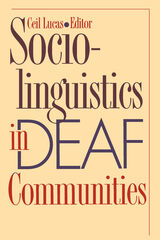 Sociolinguistics in Deaf Communities
Ceil Lucas
Gallaudet University Press, 1995 The first volume in the new Sociolinguistics in Deaf Communities series presents a rich collection of essays showcasing the breadth and depth of this exciting discipline. Topics of inquiry in the premiere volume include fingerspelling in Langue des Signes Quebecoise (LSQ) in Quebec, Canada; language used by a Navajo family with deaf children; language policy, classroom practice, and multiculturalism in deaf education; aspects of American Sign Language (ASL) discourse and of Filipino Sign Language discourse; and the nature and role of rhetorical language in Deaf social movements. Among the noted contributors are Dominique Machabee, Arlene Blumenthal-Kelly, Jeffrey Davis, Melanie Metzger, Samuel Supalla, Barbara Gerner de Garcia, Liza B. Martinez, Kathy Jankowski, and also Ceil Lucas. Sociolinguistics in Deaf Communities affords an invaluable opportunity to assess up-to-date information on sign language linguistics worldwide and its impact on policy and planning in education, interaction with spoken languages, interpreting, and the issues of empowerment.
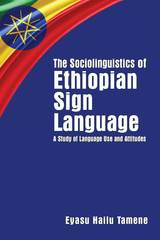 The Sociolinguistics of Ethiopian Sign Language: A Study of Language Use and Attitudes
Eyasu Hailu Tamene
Gallaudet University Press, 2017 Ethiopian Sign Language (EthSL) emerged relatively recently; its development is closely tied to the establishment of the first school for deaf students in Addis Ababa by American missionaries in 1963. Today, EthSL is used by more than a million members of the Ethiopian Deaf community, but it remains an under-researched language. In this work, Eyasu Hailu Tamene presents a groundbreaking study of EthSL that touches on multiple aspects of Deaf people’s lives in Ethiopia.
Tamene collects data from three principal groups of people: deaf participants, teachers of deaf students, and parents of deaf children. He examines EthSL use within families, in formal and informal settings, and in various community spaces. He documents the awareness among different groups of the services available for deaf people, such as sign language interpreters and Deaf associations. He finds that members of the Deaf community show positive attitudes toward the use of EthSL and investigates the factors that impact those attitudes. His work indicates that there are still critical gaps in recognition and support for the use of EthSL, which can pose a threat to the vitality of the language. The Sociolinguistics of Ethiopian Sign Language will help to advance public understanding of EthSL and contribute to improved educational and social outcomes for the Deaf community in Ethiopia.
Sociologists, Economists, and Democracy
Brian Barry
University of Chicago Press, 1988 "Rationalist theories of political behavior have recently risen in status to that of a new—or, more accurately, rediscovered—paradigm in the systematic study of politics. Brian Barry's short, provocative book played no small part in the debate that precipitated this shift. . . . Without reservation, Barry's treatise is the most lucid and most influential critique of two important, competing perspectives in political analysis: the 'sociological' school of Talcott Parsons, Gabriel Almond, and other so-called functionalists; and the 'economic' school of Anthony Downs and Mancur Olson, among others."—Dennis J. Encarnation, American Journal of Sociology
Sociology and Architectural Design
John Zeisel
Russell Sage Foundation, 1975 This book, encouraging more effective collaboration between professional architects and social scientists, outlines how social science research can aid the design process, detailing how physical environment relates to behavior. With a foreword by Hugh F. Cline.
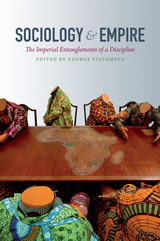 Sociology and Empire: The Imperial Entanglements of a Discipline
George Steinmetz, ed.
Duke University Press, 2013 The revelation that the U.S. Department of Defense had hired anthropologists for its Human Terrain System project—assisting its operations in Afghanistan and Iraq—caused an uproar that has obscured the participation of sociologists in similar Pentagon-funded projects. As the contributors to Sociology and Empire show, such affiliations are not new. Sociologists have been active as advisers, theorists, and analysts of Western imperialism for more than a century. The collection has a threefold agenda: to trace an intellectual history of sociology as it pertains to empire; to offer empirical studies based around colonies and empires, both past and present; and to provide a theoretical basis for future sociological analyses that may take empire more fully into account. In the 1940s, the British Colonial Office began employing sociologists in its African colonies. In Nazi Germany, sociologists played a leading role in organizing the occupation of Eastern Europe. In the United States, sociology contributed to modernization theory, which served as an informal blueprint for the postwar American empire. This comprehensive anthology critiques sociology's disciplinary engagement with colonialism in varied settings while also highlighting the lasting contributions that sociologists have made to the theory and history of imperialism. Contributors. Albert Bergesen, Ou-Byung Chae, Andy Clarno, Raewyn Connell, Ilya Gerasimov, Julian Go, Daniel Goh, Chandan Gowda, Krishan Kumar, Fuyuki Kurasawa, Michael Mann, Marina Mogilner, Besnik Pula, Anne Raffin, Emmanuelle Saada, Marco Santoro, Kim Scheppele, George Steinmetz, Alexander Semyonov, Andrew Zimmerman
Sociology and Its Publics: The Forms and Fates of Disciplinary Organization
Edited by Terence C. Halliday and Morris Janowitz
University of Chicago Press, 1992 Sociology faces troubling developments as it enters its second century in the United States. A loss of theoretical coherence and a sense of disciplinary fragmentation, a decline in the quality of its recruits, the cooptation of its clients, a muted public voice, and sinking prestige in governmental circles—these are only a few of the trends signalling a need for renewed debate about how sociology is organized. In this volume, some of the most authoritative voices in the field confront these conditions, offering a variety of perspectives as they challenge sociologists to self-examination.
Sociology and the Field of Public Health
Edward Suchman
Russell Sage Foundation, 1963 This work is the fifth in a series of bulletins on the applications of sociology to various fields of professional practice prepared under the joint sponsorship of the American Sociological Association and the Russell Sage Foundation. Previous bulletins have dealt with applications of sociology in the fields of corrections, mental health, education, and military organization. Dr. Suchman has performed an important service in his clear delineation of the great potential sociology and related disciplines have for sharpening our understanding of the social factors in health and disease, for intelligent planning and mounting of appropriate action programs, and for improving the organizational structure and institutional mechanisms of the health professions themselves.
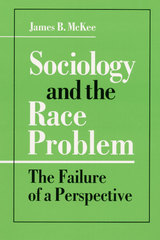 Sociology and the Race Problem: THE FAILURE OF A PERSPECTIVE
James B. McKee
University of Illinois Press, 1993 Tracing developments in the sociology of race relations from the 1920s to the 1960s, McKee maintains that sociologists assumed the United States would move unimpeded toward modernization and assimilation, aided by industrialization and urbanization. The fatal flaw in their perspective was the notion that blacks were culturally inferior, backward, and pre-modern, a people who had lost their own culture and couldn't grasp that of their new society. Designed to detail a failure the author says is widely acknowledged but little examined, this book will be of interest to both specialists and general readers.
"Masterful. . . . McKee transports the reader back to the intellectual world in which the early sociologists worked and does not simply treat them as evil racists. His approach is informed by the sociology of knowledge." -- Lewis M. Killian, author of The Impossible Revolution, Phase 2: Black Power and the American Dream
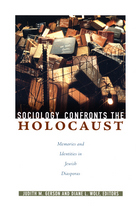 Sociology Confronts the Holocaust: Memories and Identities in Jewish Diasporas
Judith M. Gerson and Diane L. Wolf, eds.
Duke University Press, 2007 This volume expands the intellectual exchange between researchers working on the Holocaust and post-Holocaust life and North American sociologists working on collective memory, diaspora, transnationalism, and immigration. The collection is comprised of two types of essays: primary research examining the Shoah and its aftermath using the analytic tools prominent in recent sociological scholarship, and commentaries on how that research contributes to ongoing inquiries in sociology and related fields. Contributors explore diasporic Jewish identities in the post-Holocaust years; the use of sociohistorical analysis in studying the genocide; immigration and transnationalism; and collective action, collective guilt, and collective memory. In so doing, they illuminate various facets of the Holocaust, and especially post-Holocaust, experience. They investigate topics including heritage tours that take young American Jews to Israel and Eastern Europe, the politics of memory in Steven Spielberg’s collection of Shoah testimonies, and the ways that Jews who immigrated to the United States after the collapse of the Soviet Union understood nationality, religion, and identity. Contributors examine the Warsaw Ghetto Uprising of 1943 in light of collective action research and investigate the various ways that the Holocaust has been imagined and recalled in Germany, Israel, and the United States. Included in the commentaries about sociology and Holocaust studies is an essay reflecting on how to study the Holocaust (and other atrocities) ethically, without exploiting violence and suffering. Contributors. Richard Alba, Caryn Aviv, Ethel Brooks, Rachel L. Einwohner, Yen Le Espiritu, Leela Fernandes, Kathie Friedman, Judith M. Gerson, Steven J. Gold , Debra R. Kaufman, Rhonda F. Levine , Daniel Levy, Jeffrey K. Olick, Martin Oppenheimer, David Shneer, Irina Carlota Silber, Arlene Stein, Natan Sznaider, Suzanne Vromen, Chaim Waxman, Richard Williams, Diane L. Wolf
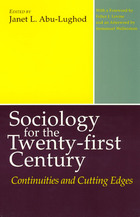 Sociology for the Twenty-first Century: Continuities and Cutting Edges
Edited by Janet L. Abu-Lughod
University of Chicago Press, 1999 These original essays by eminent sociologists probe issues of central importance to North American societies in the twenty-first century.
The chapters in part 1 revise theory and methods to comprehend the economic and political institutions that increasingly dominate the lives of individuals and groups, arguing that these giants must be made more democratically accountable. Part 2 explores the social effects that growing globalization, transnationalization, and information technologies are having on politics, economics, and the environment. The final chapters compare how new immigrants from increasingly diversified backgrounds are being absorbed in Canada and the United States, exploring the impact that immigrants are having on preexisting ethnic minorities and on the dominant political culture.
While it is a major attempt to refocus the discipline of sociology, the book's clear, nontechnical style and its attention to issues of central concern to all citizens make it also highly accessible to nonspecialists.
Contributors are Janet L. Abu-Lughod, Tomas Almaguer, Giovanni Arrighi, Gilles Bourque, Randall Collins, Jules Duchastel, Joe Feagin, Harriet Friedmann, Pierre Hamel, Moon-Kie Jung, Joel Levine, Henri Lustiger-Thaler, Louis Maheu, Joel Perlmann, Saskia Sassen, Gideon Sjoberg, Dorothy Smith, Roger Waldinger, and Barry Wellman.
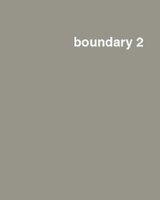 Sociology Hesitant: Thinking with W. E. B. DuBois, Volume 27
Ronald A. T. Judy, ed.
Duke University Press This collection of essays reflects a new, distinctively rigorous engagement with W. E. B. DuBois’s theoretical and philosophical thought. It includes the first publication of DuBois’s important critical essay on the conceptual foundations of sociology as a science, “Sociology Hesitant.” Taking its title from that 1905 essay, S ociology Hesitant draws attention to the ways in which DuBois’s thinking about the “Negro problem” was an explicit effort to think about the problem of historical agency. Spanning a wide array of disciplines, from German studies and sociology to literary criticism, philosophy, and anthropology, with contributions from some of the most outstanding scholars in these fields, Sociology Hesitant contributes to the recognition of DuBois as an important historical figure by focusing on the complexity of his theoretical work. These essays offer an extended interaction with the ideas and projects DuBois formulated in a series of essays written between 1887 and 1910 that take up intricate questions concerning the nature of methodology and the theory of knowledge. Using DuBois’s work as a point of departure, contributors explore current thinking about diverse subjects such as geopolitics and postcolonialism. Demonstrating that engaging the question of race requires rethinking the historical nature of theoretical understanding, this collection brings to light the notion that the struggle for equality is a struggle for freedom of thought in pursuit of truth. Contributors. Kenneth Barkin, Nahum Chandler, Ronald Judy, David Krell, Charles Lemert, Sieglinde D. Lemke, Tommy Lott, Kevin Miles, Abdulkarim Mustapha, Ken Warren
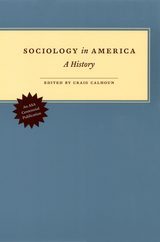 Sociology in America: A History
Edited by Craig Calhoun
University of Chicago Press, 2007 Though the word “sociology” was coined in Europe, the field of sociology grew most dramatically in America. Despite that disproportionate influence, American sociology has never been the subject of an extended historical examination. To remedy that situation—and to celebrate the centennial of the American Sociological Association—Craig Calhoun assembled a team of leading sociologists to produce Sociology in America.
Rather than a story of great sociologists or departments, Sociology in America is a true history of an often disparate field—and a deeply considered look at the ways sociology developed intellectually and institutionally. It explores the growth of American sociology as it addressed changes and challenges throughout the twentieth century, covering topics ranging from the discipline’s intellectual roots to understandings (and misunderstandings) of race and gender to the impact of the Depression and the 1960s.
Sociology in America will stand as the definitive treatment of the contribution of twentieth-century American sociology and will be required reading for all sociologists.
Contributors: Andrew Abbott, Daniel Breslau, Craig Calhoun, Charles Camic, Miguel A. Centeno, Patricia Hill Collins, Marjorie L. DeVault, Myra Marx Ferree, Neil Gross, Lorine A. Hughes, Michael D. Kennedy, Shamus Khan, Barbara Laslett, Patricia Lengermann, Doug McAdam, Shauna A. Morimoto, Aldon Morris, Gillian Niebrugge, Alton Phillips, James F. Short Jr., Alan Sica, James T. Sparrow, George Steinmetz, Stephen Turner, Jonathan VanAntwerpen, Immanuel Wallerstein, Pamela Barnhouse Walters, Howard Winant
The Sociology of Culture
Raymond Williams
University of Chicago Press, 1995 Raymond Williams helped to establish the field of cultural sociology with Marxism and Literature and Culture and Society. Continuing the work of those studies, The Sociology of Culture offers debate on the origin and evolution of culture. It defines sociology of culture as a convergence of various fields and explores ways in which culture is socially mediated.
"A historical analysis of the social organization of culture in terms of its institutions and formations. Insisting that the term sociology of culture implies a convergence of interests and methods, Williams draws from a broad range of examples: Greek drama, Celtic bards, the Pre-Raphaelites, Bloomsbury and modern copyright laws, among others."—Library Journal
Raymond Williams (1921-87) was professor of drama at Cambridge University. His many books include Marxism and Literature, Keywords, Country and the City, and Culture and Society.
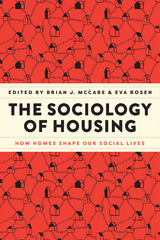 The Sociology of Housing: How Homes Shape Our Social Lives
Edited by Brian J. McCabe and Eva Rosen
University of Chicago Press, 2023 A landmark volume about the importance of housing in social life.
In 1947, the president of the American Sociological Association, Louis Wirth, argued for the importance of housing as a field of sociological research. Now, seventy-five years later, the sociology of housing has still not developed as a distinct subfield, leaving efforts to understand housing’s place in society to other disciplines, such as economics and urban planning. With this volume, the editors and contributors solidify the importance of housing studies within the discipline of sociology by tackling topics like racial segregation, housing instability, the supply of affordable housing, and the process of eviction. In doing so, they showcase the very best traditions of sociology: they draw on diverse methodologies, present unique field sites and data sources, and foreground a range of theoretical approaches to elucidate the relationships between contemporary housing, public policy, and key social outcomes.
The Sociology of Housing is a landmark volume that will be used by researchers and students alike to define this growing subfield, map continued directions for research, and center sociologists in interdisciplinary conversations about housing.
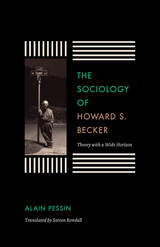 The Sociology of Howard S. Becker: Theory with a Wide Horizon
Alain Pessin
University of Chicago Press, 2017 Howard S. Becker is a name to conjure with on two continents —in the United States and in France. He has enjoyed renown in France for his work in sociology, which in the United States goes back more than fifty years to pathbreaking studies of deviance, professions, sociology of the arts, and a steady stream of books and articles on method. Becker, who lives part of the year in Paris, is by now part of the French intellectual scene, a street-smart jazz pianist and sociologist who offers an answer to the stifling structuralism of Pierre Bourdieu.
French fame has brought French analysis, including The Sociology of Howard S. Becker, written by Alain Pessin and translated into English by Steven Rendall. The book is an exploration of Becker’s major works as expressions of the freedom of possibility within a world of collaborators. Pessin reads Becker’s work as descriptions and ideas that show how society can embody the possibilities of change, of doing things differently, of taking advantage of opportunities for free action. The book is itself a kind of collaboration—Pessin and Becker in dialogue. The Sociology of Howard S. Becker is a meeting of two cultures via two great sociological minds in conversation.
The Sociology of Philosophies: A Global Theory of Intellectual Change
Randall Collins
Harvard University Press, 1998 Randall Collins traces the movement of philosophical thought in ancient Greece, China, Japan, India, the medieval Islamic and Jewish world, medieval Christendom, and modern Europe. What emerges from this history is a social theory of intellectual change, one that avoids both the reduction of ideas to the influences of society at large and the purely contingent local construction of meanings. Instead, Collins focuses on the social locations where sophisticated ideas are formed: the patterns of intellectual networks and their inner divisions and conflicts.
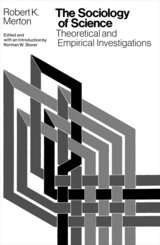 The Sociology of Science: Theoretical and Empirical Investigations
Robert K. Merton
University of Chicago Press, 1979 "The exploration of the social conditions that facilitate or retard the search for scientific knowledge has been the major theme of Robert K. Merton's work for forty years. This collection of papers [is] a fascinating overview of this sustained inquiry. . . . There are very few other books in sociology . . . with such meticulous scholarship, or so elegant a style. This collection of papers is, and is likely to remain for a long time, one of the most important books in sociology."—Joseph Ben-David, New York Times Book Review
"The novelty of the approach, the erudition and elegance, and the unusual breadth of vision make this volume one of the most important contributions to sociology in general and to the sociology of science in particular. . . . Merton's Sociology of Science is a magisterial summary of the field."—Yehuda Elkana, American Journal of Sociology
"Merton's work provides a rich feast for any scientist concerned for a genuine understanding of his own professional self. And Merton's industry, integrity, and humility are permanent witnesses to that ethos which he has done so much to define and support."—J. R. Ravetz, American Scientist
"The essays not only exhibit a diverse and penetrating analysis and a deal of historical and contemporary examples, with concrete numerical data, but also make genuinely good reading because of the wit, the liveliness and the rich learning with which Merton writes."—Philip Morrison, Scientific American
"Merton's impact on sociology as a whole has been large, and his impact on the sociology of science has been so momentous that the title of the book is apt, because Merton's writings represent modern sociology of science more than any other single writer."—Richard McClintock, Contemporary Sociology
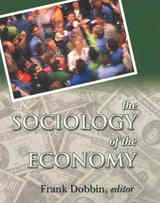 The Sociology of the Economy
Frank Dobbin
Russell Sage Foundation, 2004 The new economic sociology is based on the theory that patterns of economic behavior are shaped by social factors. The Sociology of the Economy brings together a dozen path-breaking empirical studies that explore how social forces—such as shifts in political power, the influence of social networks, or the spread of new economic ideas—shape real-world economic behavior. The contributors—all leading economic sociologists—show these social forces at work in a diverse range of international settings and historical circumstances. Examining why so many American banks followed industry leaders into foreign markets in the 1970s, only to pull back within a few years, Mark Mizruchi and Gerald Davis suggest that social emulation rather than rational calculation led banks to expand globally before there was any evidence that foreign offices paid off. William Schneper and Mauro Guillé show that despite the international diffusion of the hostile takeover during the last twenty years, the practice became widespread only in countries with political institutions conducive to buying and selling entire companies. Thus during the 1990s, the United States and United Kingdom. saw hundreds of hostile takeover bids, while Germany had only a handful, and Japan just one. Deborah Davis explores resistance to the globalization of Western ideas about real-estate ownership—particularly in China where the government has had little success in instituting a market system in place of traditional, family-based real-estate inheritance. And Richard Scott examines the controversial rise of managed care in the American healthcare system, as the quest for market efficiency collided with the ideal of equity in access to health care. Together, these studies provide compelling evidence that economic behavior is not ruled by immutable laws, and is but one realm of social behavior, with its own conventions, roles, and social structures. The Sociology of the Economy demonstrates the vitality of empirical research in the field of economic sociology and the power of sociological models in explaining how markets operate.
Sociology of the Future: Theory, Cases and Annotated Bibliography
Wendell Bell
Russell Sage Foundation, 1971 Concerns itself with the future of sociology, and of all social science. The thirteen authors—among them Wendell Bell, Kai T. Erikson, Scott Greer, Robert Boguslaw, James Mau, and Ivar Oxaal—are oriented toward a redefinition of the role of the social scientist as advisor to policymakers and administrators in all major areas of social concern, for the purpose of studying and shaping the future. This book contains research strategies for such "futurologistic" study, theories on its merits and dangers, as well as an annotated bibliography of social science studies of the future.
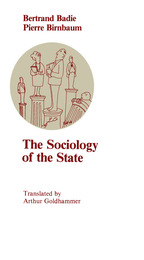 The Sociology of the State
Bertrand Badie and Pierre Birnbaum
University of Chicago Press, 1983 Too often we think of the modern political state as a universal institution, the inevitable product of History rather than a specific creation of a very particular history. Bertrand Badie and Pierre Birnbaum here persuasively argue that the origin of the state is a social fact, arising out of the peculiar sociohistorical context of Western Europe. Drawing on historical materials and bringing sociological insights to bear on a field long abandoned to jurists and political scientists, the authors lay the foundations for a strikingly original theory of the birth and subsequent diffusion of the state.
The book opens with a review of the principal evolutionary theories concerning the origin of the institution proposed by such thinkers as Marx, Durkheim, and Weber. Rejecting these views, the authors set forward and defend their thesis that the state was an "invention" rather than a necessary consequence of any other process. Once invented, the state was disseminated outside its Western European birthplace either through imposition or imitation. The study concludes with concrete analyses of the differences in actual state institutions in France, Prussia, Great Britain, the United States, and Switzerland.
 The Sociology of Work
Theodore Caplow
University of Minnesota Press, 1954 The Sociology of Work was first published in 1954. Minnesota Archive Editions uses digital technology to make long-unavailable books once again accessible, and are published unaltered from the original University of Minnesota Press editions. What are the effects of working conditions, rewards, and habits upon the institution of the family? What are the typical forms of occupational segregation, and what are the effects of such segregation upon the general society? How are the social roles appropriate to each occupation created and sustained? What social processes determine the evolution of occupational groupings and the distribution of population among them? This work, a basic study in occupational sociology, throws light on such questions as these. Professor Caplow describes the occupational system with reference to specialization, occupational status, the formation of professions, mobility, the patterning of individual careers, the occupations of women, and the prospects for continued improvement of working conditions. He draws upon hundreds of empirical studies for his discussions. The book has been warmly received by reviewers and readers. Robert Dublin commented in the American Journal of Sociology: "This volume will long stand as a sourcebook of hypotheses and thesis topics for students of industrial sociology." Writing in the American Sociological Review, George Caspar Homans called it "a wide-ranging and hard-headed study of American jobs, their place and nature." Robert C. Stone said in Social Forces: "The work is a major contribution to the study of social structure." The many specialist workers who are concerned with occupational problems—industrial and applied psychologists, personnel and guidance workers, wage economists, labor relations experts, and others—will find this a valuable reference work. It is, of course, pertinent to the interests of general sociologists and anthropologists, and is used as a text in a number of courses in occupational sociology.
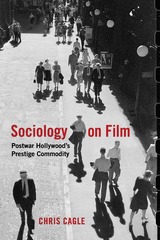 Sociology on Film: Postwar Hollywood's Prestige Commodity
Cagle, Chris
Rutgers University Press, 2016 After World War II, Hollywood’s “social problem films”—tackling topical issues that included racism, crime, mental illness, and drug abuse—were hits with critics and general moviegoers alike. In an era of film famed for its reliance on pop psychology, these movies were a form of popular sociology, bringing the academic discipline’s concerns to a much broader audience. Sociology on Film examines how the postwar “problem film” translated contemporary policy debates and intellectual discussions into cinematic form in order to become one of the preeminent genres of prestige drama. Chris Cagle chronicles how these movies were often politically fractious, the work of progressive directors and screenwriters who drew scrutiny from the House Un-American Activities Committee. Yet he also proposes that the genre helped to construct an abstract discourse of “society” that served to unify a middlebrow American audience. As he considers the many forms of print media that served to inspire social problem films, including journalism, realist novels, and sociological texts, Cagle also explores their distinctive cinematic aesthetics. Through a close analysis of films like Gentleman’s Agreement, The Lost Weekend, and Intruder in the Dust, he presents a compelling case that the visual style of these films was intimately connected to their more expressly political and sociological aspirations. Sociology on Film demonstrates how the social problem picture both shaped and reflected the middle-class viewer’s national self-image, making a lasting impact on Hollywood’s aesthetic direction.
Sociopolitical Aspects of Canal Irrigation in the Valley of Oaxaca
Susan H. Lees
University of Michigan Press, 1973 In order to study canal irrigation in the Valley of Oaxaca, archaeologist Susan H. Lees visited more than 20 villages in the region. She interviewed residents and photographed local water systems. In this volume, Lees analyzes the relationship between water control and local and state government; compares Oaxacan irrigation with that in other regions; and assesses the role of organized labor in the establishment and maintenance of an irrigation system.
Socrates
Sean Sheehan
Haus Publishing, 2007 The ancient world of fifth century Greece, an astonishing period of cultural development that helps situate the originality of Socrates, and to the city-state of Athens in particular. The social, political and cultural currents flowing through Athens are inseparable from an understanding of the events and attitudes that Socrates examined and intellectually dissected.
Socrates among Strangers
Joseph P. Lawrence
Northwestern University Press, 2015 In Socrates among Strangers, Joseph P. Lawrence reclaims the enigmatic sage from those who have seen him either as a prophet of science, seeking the security of knowledge, or as a wily actor who shed light on the dangerous world of politics while maintaining a prudent distance from it. The Socrates Lawrence seeks is the imprudent one, the man who knew how to die. The institutionalization of philosophy in the modern world has come at the cost of its most vital concern: the achievement of life wisdom. Those who have ceased to grow (those who think they know) close their ears to the wisdom of strangers—and Socrates, who stood face to face with death, is the archetypal stranger. His avowal of ignorance, Lawrence suggests, is more needed than ever in an age defined by technical mastery and expert knowledge.
 Socrates and Aristophanes
Leo Strauss
University of Chicago Press, 1996 In one of his last books, Socrates and Aristophanes, Leo Strauss's examines the confrontation between Socrates and Aristophanes in Aristophanes' comedies. Looking at eleven plays, Strauss shows that this confrontation is essentially one between poetry and philosophy, and that poetry emerges as an autonomous wisdom capable of rivaling philosophy.
"Strauss gives us an impressive addition to his life's work—the recovery of the Great Tradition in political philosophy. The problem the book proposes centers formally upon Socrates. As is typical of Strauss, he raises profound issues with great courage. . . . [He addresses] a problem that has been inherent in Western life ever since [Socrates'] execution: the tension between reason and religion. . . . Thus, we come to Aristophanes, the great comic poet, and his attack on Socrates in the play The Clouds. . . [Strauss] translates it into the basic problem of the relation between poetry and philosophy, and resolves this by an analysis of the function of comedy in the life of the city." —Stanley Parry, National Review
Socrates and Legal Obligation
R.E. Allen
University of Minnesota Press, 1981 Socrates and Legal Obligation was first published in 1981. Minnesota Archive Editions uses digital technology to make long-unavailable books once again accessible, and are published unaltered from the original University of Minnesota Press editions. Charged with "impiety" and sentenced to death under the law of Athens, Socrates did not try to disprove the charges or to escape death, but rather held to a different kind of rhetoric, aiming not at persuasion but at truth. In Socrates and Legal Obligation, R.E. Allen contends that Plato's works on Socrates' acceptance of death—the Apology and the Crito — should be considered together and as such constitute a profound treatment of law and of obligation to law. Allen's study of Socrates' thought on these vital issues is accompanied by his own translations of the Apology and the Crito.
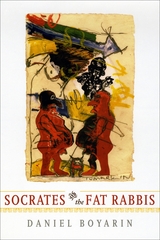 Socrates and the Fat Rabbis
Daniel Boyarin
University of Chicago Press, 2009 What kind of literature is the Talmud? To answer this question, Daniel Boyarin looks to an unlikely source: the dialogues of Plato. In these ancient texts he finds similarities, both in their combination of various genres and topics and in their dialogic structure. But Boyarin goes beyond these structural similarities, arguing also for a cultural relationship. In Socrates and the Fat Rabbis, Boyarin suggests that both the Platonic and the talmudic dialogues are not dialogic at all. Using Michael Bakhtin’s notion of represented dialogue and real dialogism, Boyarin demonstrates, through multiple close readings, that the give-and-take in these texts is actually much closer to a monologue in spirit. At the same time, he shows that there is a dialogism in both texts on a deeper structural level between a voice of philosophical or religious dead seriousness and a voice from within that mocks that very high solemnity at the same time. Boyarin ultimately singles out Menippean satire as the most important genre through which to understand both the Talmud and Plato, emphasizing their seriocomic peculiarity. An innovative advancement in rabbinic studies, as well as a bold and controversial new way of reading Plato, Socrates and the Fat Rabbis makes a major contribution to scholarship on thought and culture of the ancient Mediterranean.
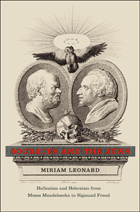 Socrates and the Jews: Hellenism and Hebraism from Moses Mendelssohn to Sigmund Freud
Miriam Leonard
University of Chicago Press, 2012 "What has Athens to do with Jerusalem?” Asked by the early Christian Tertullian, the question was vigorously debated in the nineteenth century. While classics dominated the intellectual life of Europe, Christianity still prevailed and conflicts raged between the religious and the secular. Taking on the question of how the glories of the classical world could be reconciled with the Bible, Socrates and the Jews explains how Judaism played a vital role in defining modern philhellenism. Exploring the tension between Hebraism and Hellenism, Miriam Leonard gracefully probes the philosophical tradition behind the development of classical philology and considers how the conflict became a preoccupation for the leading thinkers of modernity, including Matthew Arnold, Moses Mendelssohn, Kant, Marx, Nietzsche, and Freud. For each, she shows how the contrast between classical and biblical traditions is central to writings about rationalism, political subjectivity, and progress. Illustrating how the encounter between Athens and Jerusalem became a lightning rod for intellectual concerns, this book is a sophisticated addition to the history of ideas.
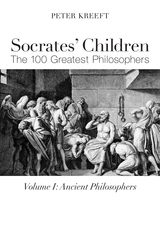 Socrates' Children: Ancient: The 100 Greatest Philosophers
Peter Kreeft
St. Augustine's Press, 2019 This is the first of a four-volume history of philosophy . . . on ancient, medieval, modern, and contemporary philosophy. After the fourth volume is produced in paper, a one-volume clothbound edition, containing all four paperbound editions, will be published.
Kreeft focuses on the “big ideas” that have influenced present people and present times, and includes relevant biographical data, proportionate to its importance for each thinker. Moreover, the aim of the work is to stimulate philosophizing, controversy, and argument. It uses ordinary language and logic, not jargon and symbolic logic, and it is commonsensical (like Aristotle) and existential in the sense that it sees philosophy as something to be lived and experienced in life. Philosophy, after all, is not about philosophy but reality . . . about wisdom, life and death, good and evil, and God.
Kreeft seeks to be simple and direct and clear. But it is not dumbed down and patronizing. It will stretch the reader, but it is meant for beginners, not just scholars. It can be used for college classes or do-it-yourselfers. It emphasizes surprises; remember, “philosophy begins in wonder.” And it includes visual aids: charts, cartoons, line drawings, and drawings of each philosopher.
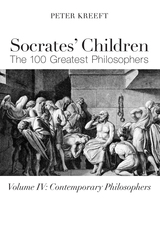 Socrates' Children: Contemporary: The 100 Greatest Philosophers
Peter Kreeft
St. Augustine's Press, 2014 This is the fourth and final part of Kreeft’s four-volume history of philosophy . . . on ancient, medieval, modern, and contemporary philosophy.
Kreeft focuses on the “big ideas” that have influenced present people and present times, and includes relevant biographical data, proportionate to its importance for each thinker. Moreover, the aim of the work is to stimulate philosophizing, controversy, and argument. It uses ordinary language and logic, not jargon and symbolic logic, and it is commonsensical (like Aristotle) and existential in the sense that it sees philosophy as something to be lived and experienced in life. Philosophy, after all, is not about philosophy but reality . . . about wisdom, life and death, good and evil, and God.
Kreeft seeks to be simple and direct and clear. But it is not dumbed down and patronizing. It will stretch the reader, but it is meant for beginnings, not just scholars. It can be used for college classes or do-it-yourselfers. It emphasizes surprises; remember, “philosophy begins in wonder.” And it includes visual aids: charts, cartoons, line drawings, and drawings of philosophers.
Peter Kreeft teaches philosophy at Boston College and is a very prolific author of philosophy and theology texts, including, from St. Augustine’s Press, Socratic Logic, An Ocean Full of Angels, The Philosophy of Jesus, Jesus-Shock, The Sea Within, I Surf Therefore I Am, If Einstein Had Been a Surfer, the first nine titles in his Socrates Meets series, including Philosophy 101 by Socrates and the titles on Machiavelli, Descartes, Hume, Kant, Marx, and Sartre, and the first three volumes of this series, Socrates’ Children: Ancient, Socrates’ Children: Medieval, and Socrates’ Children: Modern.
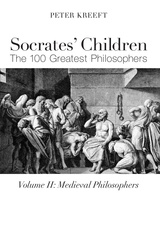 Socrates' Children: Medieval: The 100 Greatest Philosophers
Peter Kreeft
St. Augustine's Press, 2019 This is the second of a four-volume history of philosophy . . . on ancient, medieval, modern, and contemporary philosophy. After the fourth volume is produced in paper, a one-volume clothbound edition, containing all four paperbound editions, will be published.
Kreeft focuses on the “big ideas” that have influenced present people and present times, and includes relevant biographical data, proportionate to its importance for each thinker. Moreover, the aim of the work is to stimulate philosophizing, controversy, and argument. It uses ordinary language and logic, not jargon and symbolic logic, and it is commonsensical (like Aristotle) and existential in the sense that it sees philosophy as something to be lived and experienced in life. Philosophy, after all, is not about philosophy but reality . . . about wisdom, life and death, good and evil, and God.
Kreeft seeks to be simple and direct and clear. But it is not dumbed down and patronizing. It will stretch the reader, but it is meant for beginnings, not just scholars. It can be used for college classes or do-it-yourselfers. It emphasizes surprises; remember, “philosophy begins in wonder.” And it includes visual aids: charts, cartoons, line drawings, and drawings of each philosopher.
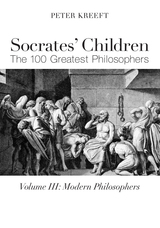 Socrates' Children: Modern: The 100 Greatest Philosophers
Peter Kreeft
St. Augustine's Press, 2016 This is the third of a four-volume history of philosophy . . . on ancient, medieval, modern, and contemporary philosophy. After the fourth volume is produced in paper, a one-volume clothbound edition, containing all four paperbound editions, will be published.
Kreeft focuses on the “big ideas” that have influenced present people and present times, and includes relevant biographical data, proportionate to its importance for each thinker. Moreover, the aim of the work is to stimulate philosophizing, controversy, and argument. It uses ordinary language and logic, not jargon and symbolic logic, and it is commonsensical (like Aristotle) and existential in the sense that it sees philosophy as something to be lived and experienced in life. Philosophy, after all, is not about philosophy but reality . . . about wisdom, life and death, good
and evil, and God.
Kreeft seeks to be simple and direct and clear. But it is not dumbed down and patronizing. It will stretch the reader, but it is meant for beginnings, not just scholars. It can be used for college classes or do-it-yourselfers. It emphasizes surprises; remember, “philosophy begins in wonder.” And it includes visual aids: charts, cartoons, line drawings, and drawings of each philosopher.
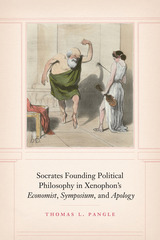 Socrates Founding Political Philosophy in Xenophon's "Economist", "Symposium", and "Apology"
Thomas L. Pangle
University of Chicago Press, 2020 The oeuvre of the Greek historian Xenophon, whose works stand with those of Plato as essential accounts of the teachings of Socrates, has seen a new surge of attention after decades in the shadows. And no one has done more in recent years to spearhead the revival than Thomas L. Pangle. Here, Pangle provides a sequel to his study of Xenophon’s longest account of Socrates, the Memorabilia, expanding the scope of inquiry through an incisive treatment of Xenophon’s shorter Socratic dialogues, the Economist, the Symposium, and the Apology of Socrates to the Jury. What Pangle reveals is that these three depictions of Socrates complement and, in fact, serve to complete the Memorabilia in meaningful ways.
Unlike the Socrates of Plato, Xenophon’s Socrates is more complicated and human, an individual working out the problem of what it means to live well and virtuously. While the Memorabilia defends Socrates by stressing his likeness to conventionally respectable gentlemen, Xenophon’s remaining Socratic texts offer a more nuanced characterization by highlighting how Socrates also diverges from conventions of gentlemanliness in his virtues, behaviors, and peculiar views of quotidian life and governmental rule. One question threads through the three writings: Which way of life best promotes human existence, politics, and economics—that of the Socratic political philosopher with his philosophic virtues or that of the gentleman with his familial, civic, and moral virtues? In uncovering the nuances of Xenophon’s approach to the issue in the Economist, Symposium, and Apology, Pangle’s book cements the significance of these writings for the field and their value for shaping a fuller conception of just who Socrates was and what he taught.
Socrates Meets Hume: The Father of Philosophy Meets the Father of Modern Skepticism
Peter Kreeft
St. Augustine's Press, 2010 Kreeft presents a Socratic examination of Hume’s Enquiry concerning Human Understanding in relation to the skepticism of Hume, posing questions that challenge the concepts that Hume proposed. Kreeft states that Hume is the “most formidable, serious, difficult-to-refute skeptic in the history of modern thought.”
Kreeft invites the reader to take part in the process of refuting Hume’s skeptical arguments, with the great insights of Socrates. Based on an imagination dialogue between Socrates and Hume that takes place in the afterlife, this profound and witty book makes an entertaining and informative exploration of modern philosophy.
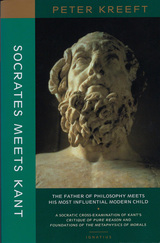 Socrates Meets Kant: The Father of Philosophy Meets His Most Influential Modern Child
Peter Kreeft
St. Augustine's Press, 2009 Immanuel Kant is one of the greatest philosophers in history. As Peter Kreeft here notes, Kant is really two philosophers – a philosopher concerned with how we know things (epistemology) and a philosopher of right and wrong (ethics). If he had written only on either topic, he would still be the most important and influential of the modern philosophers. The combination of the two, though, makes for a formidable thinker, one it would take a figure such as Socrates to confront.
Kreeft’s Socrates reflects what the historical philosopher would likely have made of Kant’s ideas, while also recognizing the greatness, genius, and insightfulness of Kant. The result is a helpful, highly readable, even amusing book. Kant’s philosopher of knowing truly is a “Copernican revolution in philosophy,” as he himself dubbed it. His ethics intended to set out the rational grounds for morality. Did he achieve his goals? What would Socrates say about the matter?
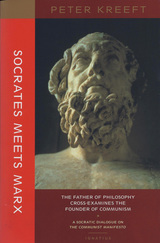 Socrates Meets Marx: The Father of Philosophy Cross-examines the Founder of Communism
Peter Kreeft
St. Augustine's Press, 2003 Humorous, frank, and insightful, this book challenges the reader to step in and take hold of what is right and to cast away what is wrong. Topics covered included such varied subjects as private property, the individual, the Three Philosophies of Man, women, individualism, and more. A wonderful introduction to philosophy for the neophyte, and a joy for the experienced student of thought.
“Imagine two of the most influential thinkers of all time, and two of the most diametrically opposed, thrust together in a no holds barred debate about some of the most important questions: Does man move the world or is he only a puppet of forces beyond his control? Is there a human nature or only market forces? Is Communism the liberator of mankind or a deadly scourge? In Peter Kreeft’s Socrates Meets Marx, the father of philosophy cross examines the founder of communism using the Communist Manifesto, details from the life of Marx himself, and the witnesses of history as evidence to be considered for judgment. If only every edition of the Communist Manifesto would have been bound together with a copy of this book, the world would be a much saner place.” – Christopher Kaczor, author of Proportionalism and the Natural Law Tradition
Socrates Meets Sartre: The Father of Philosophy Cross-examines the Founder of Existentialism
Peter Kreeft
St. Augustine's Press, 2005 Kreeft takes the reader through the world of existentialist philosophy, posing questions that challenge the concepts that Sartre proposed. Based on an imagination dialogue between Socrates and Sartre that takes place in the afterlife, this profound and witty book makes an entertaining and informative exploration of modern philosophy
“Peter Kreeft’s work is (1) unfailingly brilliant, (2) intellectually agile, (3) astonishingly perspicacious, (4) gloriously orthodox, (5) Chestertonian aphoristic.” – Thomas Howard, author of On Being Catholic
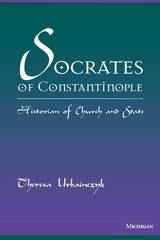 Socrates of Constantinople: Historian of Church and State
Theresa Urbainczyk
University of Michigan Press, 1997 The fourth century c.e. saw the death of the ancient world and the birth of the medieval. Pagan temples crumbled through disuse, while Christian churches sprang up around the fledgling Holy Roman Empire. The emperor Constantine's conversion to Christianity changed history: pagans blamed the decline and fall of the Roman Empire on Christianity, but Christians explained events differently. The church history written by Socrates of Constantinople is one of the most important sources, Eastern or Western, pagan or Christian, for these complex centuries. Socrates of Constantinople: Historian of Church and State is the first detailed study of Socrates' history -- it describes the historical situation in which he wrote his work, and it pulls together all the personal information available about the author. The volume then examines Socrates' own work: how it was composed, which sources were used and how, and it looks at the relationship between Socrates' work and other church histories. It goes on to consider Socrates' attitudes towards bishops, emperors, and their enemies. Socrates is sometimes dismissed by modern scholars for being a poor ecclesiastical historiographer. However, Theresa Urbainczyk carefully demonstrates Socrates' theory of causation, which affected the way he wrote his history, and she argues that he introduced secular material deliberately. In his view arguments and division in the church caused trouble in the state. In other words, when church leaders quibbled over theology, they endangered the state. It was therefore their duty, for the sake of church and state, to unite -- under the emperor. This study not only calls on scholars to reexamine Socrates of Constantinople but makes the wider arguments that the ancients were far less concerned with genre than are modern scholars, and that ecclesiastical history is a continuation of, not a deviation from, political history. Socrates of Constantinople: Historian of Church and State will be of interest to students and scholars interested in late Roman and early Christian history, theology, and historiography. Anyone studying late antiquity will find an examination of Socrates' attitudes essential.
Socrates' Second Sailing: On Plato's Republic
Seth Benardete
University of Chicago Press, 1989 A penetrating close account of the ideas found in Plato's most important work
When the winds fall, the sailor picks up his oars, no longer relying on help outside his own power. This “second sailing,” according to the distinguished classicist Seth Benardete, is the essence of Socratic philosophizing
In this section-by-section commentary on Plato's most important dialogue, Benardete argues that the Republic is such a self-powered, holistic analysis of the beautiful, the good, and the just. This book provides a fresh interpretation of the Republic and a new understanding of philosophy as practiced by Plato and Socrates.
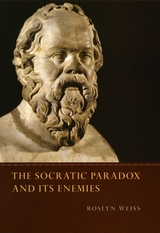 The Socratic Paradox and Its Enemies
Roslyn Weiss
University of Chicago Press, 2006 In The Socratic Paradox and Its Enemies, Roslyn Weiss argues that the Socratic paradoxes—no one does wrong willingly, virtue is knowledge, and all the virtues are one—are best understood as Socrates’ way of combating sophistic views: that no one is willingly just, those who are just and temperate are ignorant fools, and only some virtues (courage and wisdom) but not others (justice, temperance, and piety) are marks of true excellence.
In Weiss’s view, the paradoxes express Socrates’ belief that wrongdoing fails to yield the happiness that all people want; it is therefore the unjust and immoderate who are the fools. The paradoxes thus emerge as Socrates’ means of championing the cause of justice in the face of those who would impugn it. Her fresh approach—ranging over six of Plato’s dialogues—is sure to spark debate in philosophy, classics, and political theory.
“Regardless of whether one agrees or disagrees with Weiss, it would be hard not to admire her extraordinarily penetrating analysis of the many overlapping and interweaving arguments running through the dialogues.”—Daniel B. Gallagher, Classical Outlook “Many scholars of Socratic philosophy . . . will wish they had written Weiss's book, or at least will wish that they had long ago read it.”—Douglas V. Henry, Review of Politics
 Socratic Puzzles
Robert Nozick
Harvard University Press, 1997 One of the foremost philosophers of our time, Robert Nozick continues the Socratic tradition of investigation. This volume, which illustrates the originality, force, and scope of his work, also displays Nozick’s trademark blending of extraordinary analytical rigor with intellectual playfulness. As such, Socratic Puzzles testifies to the great pleasure that both doing and reading philosophy can be.
Comprising essays and philosophical fictions, classics and new work, the book ranges from Socrates to W. V. Quine, from the implications of an Israeli kibbutz to the flawed arguments of Ayn Rand. Nozick considers the figure of Socrates himself as well as the Socratic method (why is it a “method” of getting at the truth?). Many of these essays bring classic methods to bear on new questions about choice. How should you choose in a disconcerting situation (“Newcomb’s Problem”) when your decisions are completely predictable? Why do threats and not offers typically coerce our choices? How do we make moral judgments when we realize that our moral principles have exceptions? Other essays present new approaches to familiar intellectual puzzles, from the stress on simplicity in scientific hypotheses to the tendency of intellectuals to oppose capitalism.
As up to date as the latest reflections on animal rights; as perennial as the essentials of aesthetic merit (doggerel by Isaac Newton goes to prove that changing our view of the world won’t suffice); as whimsical as a look at how some philosophical problems might appear from God’s point of view: these essays attest to the timeliness and timelessness of Nozick’s thinking. With a personal introduction, in which Nozick discusses the origins, tools, and themes of his work, Socratic Puzzles demonstrates how philosophy can constitute a way of life.
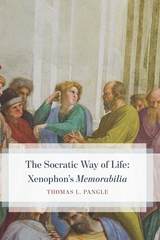 The Socratic Way of Life: Xenophon’s “Memorabilia”
Thomas L. Pangle
University of Chicago Press, 2018 The Socratic Way of Life is the first English-language book-length study of the philosopher Xenophon’s masterwork. In it, Thomas L. Pangle shows that Xenophon depicts more authentically than does Plato the true teachings and way of life of the citizen philosopher Socrates, founder of political philosophy.
In the first part of the book, Pangle analyzes Xenophon’s defense of Socrates against the two charges of injustice upon which he was convicted by democratic Athens: impiety and corruption of the youth. In the second part, Pangle analyzes Xenophon’s account of how Socrates’s life as a whole was just, in the sense of helping through his teaching a wide range of people. Socrates taught by never ceasing to raise, and to progress in answering, the fundamental and enduring civic questions: what is pious and impious, noble and ignoble, just and unjust, genuine statesmanship and genuine citizenship. Inspired by Hegel’s and Nietzsche’s assessments of Xenophon as the true voice of Socrates, The Socratic Way of Life establishes the Memorabilia as the groundwork of all subsequent political philosophy.
 Soda Goes Pop: Pepsi-Cola Advertising and Popular Music
Joanna K. Love
University of Michigan Press, 2019 From its 1939 “Nickel, Nickel” jingle to pathbreaking collaborations with Michael Jackson and Madonna to its pair of X Factor commercials in 2011 and 2012, Pepsi-Cola has played a leading role in drawing the American pop music industry into a synergetic relationship with advertising. This idea has been copied successfully by countless other brands over the years, and such commercial collaboration is commonplace today—but how did we get here? How and why have pop music aesthetics been co-opted to benefit corporate branding? What effect have Pepsi’s music marketing practices in particular had on other brands, the advertising industry, and popular music itself?
Soda Goes Pop investigates these and other vital questions around the evolving relationships between popular music and corporate advertising. Joanna K. Love joins musical analysis, historical research, and cultural theory to trace parallel shifts in these industries over eight decades. In addition to scholarly and industry resources, she draws on first-hand accounts, pop culture magazines, trade press journals, and other archival materials. Pepsi’s longevity as an influential American brand, its legendary commercials, and its pioneering, relentless pursuit of alliances with American musical stars makes the brand a particularly instructive point of focus. Several of the company’s most famous ad campaigns are prime examples of the practice of redaction, whereby marketers select, censor, and restructure musical texts to fit commercial contexts in ways that revise their aesthetic meanings and serve corporate aims. Ultimately, Love demonstrates how Pepsi’s marketing has historically appropriated and altered images of pop icons and the meanings of hit songs, and how these commercials shaped relationships between the American music business, the advertising industry, and corporate brands.
Soda Goes Pop is a rich resource for scholars and students of American studies, popular culture, advertising, broadcast media, and musicology. It is also an accessible and informative book for the general reader, as Love’s musical and theoretical analyses are clearly presented for non-specialist audiences and readers with varying degrees of musical knowledge.
 Soda Science: Making the World Safe for Coca-Cola
Susan Greenhalgh
University of Chicago Press, 2024 Takes readers deep inside the secret world of corporate science, where powerful companies and allied academic scientists mold research to meet industry needs.
The 1990s were tough times for the soda industry. In the United States, obesity rates were exploding. Public health critics pointed to sugary soda as a main culprit and advocated for soda taxes that might decrease the consumption of sweetened beverages—and threaten the revenues of the giant soda companies.
Soda Science tells the story of how industry leader Coca-Cola mobilized allies in academia to create a soda-defense science that would protect profits by advocating exercise, not dietary restraint, as the priority solution to obesity, a view few experts accept. Anthropologist and science studies specialist Susan Greenhalgh discovers a hidden world of science-making—with distinctive organizations, social networks, knowledge-making practices, and ethical claims—dedicated to creating industry-friendly science and keeping it under wraps. By tracing the birth, maturation, death, and afterlife of the science they made, Greenhalgh shows how corporate science has managed to gain such a hold over our lives.
Spanning twenty years, her investigation takes her from the US, where the science was made, to China, a key market for sugary soda. In the US, soda science was a critical force in the making of today’s society of step-counting, fitness-tracking, weight-obsessed citizens. In China, this distorted science has left its mark not just on national obesity policies but on the apparatus for managing chronic disease generally. By following the scientists and their ambitious schemes to make the world safe for Coke, Greenhalgh offers an account that is more global—and yet more human—than the story that dominates public understanding today.
Coke’s research isn’t fake science, Greenhalgh argues; it was real science, conducted by real and eminent scientists, but distorted by its aim. Her gripping book raises crucial questions about conflicts of interest in scientific research, the funding behind familiar messages about health, and the cunning ways giant corporations come to shape our diets, lifestyles, and health to their own needs.
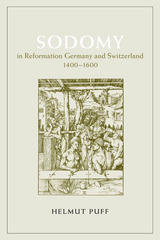 Sodomy in Reformation Germany and Switzerland, 1400-1600
Helmut Puff
University of Chicago Press, 2003 During the late Middle Ages, a considerable number of men in Germany and Switzerland were executed for committing sodomy. Even in the seventeenth century, simply speaking of the act was cause for censorship. Here, in the first history of sodomy in these countries, Helmut Puff argues that accusations of sodomy during this era were actually crucial to the success of the Protestant Reformation. Drawing on both literary and historical evidence, Puff shows that speakers of German associated sodomy with Italy and, increasingly, Catholicism. As the Reformation gained momentum, the formerly unspeakable crime of sodomy gained a voice, as Martin Luther and others deployed accusations of sodomy to discredit the upper ranks of the Church and to create a sense of community among Protestant believers. During the sixteenth century, reactions against this defamatory rhetoric, and fear that mere mention of sodomy would incite sinful acts, combined to repress even court cases of sodomy.
Written with precision and meticulously researched, this revealing study will interest historians of gender, sexuality, and religion, as well as scholars of medieval and early modern history and culture.
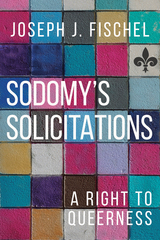 Sodomy's Solicitations: A Right to Queerness
Joseph J. Fischel
Temple University Press, 2025 Joseph Fischel’s provocative book, Sodomy’s Solicitations, builds out a politics of sexual justice that challenges state sex exceptionalism. By tracing several twenty-first century contestations around Louisiana anti-sodomy laws, Fischel examines patterns and practices of sexual injustice that are too easily eclipsed by our collective focus on marginalized identities.
The political stories narrated in Sodomy’s Solicitations are undoubtedly stories of racism, sexism, homophobia, and transphobia, but they are also stories of other political problems—and political possibilities. Fischel indicts U.S. sex offender regulatory regimes as state-sponsored sexual violence; offers a qualified defense for sexual expression in public; and argues that animal sexual abuse laws, with their exemptions for industrial agricultural practices, authorize the suffering they were enacted to deter. He also makes the case that laws criminalizing the exchange of sex for money are unconstitutional, and proposes that the best way to protect trans and queer children might just be to enfranchise them.
Sodomy’s Solicitations champions a right to queerness across rather than within identity formations—a right to relatively unpoliced gender, sexual, and intimate pluralism.
In the series Sexuality Studies
 Soeda and the Making of Modern Japan: Power, Religion and Industry in Northern Kyushu
Ian Neary
Amsterdam University Press, 2025 Soeda’s story provides insights into the last thousand years of Japanese history. It was the location of a strategically important castle, Ganjakujo, from the twelfth century until its destruction by Toyotomi Hideyoshi in 1587. Ganjakujo controlled access to Mt Hiko which was the most important Shugend. monastic community in Kyushu until its dissolution in the 1870s. Coal mines in Soeda in the first half of the twentieth century owned by the Kurauchi family drove the modernization of the town and contributed to the industrialization of the country. During the Pacific war, these mines employed Korean labourers and Allied POWs. The town continued to contribute to national economic growth in the 1950s but, following the switch to oil as the main source of energy, its coal mines closed in the 1960s. For forty years between 1971–2010, Mayor Yamamoto Fumio sheltered the town from the worst impact of being ‘left behind’, yet the town continues to seek a new identity in the twenty-first century.
Sofia Petrovna
Lydia Chukovskaya
Northwestern University Press, 1989 Sofia Petrovna is Lydia Chukovskaya's fictional account of the Great Purge. Sofia is a Soviet Everywoman, a doctor's widow who works as a typist in a Leningrad publishing house. When her beloved son is caught up in the maelstrom of the purge, she joins the long lines of women outside the prosecutor's office, hoping against hope for good news. Confronted with a world that makes no moral sense, Sofia goes mad, a madness which manifests itself in delusions little different from the lies those around her tell every day to protect themselves. Sofia Petrovna offers a rare and vital record of Stalin's Great Purges.
soft bright fluffy: a fiesta of special shape balloons
Nancy Abruzzo
Museum of New Mexico Press, 2021 Every year in October, visitors gather from all over the world to celebrate hot air balloons at the Albuquerque International Balloon Fiesta. The stars of the show are the whimsical Special Shape balloons—these fanciful, brightly colored balloons in the form of bees, trees, pigs, clowns, and more delight children and families as they take flight. Nancy Abruzzo, balloon enthusiast and a pilot herself, presents the magic of Special Shape balloons in this children’s picture book for young readers beautifully illustrated by Nöel Dora Chilton.
Soft Canons: American Women Writers
Karen L. Kilcup
University of Iowa Press, 1999 Recognizing that masculine literary tradition can include marginalized male writers as well as canonized female writers and that traditions themselves change over time, the essays in this insightful and coherent collection also explore the investment of the writers, as well as ninetieth- and twentieth-century readers, in canon creation. As it reconstructs conversations between these earlier authors and initiates new dialogues for today’s readers, Soft Canons offers provocative reconceptualizations of American literary and cultural history.
 Soft City: Building Density for Everyday Life
David Sim, foreword by Jan Gehl
Island Press, 2019 Imagine waking up to the gentle noises of the city, and moving through your day with complete confidence that you will get where you need to go quickly and efficiently. Soft City is about ease and comfort, where density has a human dimension, adapting to our ever-changing needs, nurturing relationships, and accommodating the pleasures of everyday life. How do we move from the current reality in most cites—separated uses and lengthy commutes in single-occupancy vehicles that drain human, environmental, and community resources—to support a soft city approach?
In Soft City David Sim, partner and creative director at Gehl, shows how this is possible, presenting ideas and graphic examples from around the globe. He draws from his vast design experience to make a case for a dense and diverse built environment at a human scale, which he presents through a series of observations of older and newer places, and a range of simple built phenomena, some traditional and some totally new inventions.
Sim shows that increasing density is not enough. The soft city must consider the organization and layout of the built environment for more fluid movement and comfort, a diversity of building types, and thoughtful design to ensure a sustainable urban environment and society.
Soft City begins with the big ideas of happiness and quality of life, and then shows how they are tied to the way we live. The heart of the book is highly visual and shows the building blocks for neighborhoods: building types and their organization and orientation; how we can get along as we get around a city; and living with the weather. As every citizen deals with the reality of a changing climate, Soft City explores how the built environment can adapt and respond.
Soft City offers inspiration, ideas, and guidance for anyone interested in city building. Sim shows how to make any city more efficient, more livable, and better connected to the environment.
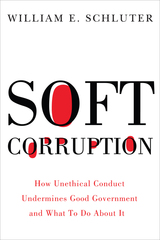 Soft Corruption: How Unethical Conduct Undermines Good Government and What To Do About It
Schluter, William E
Rutgers University Press, 2017 New Jersey has long been a breeding ground for political corruption, and most of it is perfectly legal. Public officials accept favors from lobbyists, give paid positions to relatives, and rig the electoral process to favor their cronies in a system where campaign money is used to buy government results. Such unethical behavior is known as “soft corruption,” and former New Jersey legislator William E. Schluter has been fighting it for the past fifty years. In this searing personal narrative, the former state senator recounts his fight to expose and reform these acts of government misconduct. Not afraid to cite specific cases of soft corruption in New Jersey politics, he paints a vivid portrait of public servants who care more about political power and personal gain than the public good. By recounting events that he witnessed firsthand in the Garden State, he provides dramatic illustrations of ills that afflict American politics nationwide. As he identifies five main forms of soft corruption, Schluter diagnoses the state government’s ethical malaise, and offers concrete policy suggestions for how it might be cured. Not simply a dive through the muck of New Jersey politics, Soft Corruption is an important first step to reforming our nation’s political system, a book that will inspire readers to demand that our elected officials can and must do better. Visit: www.softcorruption.com (http://www.softcorruption.com)
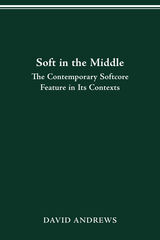 SOFT IN THE MIDDLE: CONTEMPORARY SOFTCORE FEATURE IN ITS CONTEXTS
DAVID ANDREWS
Ohio State University Press, 2006 As the first survey of its kind, Soft in the Middle positions the contemporary softcore feature as a middlebrow form of pornography. This genre of film and video has been produced by a complex and often elusive industry situated in the ambiguous “middle” regions between hardcore and Hollywood.
In meticulous detail, Soft in the Middle demonstrates that softcore’s under-the-radar success and pervasive cultural devaluation may be understood in terms of the “postfeminist” strategies employed by successive generations of producers and distributors, each intent on overcoming obstacles to the mainstream distribution of pornographic material. Softcore and its American precursors became more “feminized” and “female friendly” as their distribution widened, a process hastened in the 1980s by the industry’s transition to private, non-theatrical modes of distribution and exhibition (e.g., home-video outlets and premium-cable networks like Cinemax). One of the byproducts of this development is that contemporary softcore has frequently resorted to what are arguably anti-male or “misandristic” attitudes and depictions. Clearly, the genre challenges traditional assumptions about pornography, including those held by feminists on both sides of “the porn debates.”
Drawing on original industrial research, extensive sampling, and wide-ranging scholarship, Soft in the Middle offers a nuanced look at a discreetly indecent genre whose central commodity has always been female nudity. The book examines the genre’s history, describes its deflationary trajectory, and differentiates the reading patterns of its disparate audiences, including “cult” critics and feminist critics. Naturally, the book also considers the genre’s formal and ideological conventions, surveying its most exemplary subgenres, styles, and motifs—and lavishing particular attention on its most influential studios, directors, and texts.
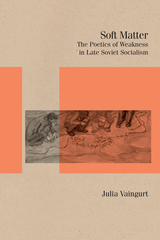 Soft Matter: The Poetics of Weakness in Late Soviet Socialism
Julia Vaingurt
Northwestern University Press, 2025 Identifies and examines a poetics of weakness in Soviet underground literature Artists of the late Soviet era sought new, nonconformist ways of approaching literary fiction, arriving at weakness as a crucial principle of narrative and character formation. Julia Vaingurt argues that this counter-discourse of strategic weakness constituted both an aesthetic strategy and an ethical code, affording like-minded authors a feeling of recognition and commonality and uniting an international community of artists in resistance to the divisiveness of their worlds. Soft Matter: The Poetics of Weakness in Late Soviet Socialism explores the cultivation of weak subjectivity through modes such as gender subversion, queer holy foolishness, intoxication, madness, and writing disorders like graphomania and writer’s block. Identifying the poetics of weakness as formative for Soviet underground literature of the 1960s and ’70s, Vaingurt also traces the inheritance of a far older tradition within Russian culture of salutary weakness. As democratic deliberation continues to be under threat around the world, alternatives to the ubiquitous politics of force are an aesthetic, ethical, and ideological imperative.
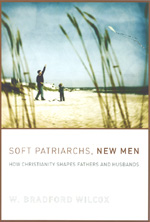 Soft Patriarchs, New Men: How Christianity Shapes Fathers and Husbands
W. Bradford Wilcox
University of Chicago Press, 2004 In the wake of dramatic, recent changes in American family life, evangelical and mainline Protestant churches took markedly different positions on family change. This work explains why these two traditions responded so differently to family change and then goes on to explore how the stances of evangelical and mainline Protestant churches toward marriage and parenting influenced the husbands and fathers that fill their pews.
According to W. Bradford Wilcox, the divergent family ideologies of evangelical and mainline churches do not translate into large differences in family behavior between evangelical and mainline Protestant men who are married with children. Mainline Protestant men, he contends, are "new men" who take a more egalitarian approach to the division of household labor than their conservative peers and a more involved approach to parenting than men with no religious affiliation. Evangelical Protestant men, meanwhile, are "soft patriarchs"—not as authoritarian as some would expect, and given to being more emotional and dedicated to their wives and children than both their mainline and secular counterparts. Thus, Wilcox argues that religion domesticates men in ways that make them more responsive to the aspirations and needs of their immediate families.
Soft Robots for Healthcare Applications: Design, modelling, and control
Shane Xie
The Institution of Engineering and Technology, 2017 Robot-assisted healthcare offers benefits for repetitive, intensive and task specific training compared to traditional manual manipulation performed by physiotherapists. However, a majority of existing rehabilitation devices use rigid actuators such as electric motors or hydraulic cylinders which cannot guarantee the safety of patients; novel soft robots combining soft and compliant actuators with stiff skeletons offer a better alternative. This book focuses on the development of these soft robotics for rehabilitation purposes.
Soft Skills for Engineering: Methodologies, social skills and course development
Iñigo Cuiñas
The Institution of Engineering and Technology, 2025 Employers today are increasingly recognizing the significance of soft skills, and students are well aware of this crucial fact. Upon graduation, students are expected to possess a firm grasp of the technical skills directly related to their completed courses, whether at the bachelor's or master's level. However, there is another realm of skills that can profoundly impact securing initial employment and, more importantly, advancing one's professional journey.
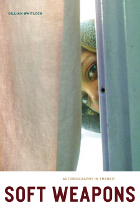 Soft Weapons: Autobiography in Transit
Gillian Whitlock
University of Chicago Press, 2007 Azar Nafisi’s Reading Lolita in Tehran,Marjane Satrapi’s comics, and “Baghdad Blogger” Salam Pax’s Internet diary are just a few examples of the new face of autobiography in an age of migration, globalization, and terror. But while autobiography and other genres of life writing can help us attend to people whose experiences are frequently unseen and unheard, life narratives can also be easily co-opted into propaganda. In Soft Weapons, Gillian Whitlock explores the dynamism and ubiquity of contemporary life writing about the Middle East and shows how these works have been packaged, promoted, and enlisted in Western controversies.
Considering recent autoethnographies of Afghan women, refugee testimony from Middle Eastern war zones, Jean Sasson’s bestsellers about the lives of Arab women, Norma Khouri’s fraudulent memoir Honor Lost, personal accounts by journalists reporting the war in Iraq, Satrapi’s Persepolis, Nafisi’s book, and Pax’s blog, Whitlock explores the contradictions and ambiguities in the rapid commodification of life memoirs. Drawing from the fields of literary and cultural studies, Soft Weapons will be essential reading for scholars of life writing and those interested in the exchange of literary culture between Islam and the West.
Softie: Stories
Megan Howell
West Virginia University Press, 2024 2025 PEN America Finalist, Robert W. Bingham Prize for Debut Short Story Collection 2025 National Book Award Honoree, "5 Under 35" 2025 Gold Medal, Independent Publishing Book Awards (IPPY): Short Fiction In beautifully melancholy stories of magical realism, the women and girls in Softie transform their bodies and test their sanity, trying to find meaning in the loneliest of places. A former child star haunted by a past she can't remember. An Afro-French girl with an obsession for ear lobes. A loner whose only friend is hiding a terrible, otherworldly secret. Each of these stories shares situations that are sometimes fantastical, sometimes commonplace, but always strange. From a Corsican vacation town in its off-season to hospital rooms and a seedy hotel suite in Chicago, experience the every day come fully untethered from reality.
Softimage: Towards a New Theory of the Digital Image
Ingrid Hoelzl and Remi Marie
Intellect Books, 2015 With today’s digital technology, the image is no longer a stable representation of the world, but a programmable view of a database that is updated in real time. It no longer functions as a political and iconic representation, but plays a vital role in synchronic data-to-data relationships. It is not only part of a program, but it contains its own operating code: the image is a program in itself. Softimage aims to account for that new reality, taking readers on a journey that gradually undoes our unthinking reliance on the apparent solidity of the photographic image and building in its place an original and timely theorization of the digital image in all its complexity, one that promises to spark debate within the evolving fields of image studies and software studies.
Softly Undercover
Hanae Jonas
Ohio State University Press, 2024 From its opening insistence on “not love but procedure,” Hanae Jonas’s Softly Undercover explores the possibilities and limitations of ritual and repetition, asking what it means to believe and see clearly. Formally rangy poems map out territories of devotion and divination, contrasting the realm of mystery, dreams, and symbols with the alienation of the mundane. Against a backdrop of intimate relationships, small towns, rural landscapes, and claustrophobic interiors, Jonas casts her gaze on isolation, nostalgia, repression, visibility, and loss while examining the desire “to go anywhere more docile / than facts.” Animated by uncertainty, this elliptical and lyrical debut dwells in the pleasures and hazards of illusion.
 Softly, With Feeling: Joe Wilder and the Breaking of Barriers in American Music
Edward Berger
Temple University Press, 2014 "Joe Wilder set the table. His struggles made it easier for me and many others."--From the Foreword by Wynton Marsalis Trumpeter Joe Wilder is distinguished for his achievements in both the jazz and classical worlds. He was a founding member of the Symphony of the New World, where he played first trumpet, and he performed as lead trumpet and soloist with Lionel Hampton, Jimmy Lunceford, Dizzy Gillespie, and Count Basie. Yet Wilder is also known as a pioneer who broke down racial barriers, the first African American to hold a principal chair in a Broadway show orchestra, and one of the first African Americans to join a network studio orchestra. In Softly, with Feeling, Edward Berger tells Wilder's remarkable story-from his growing up in working-class Philadelphia to becoming one of the first 1,000 black Marines during World War II-with tremendous feeling and extensive reminiscences by Wilder and his colleagues, including renowned Philadelphia-area musicians Jimmy Heath and Buddy DeFranco. Berger also places Wilder's experiences within a broader context of American musical and social history. Wilder's modesty and ability to perform in many musical genres may have prevented him from achieving popular recognition, but in Softly, with Feeling, his legacy and contributions to music and culture are assured.
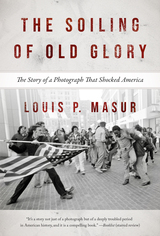 The Soiling of Old Glory: The Story of a Photograph That Shocked America
Louis P. Masur
Brandeis University Press, 2024 Now available as a paperback: the history of a disturbing image, now iconic, that expressed the turmoil of the 1970s and race relations in the United States, with a new preface by the author and a foreword by Ted Landsmark.
In 1976, Boston was bitterly divided over a court order to desegregate its public schools. Plans to bus students between predominantly white and Black neighborhoods stoked backlash and heated protests. Photojournalist Stanley Forman was covering one such demonstration at City Hall when he captured an indelible image: a white protester attacking a Black attorney with the American flag. A second white man grabs at the victim, appearing to assist the assailant.
The photo appeared in newspapers across the nation and went on to win the Pulitzer Prize. In The Soiling of Old Glory, esteemed historian Louis P. Masur reveals what happened the day of the assault and the ways these events reverberated long afterward. He interviews the men involved: Forman, who took the photo; Ted Landsmark, a Black, Yale-educated attorney and an activist; Joseph Rakes, the white protester lunging with the flag, a disaffected student; and Jim Kelly, a local politician who opposed busing, but who helped Landsmark to his feet after protesters knocked him to the ground. The photo, Masur discovers, holds more complexities than initially meet the eye. The flag never made contact with the victim, for example, and Kelly was attempting to protect Landsmark, not hurt him.
Masur delves into the history behind Boston’s efforts to desegregate the schools and the anti-busing protests that shook the city. He examines photography’s power to move, inform, and persuade us, as well as the assumptions we each bring to an image as viewers. And he delves into the flag, to explore how other artists and photographers have shaped, bolstered, or challenged its patriotic significance.
Gripping and deeply researched, The Soiling of Old Glory shows how a disturbing event, frozen on a film, impacted Boston and the nation. In an age of renewed calls for visual literacy and disagreements about the flag’s meaning, Masur’s history, now updated with a new foreword by Ted Landsmark and a new preface by the author, is as relevant as ever.
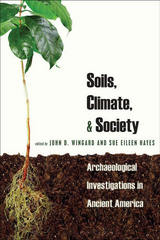 Soils, Climate and Society: Archaeological Investigations in Ancient America
John D. Wingard
University Press of Colorado, 2013 Much recent archaeological research focuses on social forces as the impetus for cultural change. Soils, Climate and Society, however, focuses on the complex relationship between human populations and the physical environment, particularly the land--the foundation of agricultural production and, by extension, of agricultural peoples. The volume traces the origins of agriculture, the transition to agrarian societies, the sociocultural implications of agriculture, agriculture's effects on population, and the theory of carrying capacity, considering the relation of agriculture to the profound social changes that it wrought in the New World. Soil science plays a significant, though varied, role in each case study, and is the common component of each analysis. Soil chemistry is also of particular importance to several of the studies, as it determines the amount of food that can be produced in a particular soil and the effects of occupation or cultivation on that soil, thus having consequences for future cultivators. Soils, Climate and Society demonstrates that renewed investigation of agricultural production and demography can answer questions about the past, as well as stimulate further research. It will be of interest to scholars of archaeology, historical ecology and geography, and agricultural history.
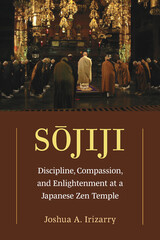 Sojiji: Discipline, Compassion, and Enlightenment at a Japanese Zen Temple
Joshua A. Irizarry
University of Michigan Press, 2022 Sōjiji is one of the two head temples of Sōtō Zen, the largest sect of Japanese Buddhism. The temple is steeped in centuries of culture and tradition, but it is very much rooted in the present and future, performing functions and catering to needs that reflect the changing demographic, social, and religious landscapes of contemporary Japan.
Based on more than fifteen years of fieldwork, interviews, and archival research, Sōjiji: Discipline, Compassion, and Enlightenment at a Japanese Zen Temple immerses the reader in the lives and experiences of the different groups that comprise Sōjiji's contemporary religious community. Through clear and accessible prose, ethnographically-grounded analysis, and emotionally compelling stories, the reader will explore the rich pastiche of daily life and ritual activity at a major Japanese Zen temple in institutional, historical, and social context through the lived practices of its community of clergy, practitioners, parishioners, and visitors.
Sojourner in the Promised Land: Forty Years among the Mormons
Jan Shipps
University of Illinois Press, 2001 Infused with Jan Shipps’s lively curiosity, scholarly rigor, and contagious fascination with a significant subculture, Sojourner in the Promised Land presents a distinctive parallel history in which Shipps surrounds her professional writings about the Latter-day Saints with an ongoing personal description of her encounters with them. By combining a portrait of the dynamic evolution of contemporary Mormonism with absorbing intellectual autobiography, Shipps illuminates the Mormons and at the same time shares with the reader what it has been like to be on the outside of a culture that remains both familiar and strange.
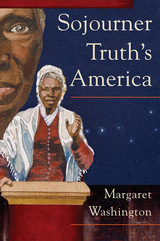 Sojourner Truth's America
Margaret Washington
University of Illinois Press, 2009 This fascinating biography tells the story of nineteenth-century America through the life of one of its most charismatic and influential characters: Sojourner Truth. In an in-depth account of this amazing activist, Margaret Washington unravels Sojourner Truth's world within the broader panorama of African American slavery and the nation's most significant reform era. Born into bondage among the Hudson Valley Dutch in Ulster County, New York, Isabella was sold several times, married, and bore five children before fleeing in 1826 with her infant daughter one year before New York slavery was abolished. In 1829, she moved to New York City, where she worked as a domestic, preached, joined a religious commune, and then in 1843 had an epiphany. Changing her name to Sojourner Truth, she began traveling the country as a champion of the downtrodden and a spokeswoman for equality by promoting Christianity, abolitionism, and women's rights. Gifted in verbal eloquence, wit, and biblical knowledge, Sojourner Truth possessed an earthy, imaginative, homespun personality that won her many friends and admirers and made her one of the most popular and quoted reformers of her times. Washington's biography of this remarkable figure considers many facets of Sojourner Truth's life to explain how she became one of the greatest activists in American history, including her African and Dutch religious heritage; her experiences of slavery within contexts of labor, domesticity, and patriarchy; and her profoundly personal sense of justice and intuitive integrity. Organized chronologically into three distinct eras of Truth's life, Sojourner Truth's America examines the complex dynamics of her times, beginning with the transnational contours of her spirituality and early life as Isabella and her embroilments in legal controversy. Truth's awakening during nineteenth-century America's progressive surge then propelled her ascendancy as a rousing preacher and political orator despite her inability to read and write. Throughout the book, Washington explores Truth's passionate commitment to family and community, including her vision for a beloved community that extended beyond race, gender, and socioeconomic condition and embraced a common humanity. For Sojourner Truth, the significant model for such communalism was a primitive, prophetic Christianity. Illustrated with dozens of images of Truth and her contemporaries, Sojourner Truth's America draws a delicate and compelling balance between Sojourner Truth's personal motivations and the influences of her historical context. Washington provides important insights into the turbulent cultural and political climate of the age while also separating the many myths from the facts concerning this legendary American figure.
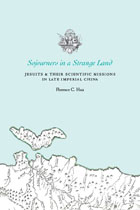 Sojourners in a Strange Land: Jesuits and Their Scientific Missions in Late Imperial China
Florence C. Hsia
University of Chicago Press, 2009 Though Jesuits assumed a variety of roles as missionaries in late imperial China, their most memorable guise was that of scientific expert, whose maps, clocks, astrolabes, and armillaries reportedly astonished the Chinese. But the icon of the missionary-scientist is itself a complex myth. Masterfully correcting the standard story of China Jesuits as simple conduits for Western science, Florence C. Hsia shows how these missionary-scientists remade themselves as they negotiated the place of the profane sciences in a religious enterprise. Sojourners in a Strange Land develops a genealogy of Jesuit conceptions of scientific life within the Chinese mission field from the sixteenth through eighteenth centuries. Analyzing the printed record of their endeavors in natural philosophy and mathematics, Hsia identifies three models of the missionary man of science by their genres of writing: mission history, travelogue, and academic collection. Drawing on the history of early modern Europe’s scientific, religious, and print culture, she uses the elaboration and reception of these scientific personae to construct the first collective biography of the Jesuit missionary-scientist’s many incarnations in late imperial China.
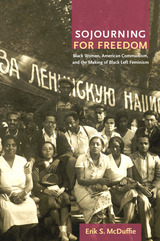 Sojourning for Freedom: Black Women, American Communism, and the Making of Black Left Feminism
Erik S. McDuffie
Duke University Press, 2011 Sojourning for Freedom portrays pioneering black women activists from the early twentieth century through the 1970s, focusing on their participation in the U.S. Communist Party (CPUSA) between 1919 and 1956. Erik S. McDuffie considers how women from diverse locales and backgrounds became radicalized, joined the CPUSA, and advocated a pathbreaking politics committed to black liberation, women’s rights, decolonization, economic justice, peace, and international solidarity. McDuffie explores the lives of black left feminists, including the bohemian world traveler Louise Thompson Patterson, who wrote about the “triple exploitation” of race, gender, and class; Esther Cooper Jackson, an Alabama-based civil rights activist who chronicled the experiences of black female domestic workers; and Claudia Jones, the Trinidad-born activist who emerged as one of the Communist Party’s leading theorists of black women’s exploitation. Drawing on more than forty oral histories collected from veteran black women radicals and their family members, McDuffie examines how these women negotiated race, gender, class, sexuality, and politics within the CPUSA. In Sojourning for Freedom, he depicts a community of radical black women activist intellectuals who helped to lay the foundation for a transnational modern black feminism.
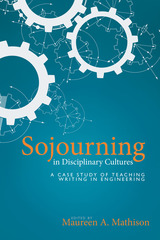 Sojourning in Disciplinary Cultures: A Case Study of Teaching Writing in Engineering
Maureen Mathison
Utah State University Press, 2019 Sojourning in Disciplinary Cultures describes a multiyear project to develop a writing curriculum within the College of Engineering that satisfied the cultural needs of both compositionists and engineers at a large R1 university. Employing intercultural communication theory and an approach to interdisciplinary collaboration that involved all parties, cross-disciplinary colleagues were able to develop useful descriptions of the process of integrating writing with engineering; overcoming conflicts and misunderstandings about the nature of writing, gender bias, hard science versus soft science tensions; and many other challenges.
This volume represents the collective experiences and insights of writing consultants involved in the large-scale curriculum reform of the entire College of Engineering; they collaborated closely with faculty members of the various departments and taught writing to engineering students in engineering classrooms. Collaborators developed syllabi that incorporated writing into their courses in meaningful ways, designed lessons to teach various aspects of writing, created assignments that integrated engineering and writing theory and concepts, and worked one-on-one with students to provide revision feedback. Though interactions were sometimes tense, the two groups––writing and engineering––developed a “third culture” that generally placed students at the center of learning.
Sojourning in Disciplinary Cultures provides a guide to successful collaborations with STEM faculty that will be of interest to WPAs, instructors, and a range of both composition scholars and practitioners seeking to understand more about the role of writing and communication in STEM disciplines.
Contributors:
Linn K. Bekins, Sarah A. Bell, Mara K. Berkland, Doug Downs, April A. Kedrowicz, Sarah Read, Julie L. Taylor, Sundy Watanabe
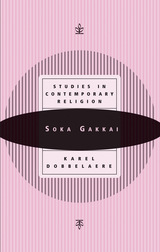 Soka Gakkai: Studies in Contemporary Religion
Karel Dobbelaere
Signature Books, 2001 Why is Soka Gakkai one of the fastest-growing religions in the world today? Founded in post-World War II Japan, this Buddhist movement claims upwards of 15 million members, including more than a half million in North and South America. It sponsors two universities in the United States.
Professor Dobbelaere points to several reasons for its growth. Soka Gakkai emphasizes inner peace rather than rules of behavior or hierarchical allegiance. Sociologists describe it as “trans-modern,” meaning that it blends ancient and contemporary sensitivities such as Buddhist mysticism, science, art and music, a concern for the environment, and social activism.
Initially there was a reliance on aggressive proselyting, later replaced with a more moderate encouragement to share with friends. The movement now engages other faiths in cultural and intellectual exchanges and in pursuit of common ethical objectives. This adaptability and sincere concern for its membership and for society as a whole bode well for its future success.
Soknopaiou Nesos: The University of Michigan Excavations at Dime in 1931-32
Edited by Arthur E. R. Boak
University of Michigan Press, 1935 A change in archaeological venue from prior excavations at Karanis to nearby Soknopaiou Nesos resulted in useful comparable data. Evidence has proven that both sites flourished in the same period, from the first century BCE to the third century CE.
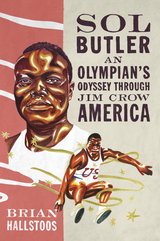 Sol Butler: An Olympian's Odyssey through Jim Crow America
Brian Hallstoos
University of Illinois Press, 2026 A superstar in both football and track and field Sol Butler pioneered the parlaying of sports fame into business prosperity. Brian Hallstoos tells the story of a Black athlete’s canny use of mainstream middle-class values and relationships with white society to transcend the athletic, economic, and social barriers imposed by white supremacy. Butler built on his feats as a high school athlete to become a four-year starter for the football team at Dubuque German College (later the University of Dubuque), a record-setting sprinter and long jumper, and an Olympian at the 1920 Summer Games. Hallstoos follows Butler’s sporting accomplishments while charting how family and interracial communities influenced the ways Butler tested the limits of social and physical mobility and gave him an exceptional ability to discern where he might be most free. From there, Hallstoos turns to Butler’s use of fame to boost his entrepreneurial efforts and his multifaceted success capitalizing on his celebrity in the Black communities of Chicago, New York, and Los Angeles. An engaging look at a forgotten trailblazer, Sol Butler illuminates the multifaceted life of a Black sports entrepreneur.
 Sol Plaatje: Selected Writings
Sol T. Plaatje
Ohio University Press, 1997 Sol Plaatje is one of South Africa’s most important political and literary figures. A pioneer in the history of the black press, he was one of the founders of the African National Congress, a leading spokesman for black opinion throughout his life, and the author of three well-known books: Mafeking Diary, Native Life in South Africa, and his historical novel, Mhudi.
These books are not Plaatje’s only claim to fame. In the course of a prolific career he wrote letters to the press, newspaper articles and editorials, pamphlets, political speeches, evidence to government commissions of enquiry, unpublished autobiographical writings, and many personal letters. Together they provide both an engaging personal record and a very readable – and revealing – commentary on South African social and political affairs during the era of segregation, from 1899 through to Plaatje’s tragically early death in 1932.
What he wrote has a unique historical importance, all the more meaningful from the perspective of the 1990s.
The Sola Valley and the Monte Albán State: A Study of Zapotec Imperial Expansion
Andew K. Balkansky
University of Michigan Press, 2002 Balkansky’s full-coverage survey of the Sola Valley, 65 km southwest of Oaxaca City, documents 120 sites. By combining his data with that of 13 other regions of Oaxaca, he produces a model for Zapotec state expansion that integrates colonization, diplomacy, and military conquest.
 Solar Adobe: Energy, Ecology, and Earthen Architecture
Albert Narath
University of Minnesota Press, 2024 How a centuries-old architectural tradition reemerged as a potential solution to the political and environmental crises of the 1970s
Against the backdrop of a global energy crisis, a widespread movement embracing the use of raw earth materials for building construction emerged in the 1970s. Solar Adobe examines this new wave of architectural experimentation taking place in the United States, detailing how an ancient tradition became a point of convergence for issues of environmentalism, architecture, technology, and Indigenous resistance. Utilized for centuries by the Pueblo people of the American Southwest and by Spanish colonialists, adobe construction found renewed interest as various groups contended with the troubled legacies of modern architecture and an increasingly urgent need for sustainable design practices. In this period of critical experimentation, design networks that included architects, historians, counterculture communities, government weapons labs, and Indigenous activists all looked to adobe as a means to address pressing environmental and political issues. Albert Narath charts the unique capacities of adobe construction across a wide range of contexts, consistently troubling simple distinctions between traditional and modern technologies, high design and vernacular architecture. Drawing insightful parallels between architecture, environmentalism, and movements for Indigenous sovereignty, Solar Adobe stresses the importance of considering the history of the built environment in conjunction with architecture’s larger impact on the natural world.
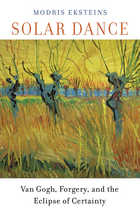 Solar Dance: Van Gogh, Forgery, and the Eclipse of Certainty
Modris Eksteins
Harvard University Press, 2012 In Modris Eksteins’s hands, the interlocking stories of Vincent van Gogh and art dealer Otto Wacker reveal the origins of the fundamental uncertainty that is the hallmark of the modern era. Through the lens of Wacker’s sensational 1932 trial in Berlin for selling fake Van Goghs, Eksteins offers a unique narrative of Weimar Germany, the rise of Hitler, and the replacement of nineteenth-century certitude with twentieth-century doubt.
Berlin after the Great War was a magnet for art and transgression. Among those it attracted was Otto Wacker, a young gay dancer turned art impresario. His sale of thirty-three forged Van Goghs and the ensuing scandal gave Van Gogh’s work unprecedented commercial value. It also called into question a world of defined values and standards that had already begun to erode during the war. Van Gogh emerged posthumously as a hero who rejected organized religion and other suspect sources of authority in favor of art. Self-pitying Germans saw in his biography a series of triumphs—over defeat, poverty, and meaninglessness—that spoke to them directly. Eksteins shows how the collapsing Weimar Republic that made Van Gogh famous and gave Wacker an opportunity for reinvention propelled a third misfit into the spotlight. Taking advantage of the void left by a gutted belief system, Hitler gained power by fashioning myths of mastery.
Filled with characters who delight and frighten, Solar Dance merges cultural and political history to show how upheavals of the early twentieth century gave rise to a search for authenticity and purpose.
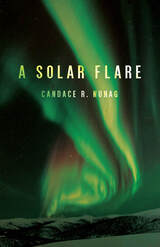 A Solar Flare
Candace R. Nunag
University of Alabama Press, 2025 A hybrid of short works exploring the 1859 Carrington solar flare A flood of illumination, a cosmic cataclysm frozen in time—the Carrington Event of 1859 was the most disruptive solar flare in recorded history, an electromagnetic storm that wiped out telegraph systems across the world and which, if it were to occur today, might well destroy anything on the planet with an electrical circuit. Candace Nunag’s A Solar Flare is a hybrid of short essays, research notes, poems, graphite rubbings, and instant photographs, as well as bits of flash fiction, all simultaneously contemplating technology and memory, while preoccupied with the 1859 solar flare. The ghost of the Carrington Event haunts A Solar Flare with the promise of definitive answers about the narrator’s many severed connections: her digital, supernatural, eastern, western, and analog past. It is an attempt to illuminate the path of thought, wending its way through the tangles of rumination and irreconcilable spaces of wonder.
Solar Interior and Atmosphere
Edited by A. N. Cox, W. C. Livingston, and M. S. Matthews
University of Arizona Press, 1991 Observational data derived from the world’s largest solar telescopes are correlated with theoretical discussions in nuclear and atomic physics by contributors representing a wide range of interests in solar research.
Solar Photovoltaic Energy
Anne Labouret
The Institution of Engineering and Technology, 2010 This professional manual on photovoltaic energy gives designers, installers and managers the tools and methods for:
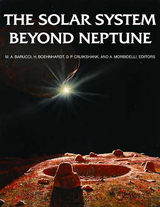 The Solar System Beyond Neptune
Edited by M. A. Barucci, H. Boehnhardt, D. P. Cruikshank, and A. Morbidelli
University of Arizona Press, 2008 A new frontier in our solar system opened with the discovery of the Kuiper Belt and the extensive population of icy bodies orbiting beyond Neptune. Today the study of all of these bodies, collectively referred to as trans-Neptunian objects, reveals them to be frozen time capsules from the earliest epochs of solar system formation. This new volume in the Space Science Series, with one hundred contributing authors, offers the most detailed and up-to-date picture of our solar system’s farthest frontier. Our understanding of trans-Neptunian objects is rapidly evolving and currently constitutes one of the most active research fields in planetary sciences. The Solar System Beyond Neptune brings the reader to the forefront of our current understanding and points the way to further advancement in the field, making it an indispensable resource for researchers and students in planetary science.
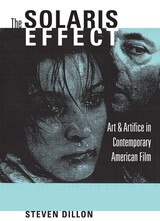 The Solaris Effect: Art and Artifice in Contemporary American Film
By Steven Dillon
University of Texas Press, 2006 What do contemporary American movies and directors have to say about the relationship between nature and art? How do science fiction films like Steven Spielberg's A.I. and Darren Aronofsky's π represent the apparent oppositions between nature and culture, wild and tame? Steven Dillon's intriguing new volume surveys American cinema from 1990 to 2002 with substantial descriptions of sixty films, emphasizing small-budget independent American film. Directors studied include Steven Soderbergh, Darren Aronofsky, Todd Haynes, Harmony Korine, and Gus Van Sant, as well as more canonical figures like Martin Scorcese, Robert Altman, David Lynch, and Steven Spielberg. The book takes its title and inspiration from Andrei Tarkovsky's 1972 film Solaris, a science fiction ghost story that relentlessly explores the relationship between the powers of nature and art. The author argues that American film has the best chance of aesthetic success when it acknowledges that a film is actually a film. The best American movies tell an endless ghost story, as they perform the agonizing nearness and distance of the cinematic image. This groundbreaking commentary examines the rarely seen bridge between select American film directors and their typically more adventurous European counterparts. Filmmakers such as Lynch and Soderbergh are cross-cut together with Tarkovsky and the great French director, Jean-Luc Godard, in order to test the limits and possibilities of American film. Both enthusiastically cinephilic and fiercely critical, this book puts a decade of U.S. film in its global place, as part of an ongoing conversation on nature and art.
 Solarities: Seeking Energy Justice
Ayesha After Oil Collective
University of Minnesota Press, 2022 A collective engages and mirrors the critical need for energy justice and transformation
Solarities considers the possibilities of organizing societies and economies around solar energy, and the challenges of a just and equitable transition away from fossil fuels. Far from presenting solarity as a utopian solution to the climate crisis, it critically examines the ambiguous potentials of solarities: plural, situated, and often contradictory. Here, a diverse collective of activists, scholars, and practitioners critically engage a wide range of relationships and orientations to the sun. They consider the material and infrastructural dimensions of solar power, the decolonial and feminist promises of decentralized energy, solarian relations with more-than-human kin, and the problem of oppressive and weaponized solarities. Solarities imagines—and demands— possibilities for energy justice in this transition.
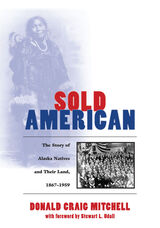 Sold American: The Story of Alaska Natives and Their Land 1867-1959
Donald Craig Mitchell
University of Alaska Press, 2003 Sold American is an account of the history of the federal government's relationship with Alaska's Indian, Eskimo, and Aleut peoples, from the United States' purchase of Alaska from the czar of Russia in 1867 to Alaska statehood in 1959. Don Mitchell describes how, from the arrival of Russian sea otter hunters in the Aleutian Islands in the eighteenth century to the present day, Alaska Natives have participated in the efforts of non-Natives to turn Alaska's bountiful natural resources into dollars, and documents how Alaska Natives, non-Natives, and the society they jointly forged have been changed because of it. Sold American also tells the story of how and why Congress was persuaded that Alaska Natives should be compensated for the extinguishment of their legally cognizable right (known as 'aboriginal title') to use and occupy the land on which they and their ancestors had hunted, fished, and gathered since time immemorial.
Don Mitchell's companion volume, Take My Land, Take My Life, concludes that story by describing the events that in 1971 resulted in Congress's enactment of the Alaska Native Claims Settlement Act, the most generous aboriginal land claims settlement in the nation's history. Insightful and drawn from years of painstaking research of primary source materials, Sold American and Take My Land, Take My Life are an indispensable resource for readers who are interested in the history of the nation's largest state and of the federal government's involvement with Alaska's indigenous peoples.
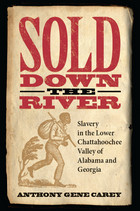 Sold Down the River: Slavery in the Lower Chattahoochee Valley of Alabama and Georgia
Anthony Gene Carey
University of Alabama Press, 2023 Examines a small part of slavery’s North American domain, the lower Chattahoochee river Valley between Alabama and Georgia
In the New World, the buying and selling of slaves and of the commodities that they produced generated immense wealth, which reshaped existing societies and helped build new ones. From small beginnings, slavery in North America expanded until it furnished the foundation for two extraordinarily rich and powerful slave societies, the United States of America and then the Confederate States of America. The expansion and concentration of slavery into what became the Confederacy in 1861 was arguably the most momentous development after nationhood itself in the early history of the American republic. This book examines a relatively small part of slavery’s North American domain, the lower Chattahoochee river Valley between Alabama and Georgia. Although geographically at the heart of Dixie, the valley was among the youngest parts of the Old South; only thirty-seven years separate the founding of Columbus, Georgia, and the collapse of the Confederacy. In those years, the area was overrun by a slave society characterized by astonishing demographic, territorial, and economic expansion. Valley counties of Georgia and Alabama became places where everything had its price, and where property rights in enslaved persons formed the basis of economic activity. Sold Down the River examines a microcosm of slavery as it was experienced in an archetypical southern locale through its effect on individual people, as much as can be determined from primary sources. Published in cooperation with the Historic Chattahoochee Commission and the Troup County Historical Society.
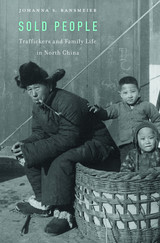 Sold People: Traffickers and Family Life in North China
Johanna S. Ransmeier
Harvard University Press, 2017 A robust trade in human lives thrived throughout North China during the late Qing and Republican periods. Whether to acquire servants, slaves, concubines, or children—or dispose of unwanted household members—families at all levels of society addressed various domestic needs by participating in this market. Sold People brings into focus the complicit dynamic of human trafficking, including the social and legal networks that sustained it. Johanna Ransmeier reveals the extent to which the structure of the Chinese family not only influenced but encouraged the buying and selling of men, women, and children.
For centuries, human trafficking had an ambiguous status in Chinese society. Prohibited in principle during the Qing period, it was nevertheless widely accepted as part of family life, despite the frequent involvement of criminals. In 1910, Qing reformers, hoping to usher China into the community of modern nations, officially abolished the trade. But police and other judicial officials found the new law extremely difficult to enforce. Industrialization, urbanization, and the development of modern transportation systems created a breeding ground for continued commerce in people. The Republican government that came to power after the 1911 revolution similarly struggled to root out the entrenched practice.
Ransmeier draws from untapped archival sources to recreate the lived experience of human trafficking in turn-of-the-century North China. Not always a measure of last resort reserved for times of extreme hardship, the sale of people was a commonplace transaction that built and restructured families as often as it broke them apart.
 Sold Separately: Children and Parents in Consumer Culture
Seiter, Ellen
Rutgers University Press, 1995 "A radical approach to children's TV. . . . Seiter argues cogently that watching Saturday cartoons isn't a passive activity but a tool by which even the very young decode and learn about their culture, and develop creative imagination as well. Bolstered by social, political, developmental, and media research, Seiter ties middle-class aversion to children's TV and mass-market toys to an association with the 'uncontrollable consumerism'––and hence supposed moral failure––of working class members, women, and 'increasingly, children.' . . . Positive guidance for parents uncertain of the role of TV and TV toys in their children's lives."––Kirkus Reviews "Sold Separately is about television and toys, and the various roles that they play in the lives of children and parents. In particular, Seiter examines toy advertising, both in print media and on television; TV commercials; toy-based video for girls, with an in-depth look at "My Little Pony"; action TV for boys, using "Slimer and the Real Ghostbusters" as her case study; and the stores where toys are sold, both Toys "R" Us and the more upscale shops . . . contains many provocative observations."––Women's Review of Books "Ellen Seiter has a holiday message for yuppie parents who feel guilty shopping at Toys "R" Us. The mass-produced toys that dominate the chain's shelves need not be the enemy of every right-thinking parent. "Ghostbuster" figurines and "My Little Pony" can share the toy chest with those sensible wooden blocks."––Chronicle of Higher Education "Emphasizing problems of socioeconomic class, gender, and race stereotyping, this study acknowledges the usual parental complaints about toys like Barbie and G.I. Joe, but insists that they do play an important role in children's culture, especially for working class families. A thought-provoking analysis."––Wilson Library Journal "In this thought provoking study, Seiter reasonably urges parents and others to put aside their own tastes and to understand that children's consumer culture promotes solidarity and sociability among youngsters."––Publishers Weekly "An important book for those desiring an overview of the toy industry's impact on consumer culture . . . [it] presents a fair and well-balanced view of the industry."––Kathleen M. Carson, associate editor, Playthings "A refreshing, thoughtful, and insightful investigation of an enormously important subject––consumer culture for kids. . . . I can't recommend it highly enough."––Janice Radway, Duke University, author of Reading the Romance
 Sold Separately: Children and Parents in Consumer Culture
Seiter, Ellen
Rutgers University Press, 1993 "A radical approach to children's TV. . . . Seiter argues cogently that watching Saturday cartoons isn't a passive activity but a tool by which even the very young decode and learn about their culture, and develop creative imagination as well. Bolstered by social, political, developmental, and media research, Seiter ties middle-class aversion to children's TV and mass-market toys to an association with the 'uncontrollable consumerism'––and hence supposed moral failure––of working class members, women, and 'increasingly, children.' . . . Positive guidance for parents uncertain of the role of TV and TV toys in their children's lives."––Kirkus Reviews "Sold Separately is about television and toys, and the various roles that they play in the lives of children and parents. In particular, Seiter examines toy advertising, both in print media and on television; TV commercials; toy-based video for girls, with an in-depth look at "My Little Pony"; action TV for boys, using "Slimer and the Real Ghostbusters" as her case study; and the stores where toys are sold, both Toys "R" Us and the more upscale shops . . . contains many provocative observations."––Women's Review of Books "Ellen Seiter has a holiday message for yuppie parents who feel guilty shopping at Toys "R" Us. The mass-produced toys that dominate the chain's shelves need not be the enemy of every right-thinking parent. "Ghostbuster" figurines and "My Little Pony" can share the toy chest with those sensible wooden blocks."––Chronicle of Higher Education "Emphasizing problems of socioeconomic class, gender, and race stereotyping, this study acknowledges the usual parental complaints about toys like Barbie and G.I. Joe, but insists that they do play an important role in children's culture, especially for working class families. A thought-provoking analysis."––Wilson Library Journal "In this thought provoking study, Seiter reasonably urges parents and others to put aside their own tastes and to understand that children's consumer culture promotes solidarity and sociability among youngsters."––Publishers Weekly "An important book for those desiring an overview of the toy industry's impact on consumer culture . . . [it] presents a fair and well-balanced view of the industry."––Kathleen M. Carson, associate editor, Playthings "A refreshing, thoughtful, and insightful investigation of an enormously important subject––consumer culture for kids. . . . I can't recommend it highly enough."––Janice Radway, Duke University, author of Reading the Romance
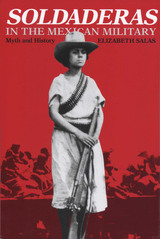 Soldaderas in the Mexican Military: Myth and History
By Elizabeth Salas
University of Texas Press, 1990 Since pre-Columbian times, soldiering has been a traditional life experience for innumerable women in Mexico. Yet the many names given these women warriors—heroines, camp followers, Amazons, coronelas, soldadas, soldaderas, and Adelitas—indicate their ambivalent position within Mexican society. In this original study, Elizabeth Salas explores the changing role of the soldadera, both in reality and as a cultural symbol, from pre-Columbian times up to the present day. Drawing on military archival data, anthropological studies, and oral history interviews, Salas first explores the real roles played by Mexican women in armed conflicts. She finds that most of the functions performed by women easily equate to those performed by revolutionaries and male soldiers in the quartermaster corps and regular ranks. She then turns her attention to the soldadera as a continuing symbol in Mexican and Chicano culture, examining the image of the soldadera in literature, corridos, art, music, and film. Challenging many traditional stereotypes, Salas finds that the fundamental realities of war link all Mexican women, regardless of time period, social class, or nom de guerre.
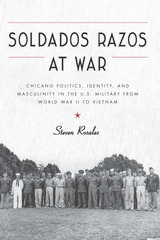 Soldados Razos at War: Chicano Politics, Identity, and Masculinity in the U.S. Military from World War II to Vietnam
Steven Rosales
University of Arizona Press, 2017 What were the catalysts that motivated Mexican American youth to enlist or readily accept their draft notices in World War II, Korea, or Vietnam? In Soldados Razos at War, historian and veteran Steven Rosales chronicles the experiences of Chicano servicemen who fought for the United States, explaining why these men served, how they served, and the impact of their service on their identity and political consciousness. As a social space imbued with its own martial and masculine ethos, the U.S. military offers an ideal way to study the aspirations and behaviors that carried over into the civilian lives of these young men. A tradition of martial citizenship forms the core of the book. Using rich oral histories and archival research, Rosales investigates the military’s transformative potential with a particular focus on socioeconomic mobility, masculinity, and postwar political activism across three generations.
The national collective effort characteristic of World War II and Korea differed sharply from the highly divisive nature of American involvement in Vietnam. Thus, for Mexican Americans, military service produced a wide range of ideological reactions, with the ideals of each often in opposition to the others. Yet a critical thread connecting these diverse outcomes was a redefined sense of self and a willingness to engage in individual and collective action to secure first-class citizenship.
Soldier and Civilian in the Later Roman Empire
Ramsay MacMullen
Harvard University Press The peacetime aspects of the Roman army have never had their historian, Ramsay MacMullen points out. Yet these aspects of military activity became, in the period A.D. 200–400, more and more important and diverse, and drew the army and civilians closer together. The result was militarization of the empire; and, in a lively account of garrison life, army engineering, and similar subjects, MacMullen shows how the process went on. He draws on inscriptions, papyri, and literary sources, and includes relevant illustrations to accompany the discussion of military architecture, equipment, and the social standing of soldiers.
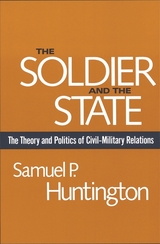 The Soldier and the State: The Theory and Politics of Civil–Military Relations
Samuel P. Huntington
Harvard University Press, 1957 In a classic work, Samuel P. Huntington challenges most of the old assumptions and ideas on the role of the military in society. Stressing the value of the military outlook for American national policy, Huntington has performed the distinctive task of developing a general theory of civil–military relations and subjecting it to rigorous historical analysis.
Part One presents the general theory of the "military profession," the "military mind," and civilian control. Huntington analyzes the rise of the military profession in western Europe in the eighteenth and nineteenth centuries, and compares the civil–military relations of Germany and Japan between 1870 and 1945.
Part Two describes the two environmental constants of American civil–military relations, our liberal values and our conservative constitution, and then analyzes the evolution of American civil–military relations from 1789 down to 1940, focusing upon the emergence of the American military profession and the impact upon it of intellectual and political currents.
Huntington describes the revolution in American civil–military relations which took place during World War II when the military emerged from their shell, assumed the leadership of the war, and adopted the attitudes of a liberal society. Part Three continues with an analysis of the problems of American civil–military relations in the era of World War II and the Korean War: the political roles of the Joint Chiefs of Staff, the difference in civil–military relations between the Truman and Eisenhower administrations, the role of Congress, and the organization and functioning of the Department of Defense. Huntington concludes that Americans should reassess their liberal values on the basis of a new understanding of the conservative realism of the professional military men.
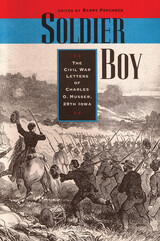 Soldier Boy: The Civil War Letters of Charles O. Musser, 29th Iowa
Barry Popchock
University of Iowa Press, 2008 Blood and anger, bragging and pain, are all part of this young Iowa soldier's vigorous words about war and soldiering. A twenty-year-old farmer from Council Bluffs, Charles O. Musser was one of the 76,000 Iowans who enlisted to wear the blue uniform. He was a prolific writer, penning at least 130 letters home during his term of service with the 29th Iowa Volunteer Infantry.
Soldier Boy makes a significant contribution to the literature of the common soldier in the Civil War. Moreover, it takes a rare look at the Trans-Mississippi theater, which has traditionally been undervalued by historians.
Always Musser dutifully wrote and mailed his letters home. With a commendable eye for historical detail, he told of battles and marches, guerrilla and siege warfare, camp life and garrison soldiering, morale and patriotism, Copperheads and contraband, and Lincoln's reelection and assassination, creating a remarkable account of activities in this almost forgotten backwater of the war.
 Soldier Field: A Stadium and Its City
Liam T. A. Ford
University of Chicago Press, 2009 Sports fans nationwide know Soldier Field as the home of the Chicago Bears. For decades its signature columns provided an iconic backdrop for gridiron matches. But few realize that the stadium has been much more than that. Soldier Field: A Stadium and Its City explores how this amphitheater evolved from a public war memorial into a majestic arena that helped define Chicago. Chicago Tribune staff writer Liam Ford led the reporting on the stadium’s controversial 2003 renovation—and simultaneously found himself unearthing a dramatic history. As he tells it, the tale of Soldier Field truly is the story of Chicago, filled with political intrigue and civic pride. Designed by Holabird and Roche, Soldier Field arose through a serendipitous combination of local tax dollars, City Beautiful boosterism, and the machinations of Mayor “Big Bill” Thompson. The result was a stadium that stood at the center of Chicago’s political, cultural, and sporting life for nearly sixty years before the arrival of Walter Payton and William “The Refrigerator” Perry. Ford describes it all in the voice of a seasoned reporter: the high school football games, track and field contests, rodeos, and even NASCAR races. Photographs, including many from the Chicago Park District’s own collections, capture these remarkable scenes: the swelling crowds at ethnic festivals, Catholic masses, and political rallies. Few remember that Soldier Field hosted Billy Graham and Martin Luther King Jr., Judy Garland and Johnny Cash—as well as Grateful Dead’s final show. Soldier Field captures the dramatic history of Chicago’s stadium on the lake and will captivate sports fans and historians alike.
A Soldier in World War I: The Diary of Elmer W. Sherwood
Robert H. Ferrell
Indiana Historical Society Press, 2004 In April 1917 a sophomore at Indiana University, inspired by his grandfather's service in the Union army during the Civil War, left school and enlisted with a National Guard unit in Indianapolis that became the 150th Field Artillery Regiment. Before long the young man, Elmer W. Sherwood, found himself fighting in France. Sherwood kept a diary of his time overseas, including his experiences in the army of occupation following the war's end. A Soldier in World War I: The Diary of Elmer W. Sherwood captures the words of the Hoosier as he wrote them on the front lines. The book also includes a shipboard diary Sherwood sent home from France shortly after his arrival, which appeared in his hometown newspaper.
 Soldier of Christ: The Life of Pope Pius XII
Robert A. Ventresca
Harvard University Press, 2013 Debates over the legacy of Pope Pius XII and his canonization are so heated they are known as the “Pius wars.” Soldier of Christ moves beyond competing caricatures and considers Pius XII as Eugenio Pacelli, a flawed and gifted man. While offering insight into the pope’s response to Nazism, Robert A. Ventresca argues that it was the Cold War and Pius XII’s manner of engaging with the modern world that defined his pontificate.
Laying the groundwork for the pope’s controversial, contradictory actions from 1939 to 1958, Ventresca begins with the story of Pacelli’s Roman upbringing, his intellectual formation in Rome’s seminaries, and his interwar experience as papal diplomat and Vatican secretary of state. Accused of moral equivocation during the Holocaust, Pius XII later fought the spread of Communism in Western Europe, spoke against the persecution of Catholics in Eastern Europe and Asia, and tackled a range of social and political issues. By appointing the first indigenous cardinals from China and India and expanding missions in Africa while expressing solidarity with independence movements, he internationalized the church’s membership and moved Catholicism beyond the colonial mentality of previous eras.
Drawing from a diversity of international sources, including unexplored documentation from the Vatican, Ventresca reveals a paradoxical figure: a prophetic reformer of limited vision whose leadership both stimulated the emergence of a global Catholicism and sowed doubt and dissension among some of the church’s most faithful servants.
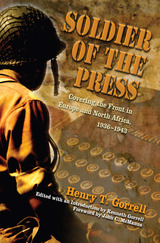 Soldier of the Press: Covering the Front in Europe and North Africa, 1936-1943
Henry T. Gorrell, Edited & Intro by Kenneth Gorrell, & Foreword by John C. McManus
University of Missouri Press, 2009 Threatened by each side in the Spanish Civil War with death as a suspected spy, decorated for saving an airman’s life in a bullet-ridden B-24 Liberator over Greece, war correspondent Henry “Hank” Gorrell often found himself in the thick of the fighting he had been sent to cover. And in reporting on some of the world’s most dangerous stories, he held newspaper readers spellbound with his eyewitness accounts from battlefields across Europe, Africa, and the Middle East. An “exclusive” United Press correspondent, Gorrell saw more than his share of war, even more than most reporters, as his beat took him from the siege of Madrid to the sands of North Africa. His memoir, left in an attic trunk for sixty years, is presented here in its entirety for the first time. As he risks life and limb on the front lines, Gorrell gives us new perspectives on the overall conflict—including some of World War II’s lesser-known battles—as well as insights into behind-the-lines intrigue. Gorrell’s account first captures early Axis intervention in Spain and their tests of new weaponry and blitzkrieg tactics at the cost of millions of Spanish lives. While covering the Spanish Civil War, he was captured by forces from each side and saw many brave men die disillusioned, and his writings offer a contrast to other views of that conflict from writers like Hemingway. But Spain was just Hank’s training ground: before America even entered World War II, he was embedded with Allied forces from seven nations. When war broke out, Gorrell was sent to Hungary, where in Budapest he witnessed pro-Axis enthusiasts toast the victory of Fascist armies. Later in Romania he watched Stalin kick over the Axis apple cart with his invasion of Bessarabia—forcing the Germans to deal with the Russian menace before they had planned. Then he saw twenty Italian divisions mauled in the mountains of Albania, marking the beginning of the end for Mussolini. Combining the historian’s accuracy with the journalist’s on-the-spot reportage, Gorrell provides eyewitness impressions of what war looked, sounded, and felt like to soldiers on the ground. Soldier of the Press weaves personal adventures into the larger fabric of world events, plunging modern readers into the heat of battle while revealing the dangers faced by war correspondents in that bygone era.
Soldier On
Gale Marie Thompson
Tupelo Press, 2015 Fascinated by what emerges from unlikely sources when absorbed into memory, Gale Marie Thompson’s poems delight in what remains: John Wayne, Bewitched, turnip fields, camellias and canned figs, and—of course—kitchens. Soldier On uses the light of the kitchen as a starting (and ending) point to explore remembered spaces, which take on new facets and textures in a flood of associations and the mind’s endless cross-indexing. Inside a world of objects, people, and artifacts, Soldier On constructs the language in which we love and lose love.
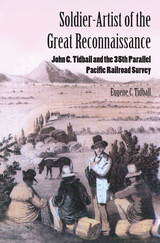 Soldier-Artist of the Great Reconnaissance: John C. Tidball and the 35th Parallel Pacific Railroad Survey
Eugene C. Tidball
University of Arizona Press, 2004 In 1853, a survey team under Amiel W. Whipple set out for California from Fort Smith, Arkansas, in search of a transcontinental railroad route. In addition to studying the engineering obstacles for the railroad, the party collected natural history specimens in this unexplored and dangerous corner of America—and when the expedition entered New Mexico, it requested an additional military escort to guard against hostile Indians. An 1848 West Point graduate, Lt. John C. Tidball had only recently arrived at Fort Defiance in New Mexico, when he received his orders to join the surveying party. Although his official duties were strictly military, Tidball began sketching as soon as he joined the expedition, and his talents made him an indispensable member of Whipple’s artistic staff. This book offers a new look at the Whipple expedition through the lens of a newly discovered manuscript of Tidball’s memoirs—the only firsthand account of the 35th parallel survey to be discovered in nearly thirty years. Soldier-Artist of the Great Reconnaissance includes much of the material from this manuscript, giving us John Tidball’s pungent observations on the journey as well as striking examples of his artwork. Melding the observations of several diarists—which sometimes presented opposing viewpoints—author Eugene Tidball offers a new perspective on the Whipple expedition that focuses on the diverse personalities of the party and on the Native Americans they encountered along the way. The Pacific Railroad Surveys were among the most important explorations of North America ever undertaken. Eugene Tidball’s account of this journey tells how the artistic and literary contributions of John Tidball, his distant cousin, enrich our understanding of what the survey party saw and thought as they crossed the continent. Soldier-Artist of the Great Reconnaissance recaptures the Whipple expedition’s trials and triumphs as it documents the unusual talents of one of its most versatile members.
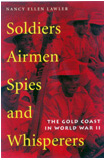 Soldiers, Airmen, Spies, and Whisperers: The Gold Coast in World War II
Nancy Ellen Lawler
Ohio University Press, 2002 The fall of France in June 1940 left the Gold Coast surrounded by potentially hostile French colonies that had rejected de Gaulle’s call to continue the fight, signaling instead their support for Marshall Pétain’s pro-German Vichy regime. In Soldiers, Airmen, Spies, and Whisperers, Nancy Lawler describes how the Gold Coast Regiment, denuded of battalions fighting in East Africa, was rapidly expanded at home to meet the threat of invasion. Professor Lawler also shows how the small airport at Takoradi was converted into a major Royal Air Force base and came to play a vital role in the supply of aircraft to the British Eighth Army in North Africa. The importance of the Gold Coast to the Allied war effort necessitated the creation of elaborate propaganda and espionage networks, the activities of which ranged from rumor-mongering to smuggling and sabotage. The London-based Special Operations Executive moved into West Africa, where it worked closely with de Gaulle’s Free French Intelligence. Lawler presents a vivid account of SOE’s major triumph—masterminding the migration of a substantial part of the Gyaman people from Vichy Côte d’Ivoire to the Gold Coast. As she looks at the plethora of military and civil organizations involved in the war, Lawler throws light on decision making in Brazzaville, London, and Washington. This is an account of World War II in one colony, but the story is firmly set within the wider context of a world at war.
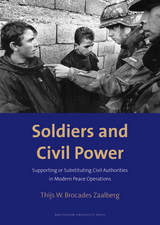 Soldiers and Civil Power: Supporting or Substituting Civil Authorities in Modern Peace Operations
Thijs W. Brocades Zaalberg
Amsterdam University Press, 2006 Since the Cold War, peace operations have become the core focus of many Western armed forces. In these operations, the division between civil and military responsibilities often rapidly blurs.
Among policy makers and in military circles, a debate has erupted regarding the scope of the military in stabilizing and reconstructing war torn societies. Should soldiers, who primarily prepare for combat duties, observe a strict segregation between the "military sphere" and the "civilian sphere" or become involved in "nation building"? Should soldiers be allowed to venture into the murky arena of public security, civil administration, humanitarian relief, and political and social reconstruction?
In Soldiers and Civil Power, Thijs Brocades Zaalberg draws on military records and in-depth interviews with key players to examine international operations in the 1990's in Cambodia, Somalia, Bosnia, and Kosovo. Focusing his historical analysis on the experiences of various battalions in the field, he reveals large gaps between this tactical level of operations, political-strategic decision making and military doctrine. By comparing peace operations to examples of counterinsurgency operations in the colonial era and military governance in World War II, he exposes the controversial, but inescapable role of the Western military in supporting and even substituting civil authorities during military interventions.
At a time when US forces and its allies struggle to restore order in Iraq and Afghanistan, Brocades Zaalberg’s in-depth study is an invaluable resource not only for military historians, but anyone interested in the evolving global mission of armed forces in the twenty-first century.
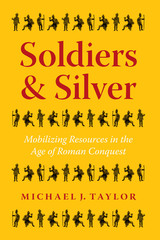 Soldiers and Silver: Mobilizing Resources in the Age of Roman Conquest
By Michael J. Taylor
University of Texas Press, 2020 By the middle of the second century BCE, after nearly one hundred years of warfare, Rome had exerted its control over the entire Mediterranean world, forcing the other great powers of the region—Carthage, Macedonia, Egypt, and the Seleucid empire—to submit militarily and financially. But how, despite its relative poverty and its frequent numerical disadvantage in decisive battles, did Rome prevail? Michael J. Taylor explains this surprising outcome by examining the role that manpower and finances played, providing a comparative study that quantifies the military mobilizations and tax revenues for all five powers. Though Rome was the poorest state, it enjoyed the largest military mobilization, drawing from a pool of citizens, colonists, and allies, while its wealthiest adversaries failed to translate revenues into large or successful armies. Taylor concludes that state-level extraction strategies were decisive in the warfare of the period, as states with high conscription and low taxation raised larger, more successful armies than those that primarily sought to maximize taxation. Comprehensive and detailed, Soldiers and Silver offers a new and sophisticated perspective on the political dynamics and economies of these ancient Mediterranean empires.
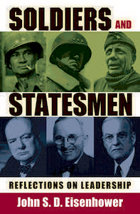 Soldiers and Statesmen: Reflections on Leadership
John S. D. Eisenhower
University of Missouri Press, 2012 Which generals were most influential in World War II? Did Winston Churchill really see himself as culturally "half American"? What really caused the break between Harry S. Truman and Dwight Eisenhower? In Soldiers and Statesmen, John S. D. Eisenhower answers these questions and more, offering his personal reflections on great leaders of our time. The son of President Dwight D. Eisenhower, John S. D. Eisenhower possesses an expert perspective on prominent political and military leaders, giving readers a matchless view on relationships between powerful figures and the president. Eisenhower also had a long military career, coincidentally beginning with his graduation from West Point on D-Day. His unique position as a young Army staff officer and close relationship with his father gave him insider's access to leaders such as Winston Churchill, Harry Truman, George Patton, Douglas MacArthur, Omar Bradley, John Foster Dulles, Mark Clark, Terry Allen, and Matthew Ridgway. He combines personal insight with the specialized knowledge of a veteran soldier and accomplished historian to communicate exclusive perspectives on U. S. foreign relations and leadership. Eisenhower's observations of various wartime leaders began in June 1944, just after the Allied landings in Normandy. On orders from General George C. Marshall, Army chief of staff, Eisenhower sailed from New York aboard the British-liner-turned-American-troopship Queen Maryto join his father, Supreme Commander of the Allied Expeditionary Force, in London, where he stayed for over two weeks. A year later, at the end of the war, Eisenhower accompanied his father as a temporary aide on trips where Ike's former associates were present. In the mid-1950s, Eisenhower's perspective was broadened by his service in a room next to the White House Oval Office during his father's tenure as president. On the light side, Eisenhower has added a special appendix called "Home Movies," in which he reveals amusing and often irreverent vignettes from his life in military service. Eisenhower gives readers both a taste of history from the inside and a rich and relatable memoir filled with compelling remembrances.
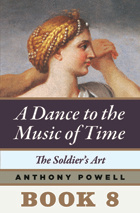 The Soldier's Art: Book 8 of A Dance to the Music of Time
Anthony Powell
University of Chicago Press, 1995 Anthony Powell’s universally acclaimed epic A Dance to the Music of Time offers a matchless panorama of twentieth-century London. Now, for the first time in decades, readers in the United States can read the books of Dance as they were originally published—as twelve individual novels—but with a twenty-first-century twist: they’re available only as e-books.
The eighth volume, The Soldier’s Art (1966), finds Nick in the thankless position of assistant to a rapidly rising Major Widmerpool. The disruptions of war throw up other familiar faces as well: Charles Stringham, heroically emerging from alcoholism but a mere shadow of his former self; Hugh Moreland, his marriage broken, himself nearly so. As the Blitz intensifies, the war’s toll mounts; the fates are claiming their own, and many friends will not be seen again. "Anthony Powell is the best living English novelist by far. His admirers are addicts, let us face it, held in thrall by a magician."--Chicago Tribune
"A book which creates a world and explores it in depth, which ponders changing relationships and values, which creates brilliantly living and diverse characters and then watches them grow and change in their milieu. . . . Powell's world is as large and as complex as Proust's."--Elizabeth Janeway, New York Times
"One of the most important works of fiction since the Second World War. . . . The novel looked, as it began, something like a comedy of manners; then, for a while, like a tragedy of manners; now like a vastly entertaining, deeply melancholy, yet somehow courageous statement about human experience."--Naomi Bliven, New Yorker “The most brilliant and penetrating novelist we have.”--Kingsley Amis
 Soldiers Back Home: The American Legion in Illinois, 1919-1939
Thomas B. Littlewood
Southern Illinois University Press, 2004 This first political and social history of the American Legion in Illinois from its formation in 1919 to the onset of World War II focuses on the organization’s influence on the two political parties and on public opinion at the state and local levels. Gauging the singular influence of the organization in a particularly turbulent time in Illinois and American history, Thomas B. Littlewood argues that the local orientation of individual posts was probably more important to most Legionnaires than the activities of the organization’s national leaders. At the same time, he shows how the conflicts within the Legion mirrored those in the larger society. Soldiers Back Home: The American Legion in Illinois, 1919–1939 traces the origins of the organization nationally and in Illinois, showing it to be the biggest and most politically committed of the several organizations of World War I veterans. First and foremost a fraternal association of men whose military service set them apart, it was also a social mechanism through which veterans contained and redirected their anger and alienation. Littlewood details how the organization developed quickly into a vigorous pressure group working to influence public policy on behalf of veterans and their families. Concentrating at first on the welfare of children who had lost their fathers in the war, the Legion later became involved in a variety of community service activities and served as a political training ground. World War I was the first conflict to be fought by a largely conscripted army. When the soldiers returned from the war, labor unions were pressing hard to organize American workers in rapidly growing concentrations of industry. Business enjoyed generally high esteem, but the ensuing social and economic turbulence led to a shattering of civil order in some parts of Illinois. Prohibition, bootleggers, and organized crime gave way to the crumbling of the economy and the lean, hard years of the Depression. While these events were unfolding in Illinois, rural citizens resisted the rebalancing of power caused by massive migrations of citizens from farm to city by refusing to reapportion legislative districts. Organized thematically, Soldiers Back Home traces the Legion’s impact on politics, community life, labor relations, race relations, and the struggle for veterans’ benefits in Illinois. Littlewood maintains that the Legion experienced significant divisions along regional lines, especially over the issues of the Ku Klux Klan and labor. Likewise, brutal sectional tensions grew between rural and urban populations. Littlewood looks at the role of the veteran in American politics and society, discussing the careers of famed Illinois leaders such as Scott Lucas, William Dawson, and Everett Dirksen and their involvement with the Legion. He also addresses issues of diversity and division within the organization. Resisting the polemics of some contemporary interpretations of the American Legion and avoiding the tone of the sanitized official histories of the organization, Soldiers Back Home is a major contribution to the history of the interwar years—in Illinois and nationally—that will interest general readers and historians alike. The volume is augmented by thirteen illustrations.
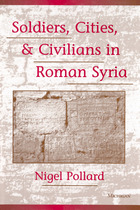 Soldiers, Cities, and Civilians in Roman Syria
Nigel Pollard
University of Michigan Press, 2000 When one mentions "empire," one place probably comes to mind: Rome. The Romans conquered an empire that covered almost the complete extent of their known world. With a territory that large, there was, of course, a huge cultural diversity between the different corners of the empire. How could the central authority in Rome bring together all the different cultures, religions and customs under one administrative umbrella? Soldiers, Cities and Civilians in Roman Syria explores some of the interactions between the imperial authority and the subjected peoples in the territory of Syria. It looks at how the imperial power controlled its subjects, how the agents of the imperial power (administrators, soldiers, etc.) interacted with those subjects, and what impact the imperial power had on the culture of ruled territories. The Roman empire had few civilian administrators, so soldiers were the representatives of imperial government to be encountered by many provincial civilians. Soldiers, Cities and Civilians in Roman Syria employs the evidence of Roman texts and documents and modern archaeological excavation as well as "alternative" sources, such as the literature of the subject peoples and informal texts such as graffiti, to examine the relationship between soldiers and civilians in the important frontier province of Syria.
Nigel Pollard is currently a Research Assistant at the Institute of Archaeology, University of Oxford.
Soldiers Delight Journal: Exploring a Globally Rare Ecosystem
Jack Wennerstrom
University of Pittsburgh Press, 1995 In this journal, the author describes his year-long walking adventures at the Soldiers Delight Natural Environment Area, a rare prairie remnant just seven miles northwest of Baltimore, Maryland. In his quest to make this wild place his “natural home” throughout the course of four distinct seasons, Wennerstrom examines and contemplates rocks and minerals, plants, animals, prairies, floodplains, woodlands, lakes, ponds, pastures, mines and mills, Indian artifacts, as well as local legends and folklore.
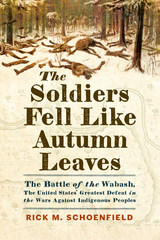 The Soldiers Fell Like Autumn Leaves: The Battle of the Wabash, the United States' Greatest Defeat in the Wars Against Indigenous Peoples
Rick M. Schoenfield
Westholme Publishing, 2024 Along the Wabash River near present-day Fort Recovery, Ohio, on November 4, 1791, the Maumee Confederation of Indigenous tribes destroyed a superior American army led by Revolutionary War veteran General Arthur St. Clair. The victory was so complete, that the Shawnee recalled that the “the ground was covered with the dead and the dying.” Also known as “St. Clair’s Defeat” and “The Battle With No Name”—since the US forces did not know where they were—the Battle of the Wabashwas the United States military’s worst disaster in the history of the Indian wars. This, despite the army having artillery and outnumbering the confederation warriors by almost two to one. It was both the new Republic’s first war and its first undeclared war. Ordered on the offensive by President George Washington in an attempt to exert control of the frontier, the defeat triggered the first Congressional investigation and the first assertion of executive privilege. Often overlooked is thatno other Native American battle in three centuries, from colonial times to Geronimo, affected somany lives. The Maumee Confederation’s victory largely stymied American expansion into the rest of the Northwest Territory, and ultimately into the Great Plains for almost four years. For the Native Peoples this was a respite from the incessant deforestation that accompanied western settlements. While Ohio and the rest of the Old Northwest ultimately succumbed to US control, President James Madison would later warn his fellow Americans that the unchecked destruction of the natural environment was as much of a threat to national security as any enemy along its borders.
The Soldiers Fell Like Autumn Leaves: The Battle of the Wabash, the United States’ Greatest Defeat in the Wars Against Indigenous Peoples by Rick M. Schoenfield places this important war into its cultural, racial, economic, and political context. For the first time, the ecological impact is explored, for at stake in the clash between Woodland Native Americans and white, agrarian settlement, was the fate of a vast forest eco-system. The issue echoes today in the debate over climate change, deforestation, and indigenous control of forest habitats. Based on primary sources, some of which are consulted here for the first time, including a newly discovered muster roll and the recent archaeological study of the battlefield, the author provides the most accurate description of the battle while capturing the drama of what occurred. He also critically examines the information gathering,planning, and tacticsof both the Maumee Confederation and the United States, from the conception of the campaign through the battlefield decisions. By skillfully weaving together the disparate but related parts of the larger history of this battle,The Soldiers Fell Like Autumn Leaves allows the reader to better understand the motivations and long-term consequences of the war against Native peoples in the Americas.
A Soldier's Legacy
Heinrich Boll
Northwestern University Press, 1994 In 1943 Wenk, a German soldier guarding the Normandy coast, finds himself in a war where the main enemies are loneliness and misery. Corruption is rampant in the High Command: supplies are being siphoned off, and the starving, exhausted soldiers must cross their own minefields to steal potatoes from nearby farms.
Against all army rank and protocol, Wenk becomes friends with Lieutenant Schelling, whose protests on behalf of his men have incurred the wrath of another officer. When the company is transferred to the Russian front, heightened fear, suspicion, and mistrust explore the soldiers' barely maintained order into a chaos of desperation.
"The great strength of this short novel is its steadfast refusal to glamorize. . . . The clear-eyed wisdom that emerges from it makes it a remarkable achievement." --William Boyd, New Republic
"Böll is a master storyteller." --New York Times
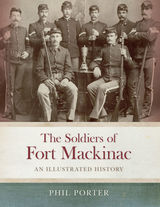 The Soldiers of Fort Mackinac: An Illustrated History
Phil Porter
Michigan State University Press, 2018 Fort Mackinac was home to more than 4,500 British and U.S. soldiers between 1780 and 1895. These soldiers constructed buildings and walls, drilled on the parade ground, marched sentry beats, and performed myriad maintenance and administrative duties in support of the fort’s strategic military function. That function varied greatly over the fort’s 115-year history. During the first half-century of its occupation the island fort protected and controlled the upper Great Lakes fur trade and served as an administrative center for maintaining alliances with the region’s Native Americans. By the late 1830s the decline of the fur trade and acquisition of Native American lands that resulted in the creation of the state of Michigan diminished the fort’s strategic value. It was not until after the Civil War that Fort Mackinac regained a role of importance, when it became the headquarters for the country’s second national park. In this volume, Mackinac State Historic Parks’ director Phil Porter tells the story of Fort Mackinac through the lives and activities of its soldiers. This book is profusely illustrated with more than 150 historic oil portraits, maps, and photographs collected from libraries and museums across the United States and Great Britain. Military historians and readers interested in Mackinac’s rich military history will appreciate the interesting and visually compelling story of soldier life at Fort Mackinac in The Soldiers of Fort Mackinac: An Illustrated History.
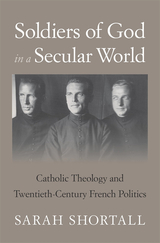 Soldiers of God in a Secular World: Catholic Theology and Twentieth-Century French Politics
Sarah Shortall
Harvard University Press, 2021 Winner of a Catholic Media Association Book Award
A revelatory account of the nouvelle théologie, a clerical movement that revitalized the Catholic Church’s role in twentieth-century French political life.
Secularism has been a cornerstone of French political culture since 1905, when the republic formalized the separation of church and state. At times the barrier of secularism has seemed impenetrable, stifling religious actors wishing to take part in political life. Yet in other instances, secularism has actually nurtured movements of the faithful. Soldiers of God in a Secular World explores one such case, that of the nouvelle théologie, or new theology. Developed in the interwar years by Jesuits and Dominicans, the nouvelle théologie reimagined the Church’s relationship to public life, encouraging political activism, engaging with secular philosophy, and inspiring doctrinal changes adopted by the Second Vatican Council in the 1960s.
Nouveaux théologiens charted a path between the old alliance of throne and altar and secularism’s demand for the privatization of religion. Envisioning a Church in but not of the public sphere, Catholic thinkers drew on theological principles to intervene in political questions while claiming to remain at arm’s length from politics proper. Sarah Shortall argues that this “counter-politics” was central to the mission of the nouveaux théologiens: by recoding political statements in the ostensibly apolitical language of doctrine, priests were able to enter into debates over fascism and communism, democracy and human rights, colonialism and nuclear war. This approach found its highest expression during the Second World War, when the nouveaux théologiens led the spiritual resistance against Nazism. Claiming a powerful public voice, they collectively forged a new role for the Church amid the momentous political shifts of the twentieth century.
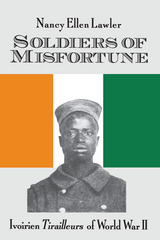 Soldiers Of Misfortune: lvoirien Tirailleurs of World War II
Nancy Ellen Lawler
Ohio University Press, 1992 This is a study of the African veterans of a European war. It is a story of men from the Cote d‘Ivoire, many of whom had seldom traveled more than a few miles from their villages, who served France as tirailleurs (riflemen) during World War II. Thousands of them took part in the doomed attempt to hold back the armies of the Third Relch in 1940; many were to spend the rest of the war as prisoners in Germany or Occupied France. Others more fortunate came under the authority of Vichy France, and were deployed in the Defense of the “Motherland” and its overseas possessions against the threat posed by the Allies. By 1943, the tirailleur regiments had passed into the service of de Gaulle’s free French and under Allied command, played a significant role in the liberation of Europe. In describing these complex events, Dr. Lawler draws upon archives in both France and the Cote d’Ivoire. She also carried out an extensive series of interviews with Ivoirien veterans principally, but not exclusively, from the Korhogo region. The vividness of their testimony gives this study a special character. They talk freely not only of their wartime exploits, but also of their experiences after repatriation. Lawler allows them to speak for themselves. They express their hatred of forced labor and military conscription, which were features of the colonial system, yet at the same time reveal a pride in having come to the defense of France. They describe their role in the nationalist struggle, as foot soldiers of Felix Houphouet-Boigny, but also convey their sense of having become a lost generation. They recognize that their experiences as French soldiers had become sadly irrelevant in a new nation in quest of its history.
Soldiers of Misfortune: The Somervell and Mier Expeditions
By Sam W. Haynes
University of Texas Press, 1990 The Somervell and Mier Expeditions of 1842, culminating in the famous "black bean episode" in which Texas prisoners drew white or black beans to determine who would be executed by their Mexican captors, still capture the public imagination in Texas. But were the Texans really martyrs in a glorious cause, or undisciplined soldiers defying their own government? How did the Mier Expedition affect the border disputes between the Texas Republic and Mexico? What role did Texas President Sam Houston play? These are the questions that Sam Haynes addresses in this very readable book, which includes many dramatic excerpts from the diaries and letters of expedition participants.
|
|
